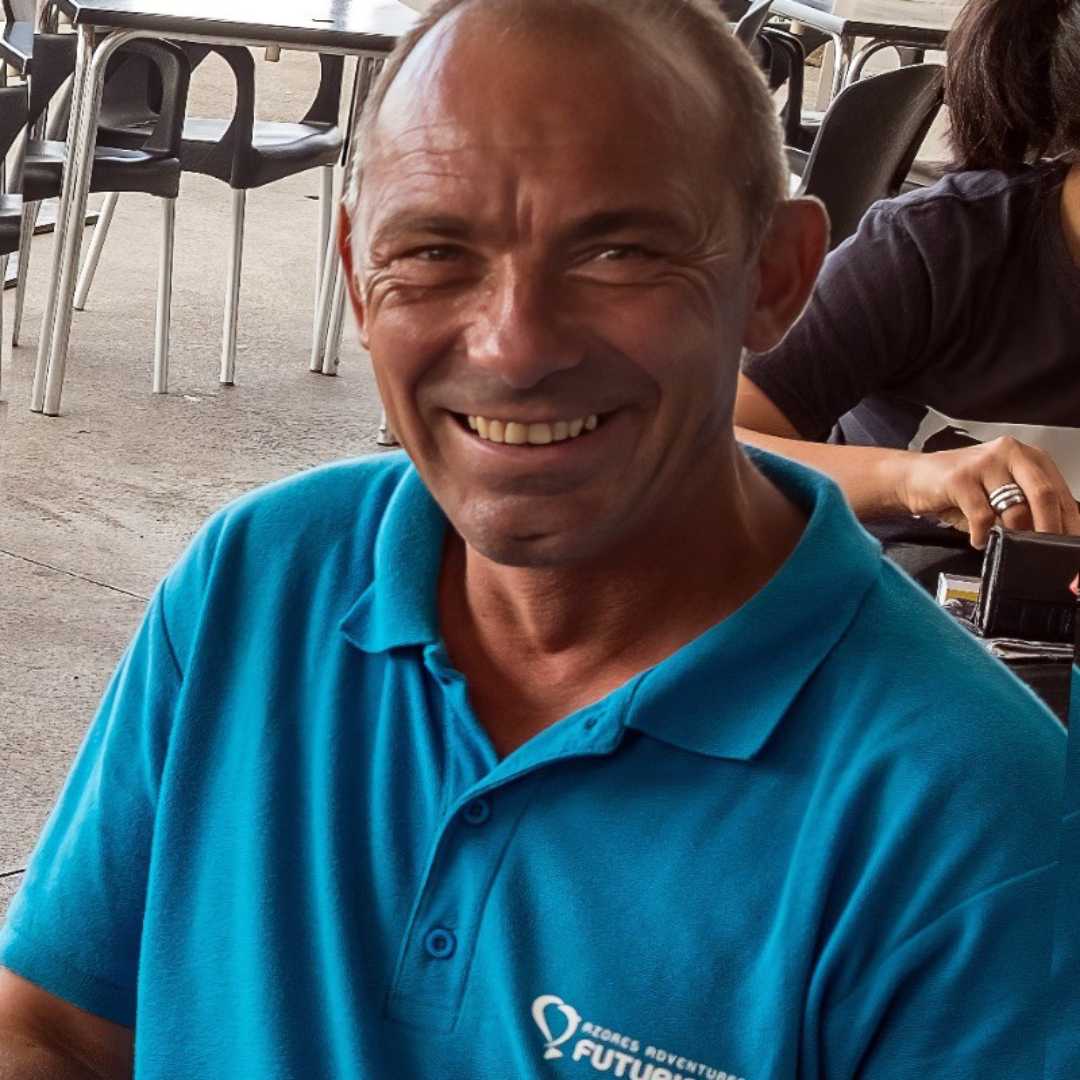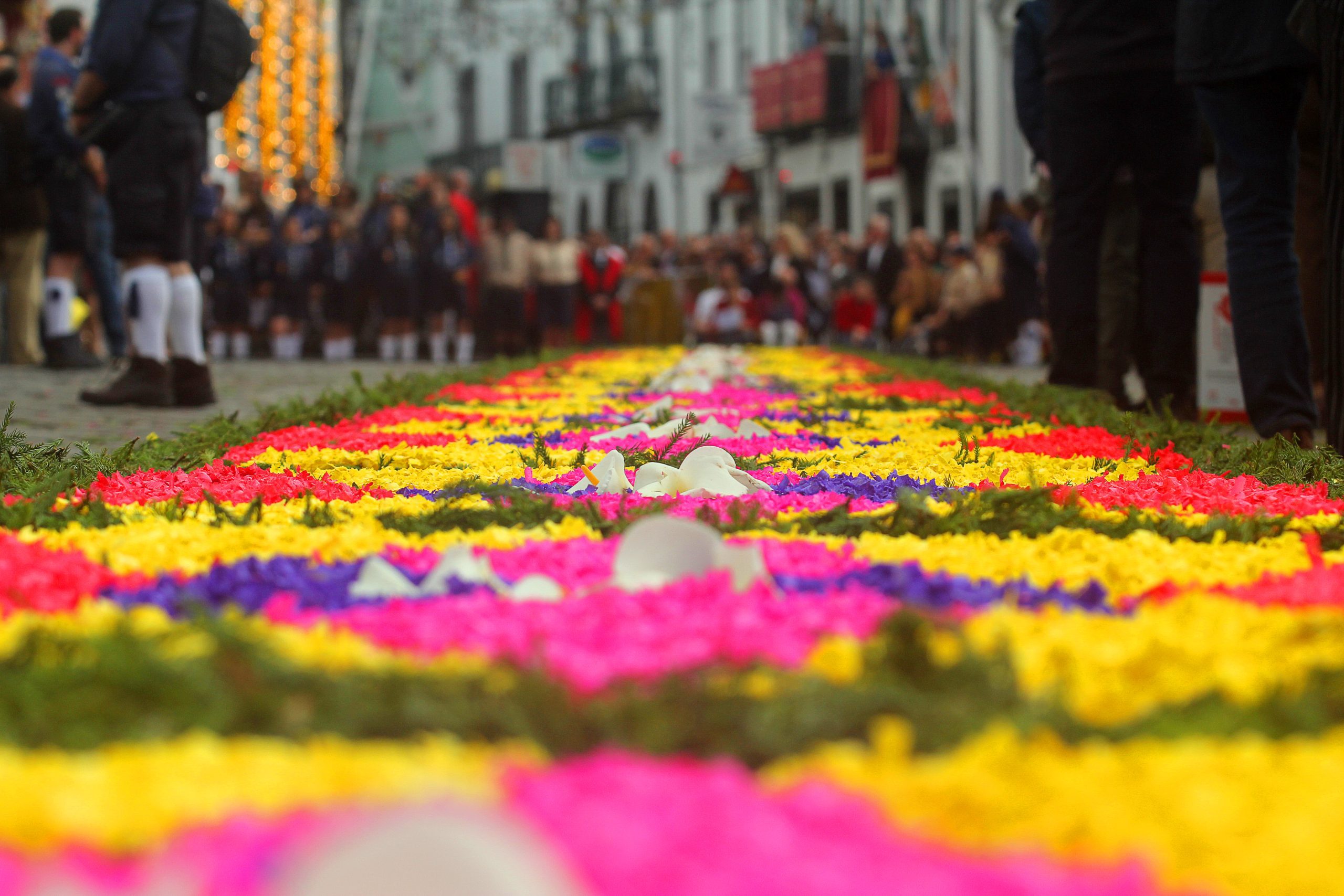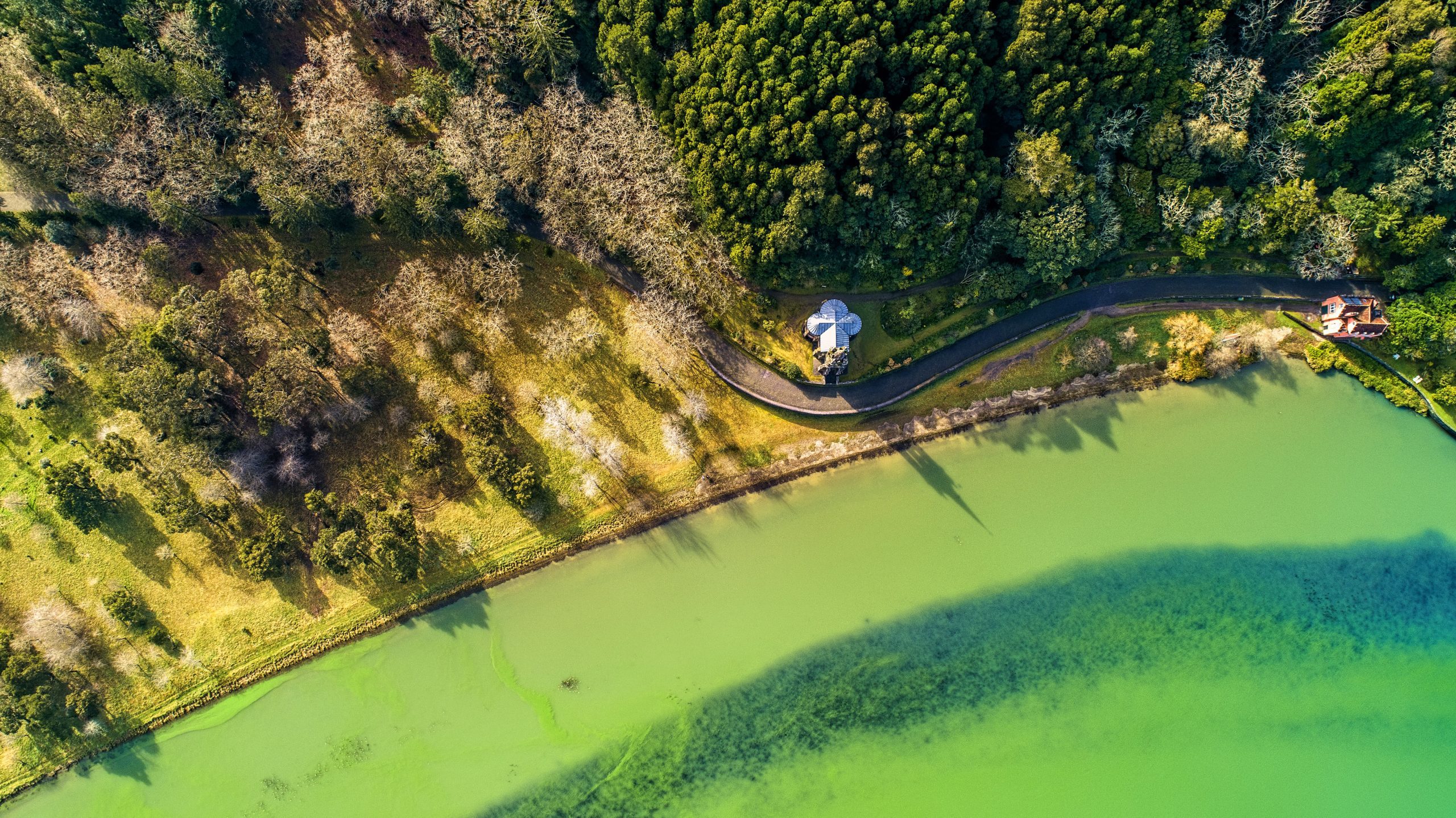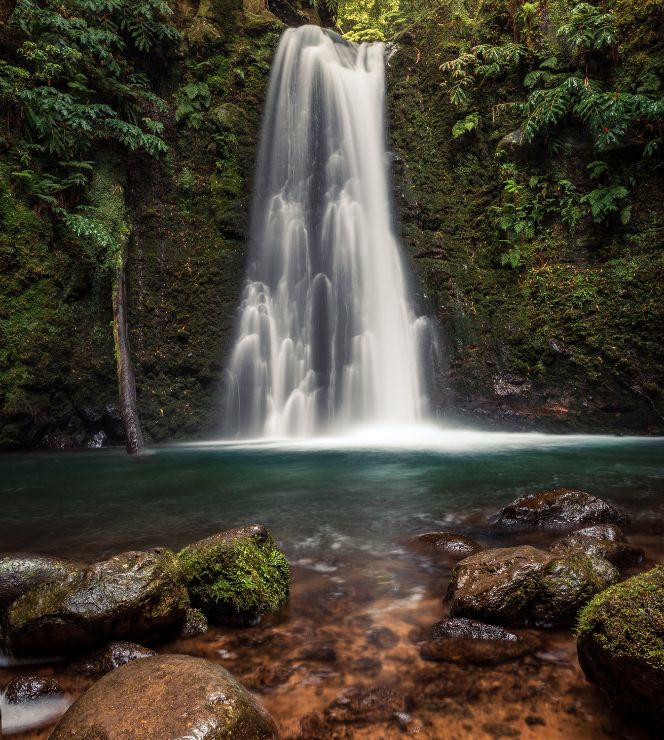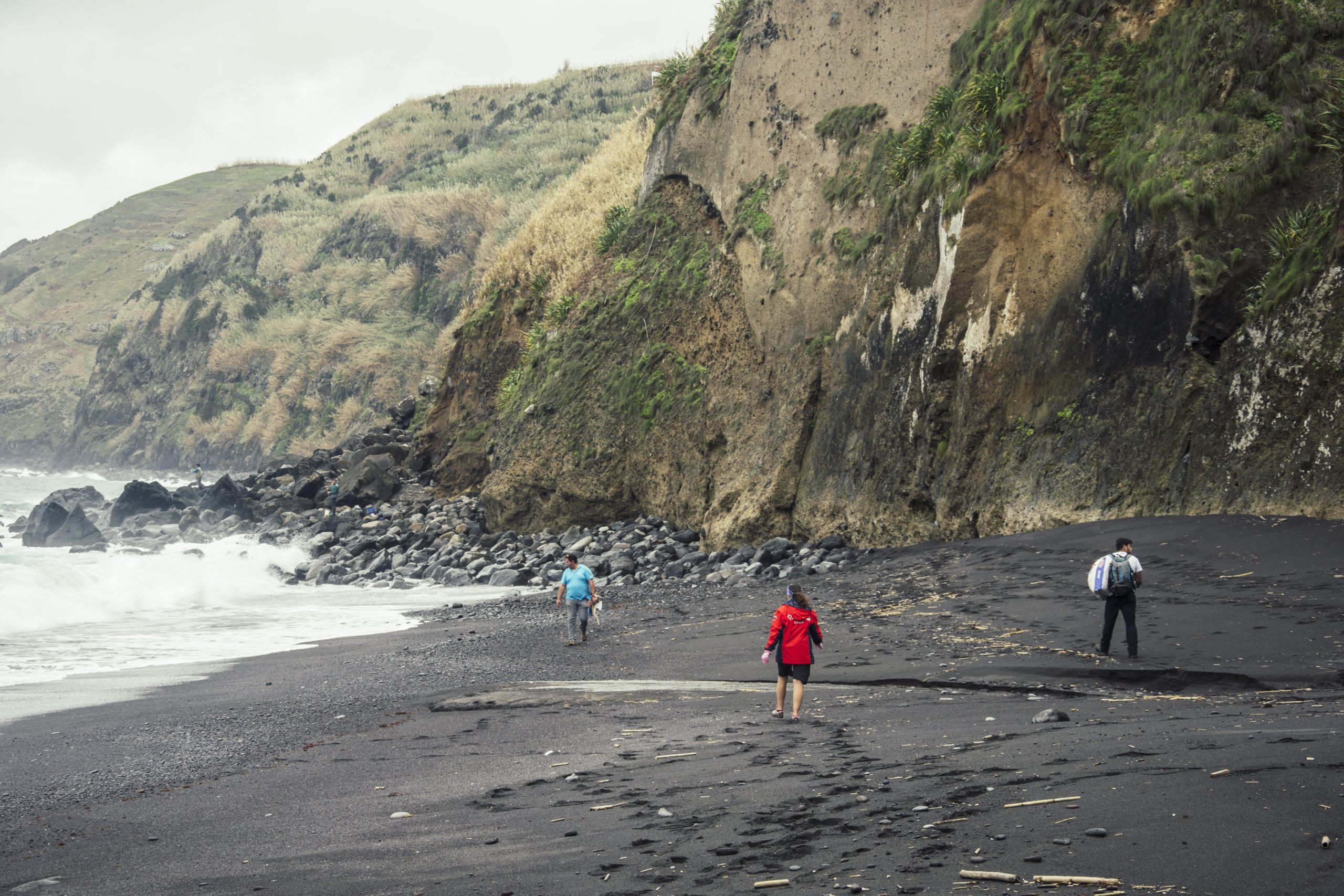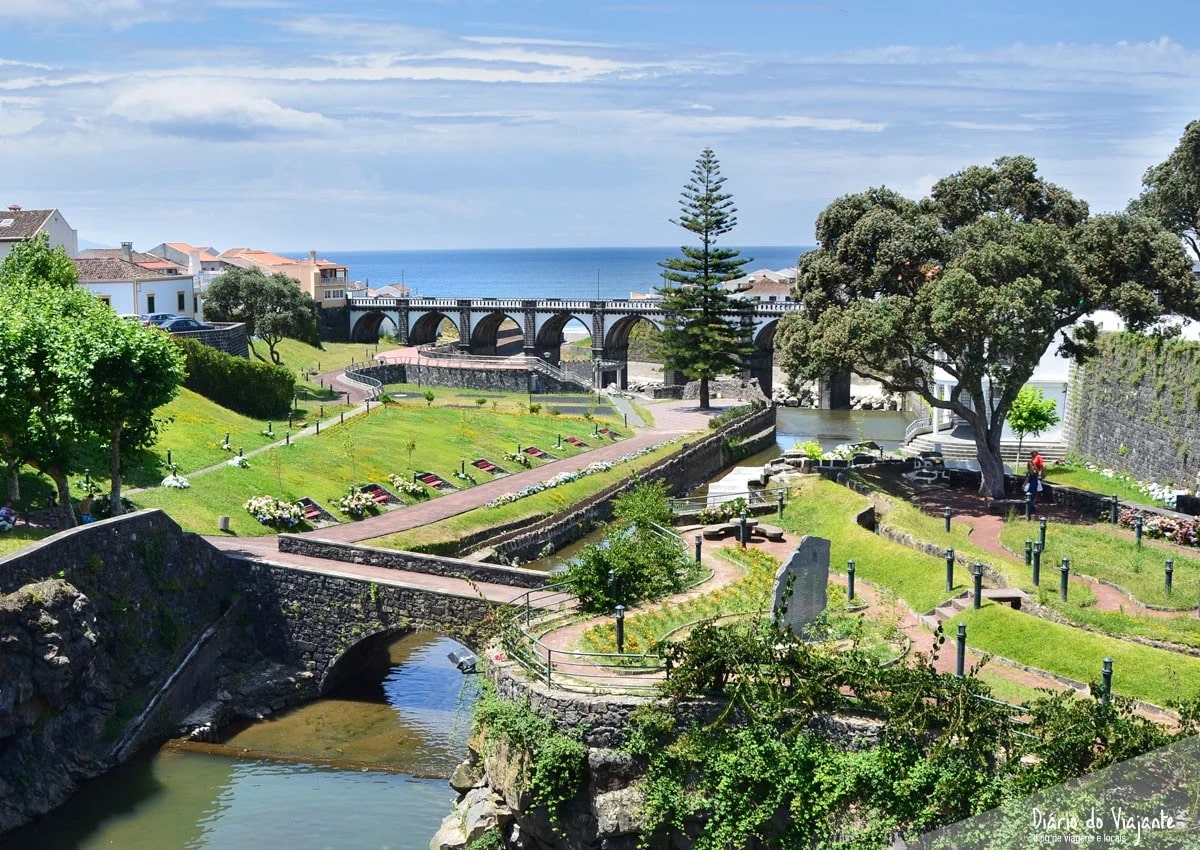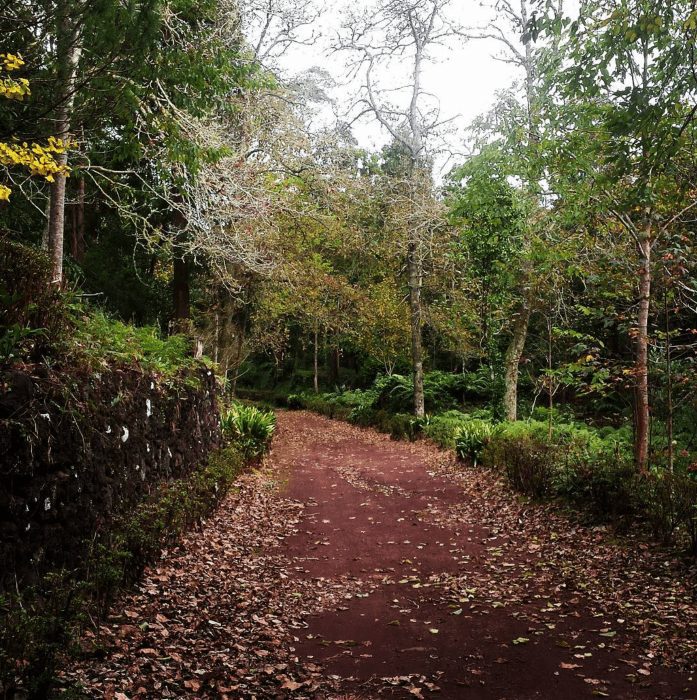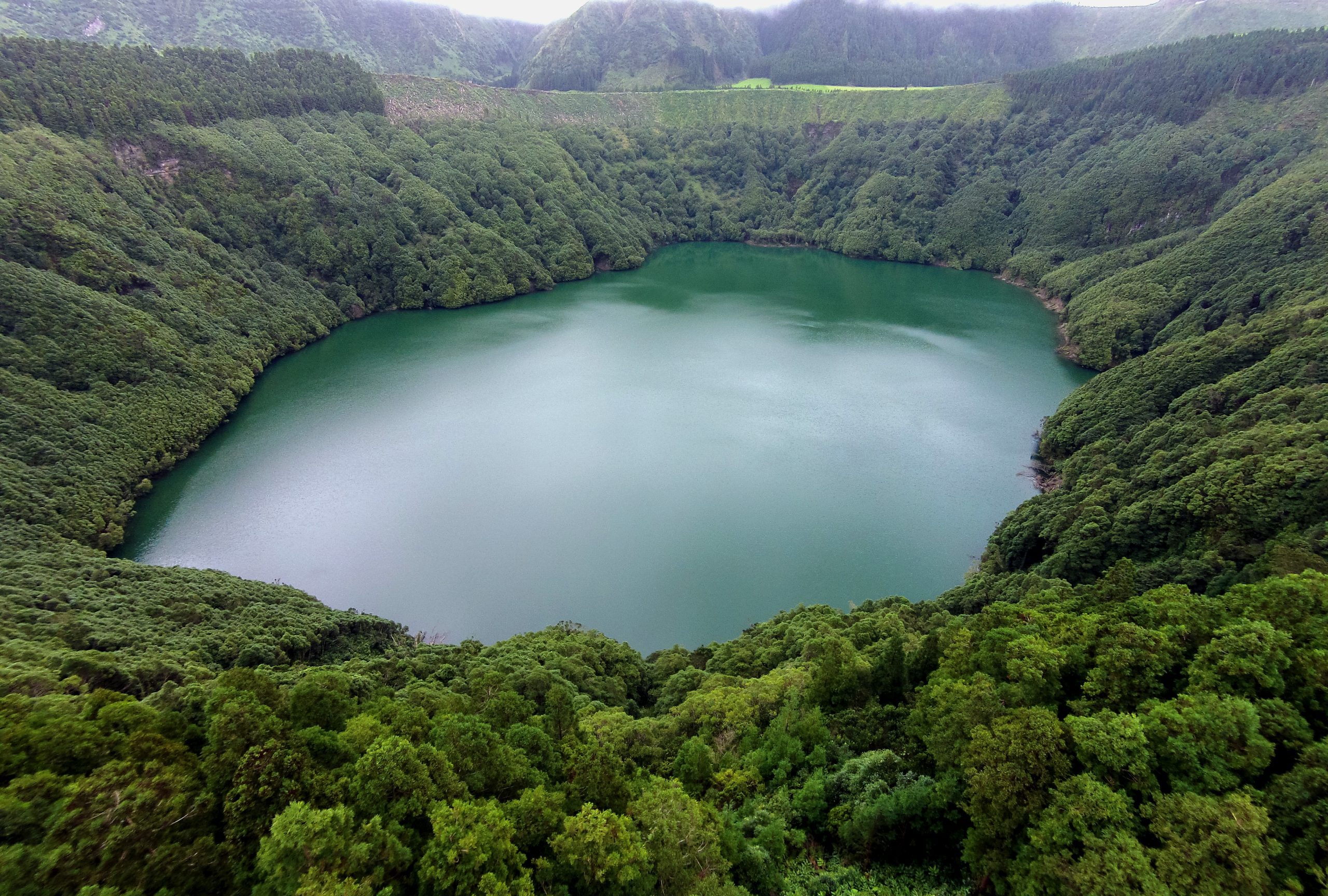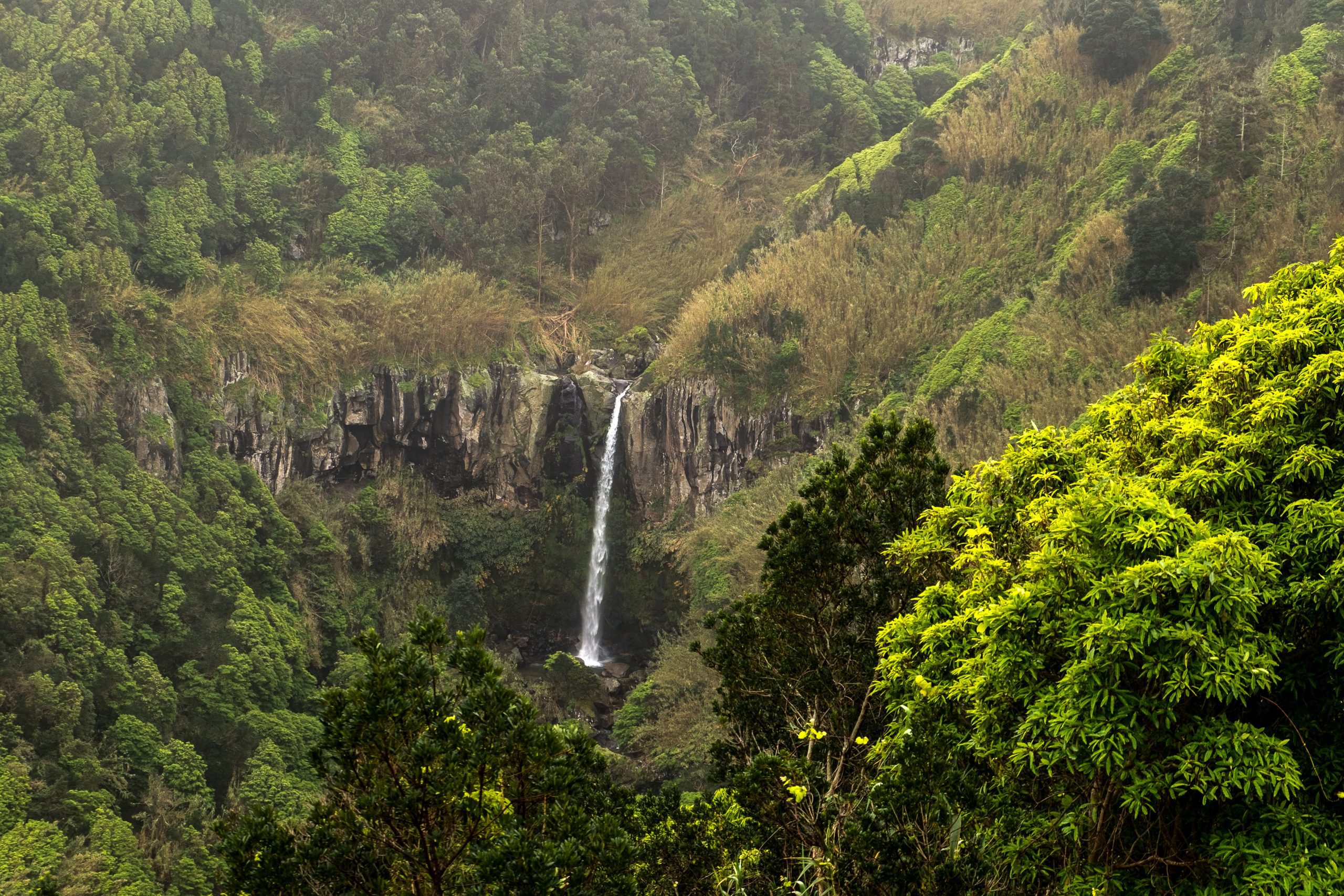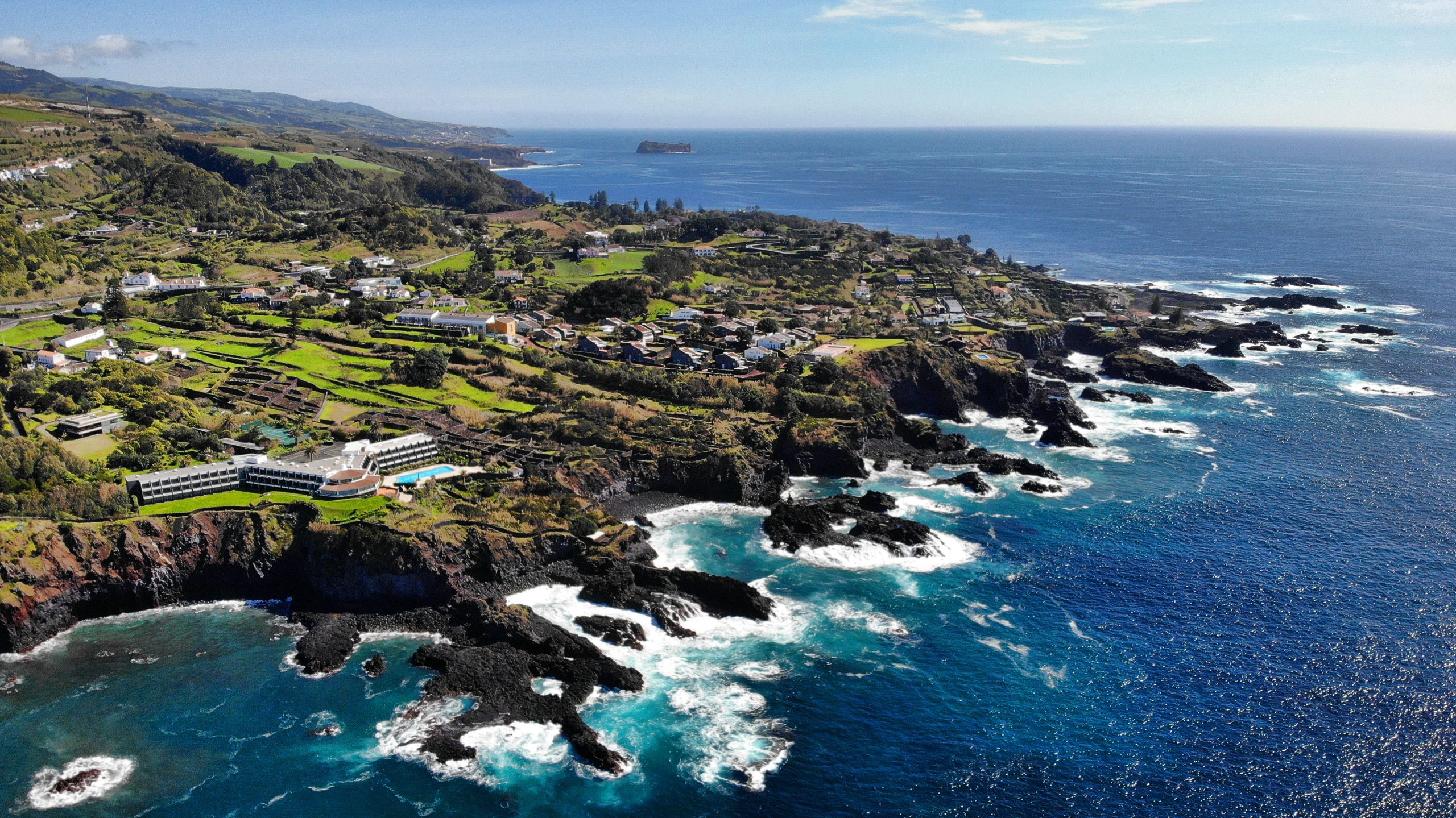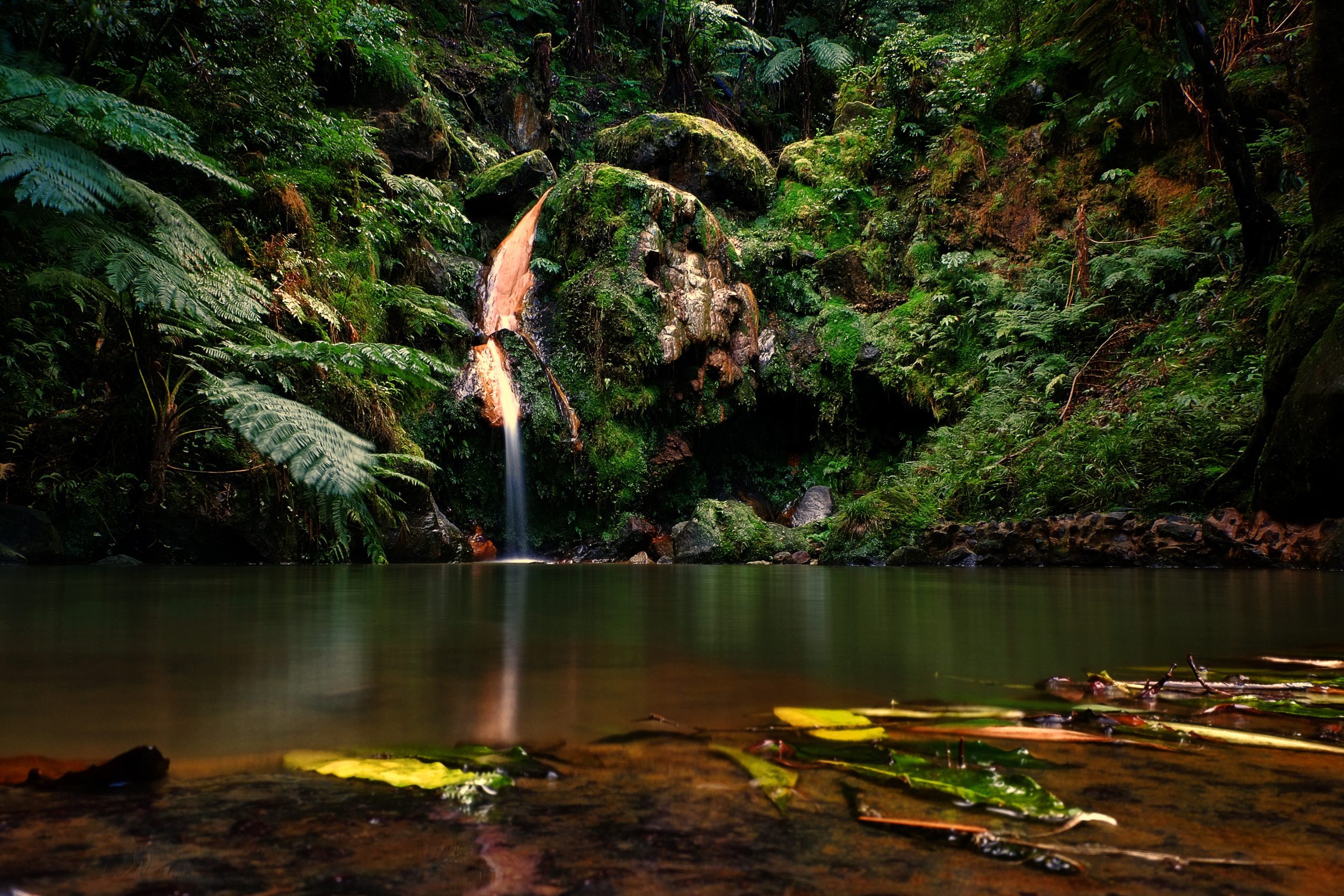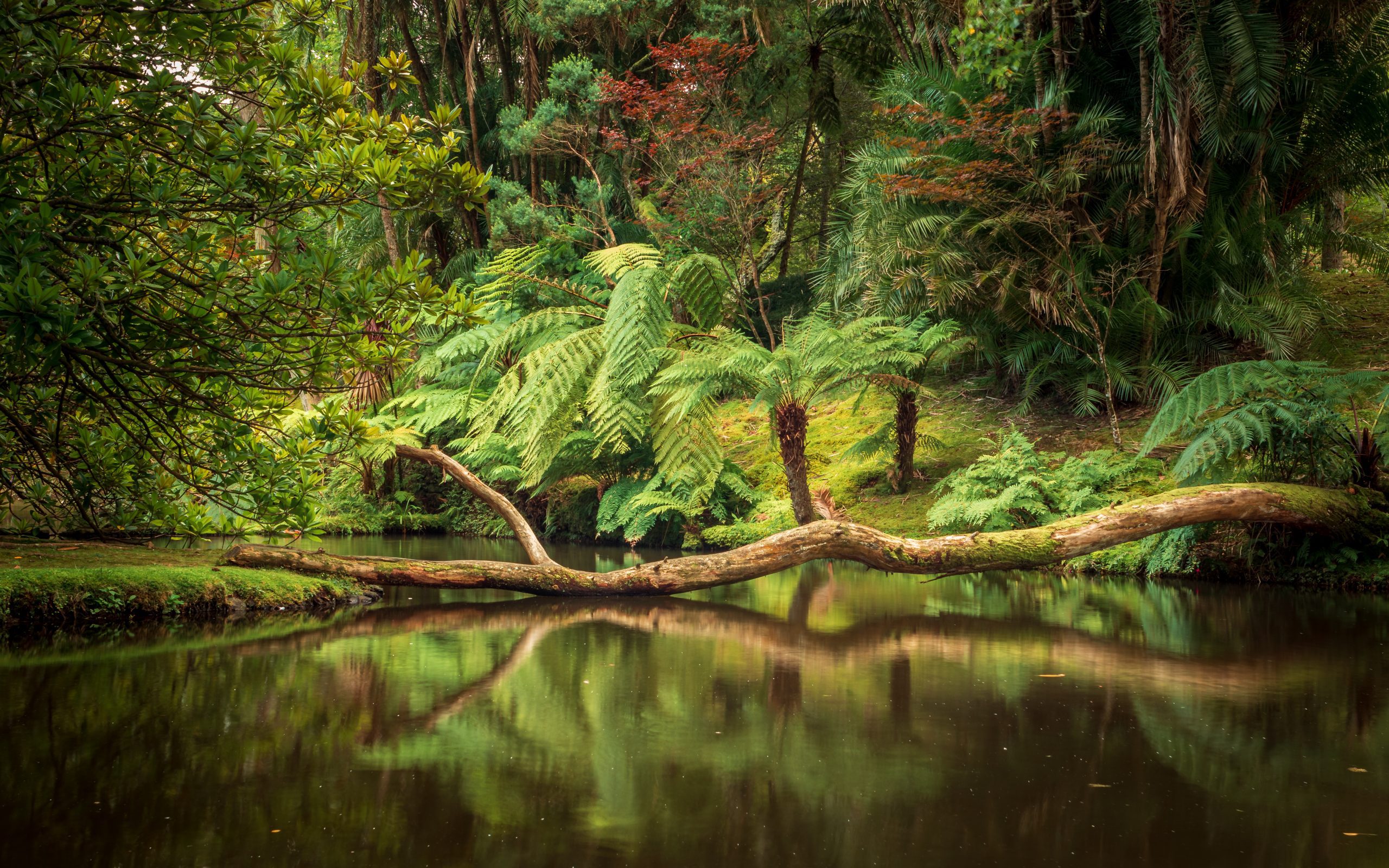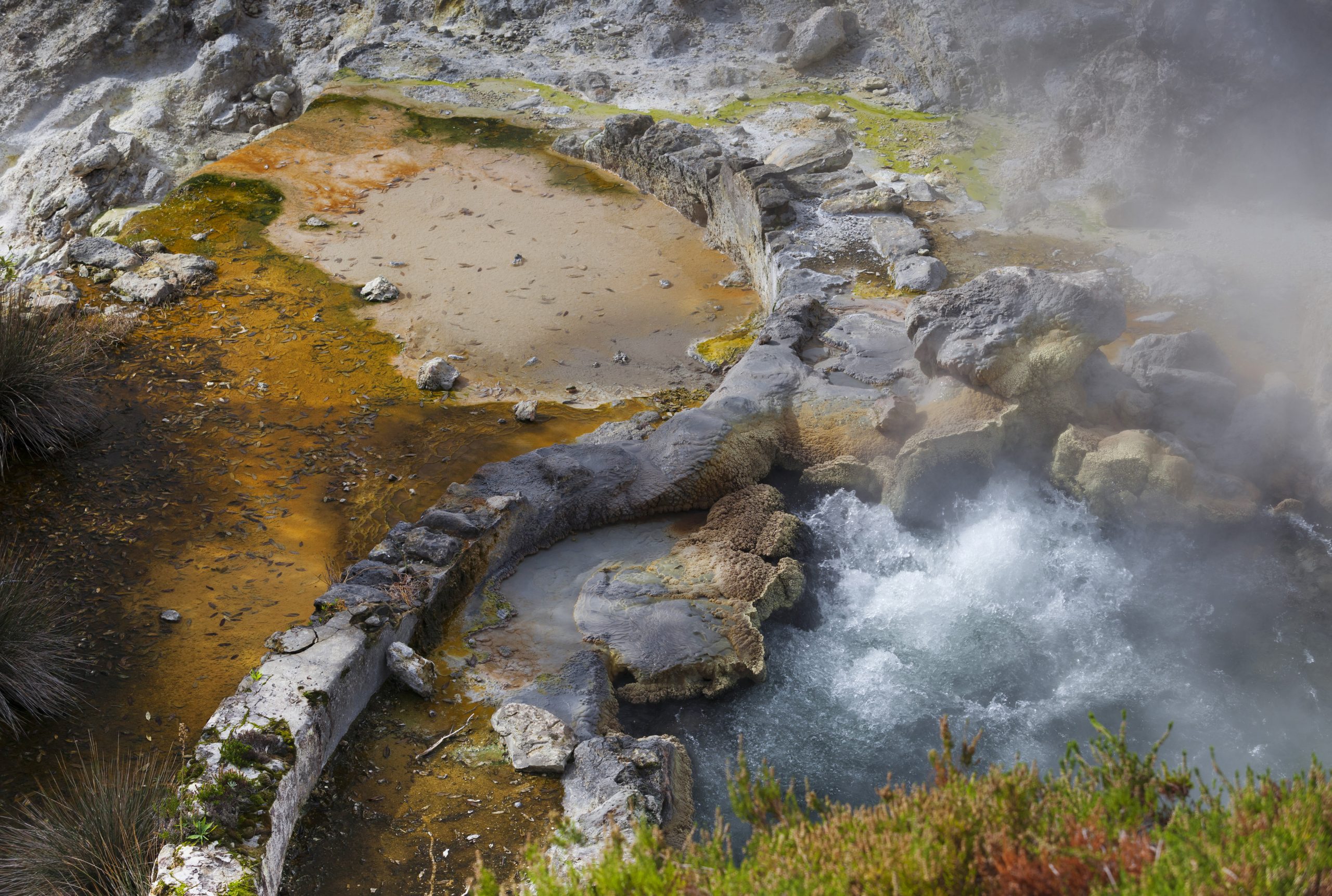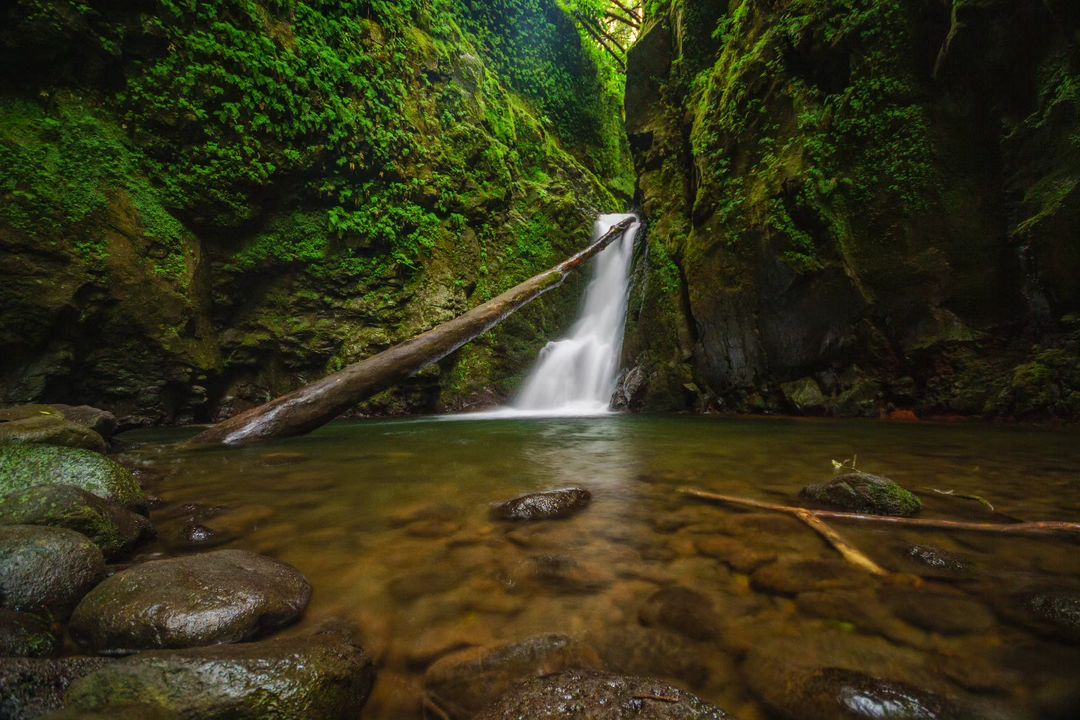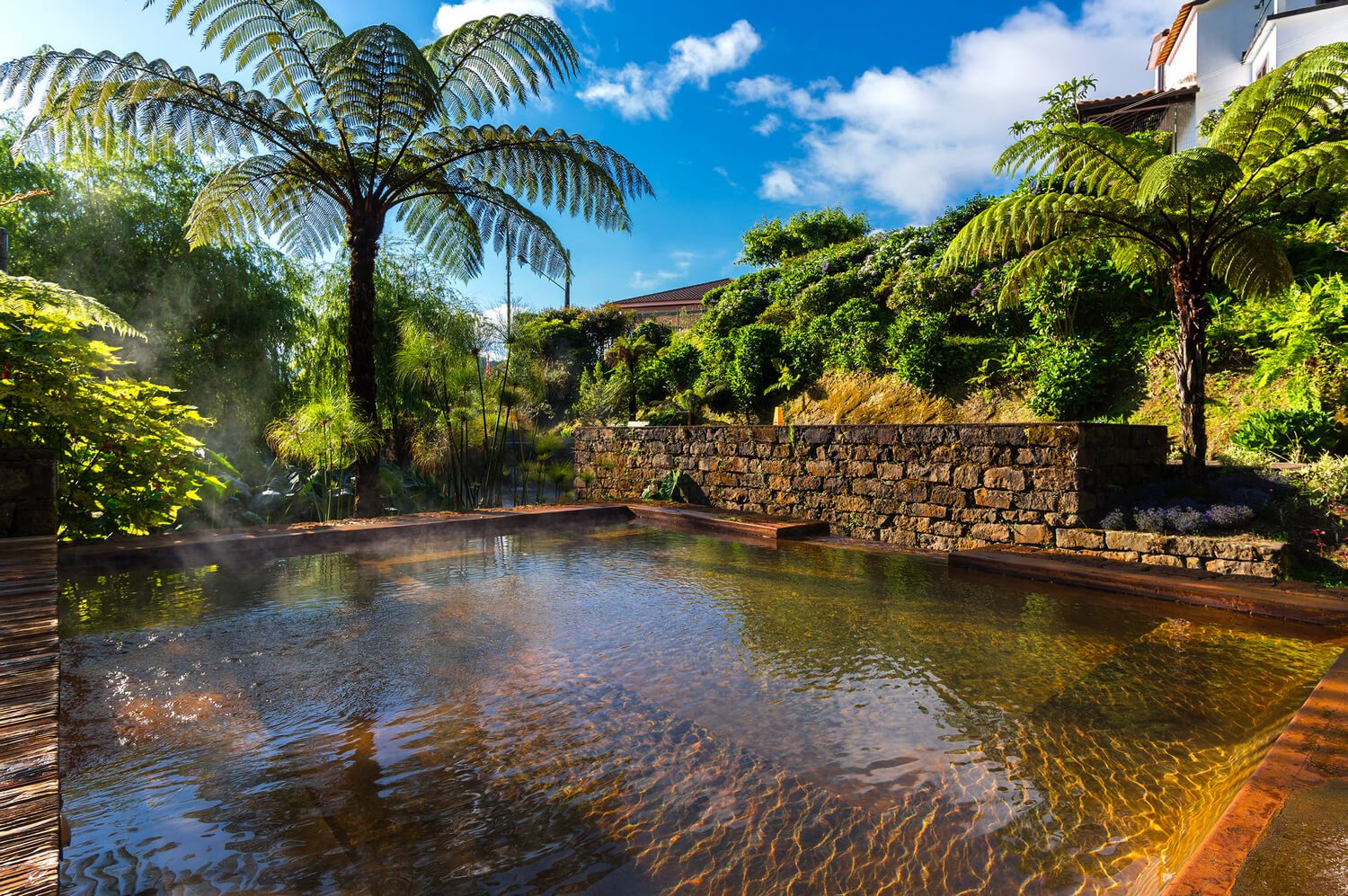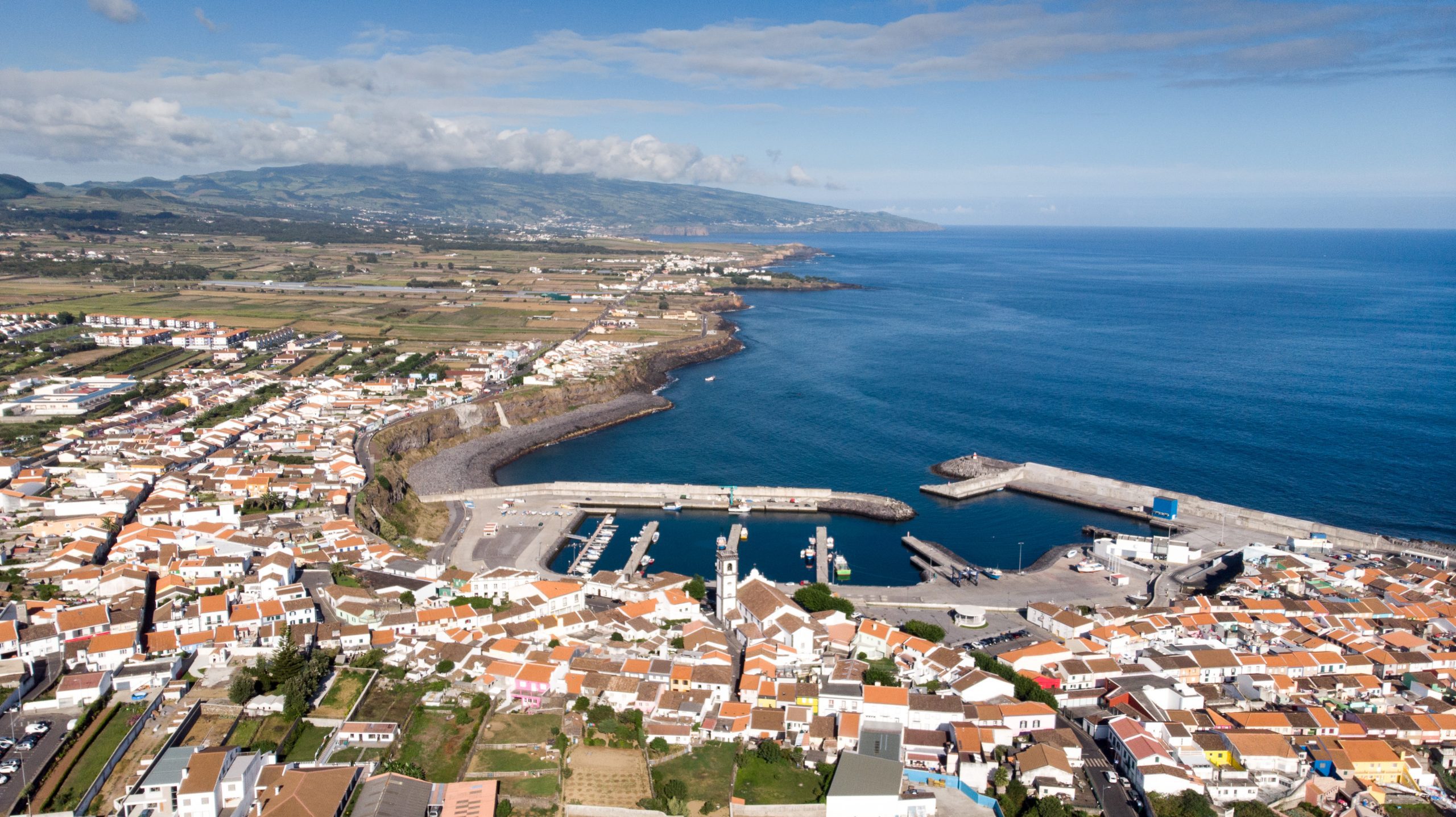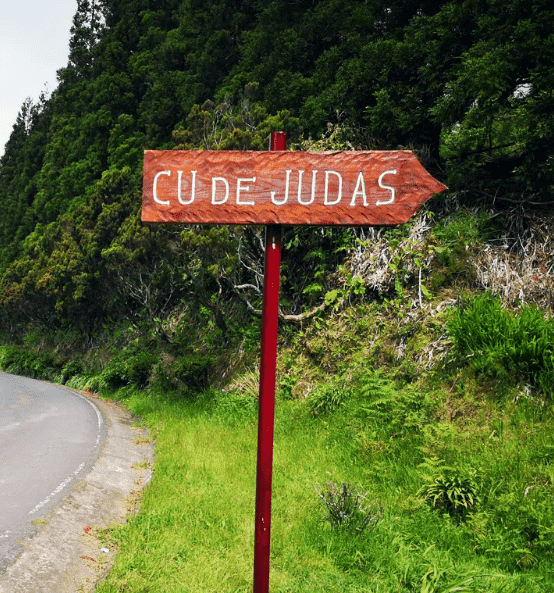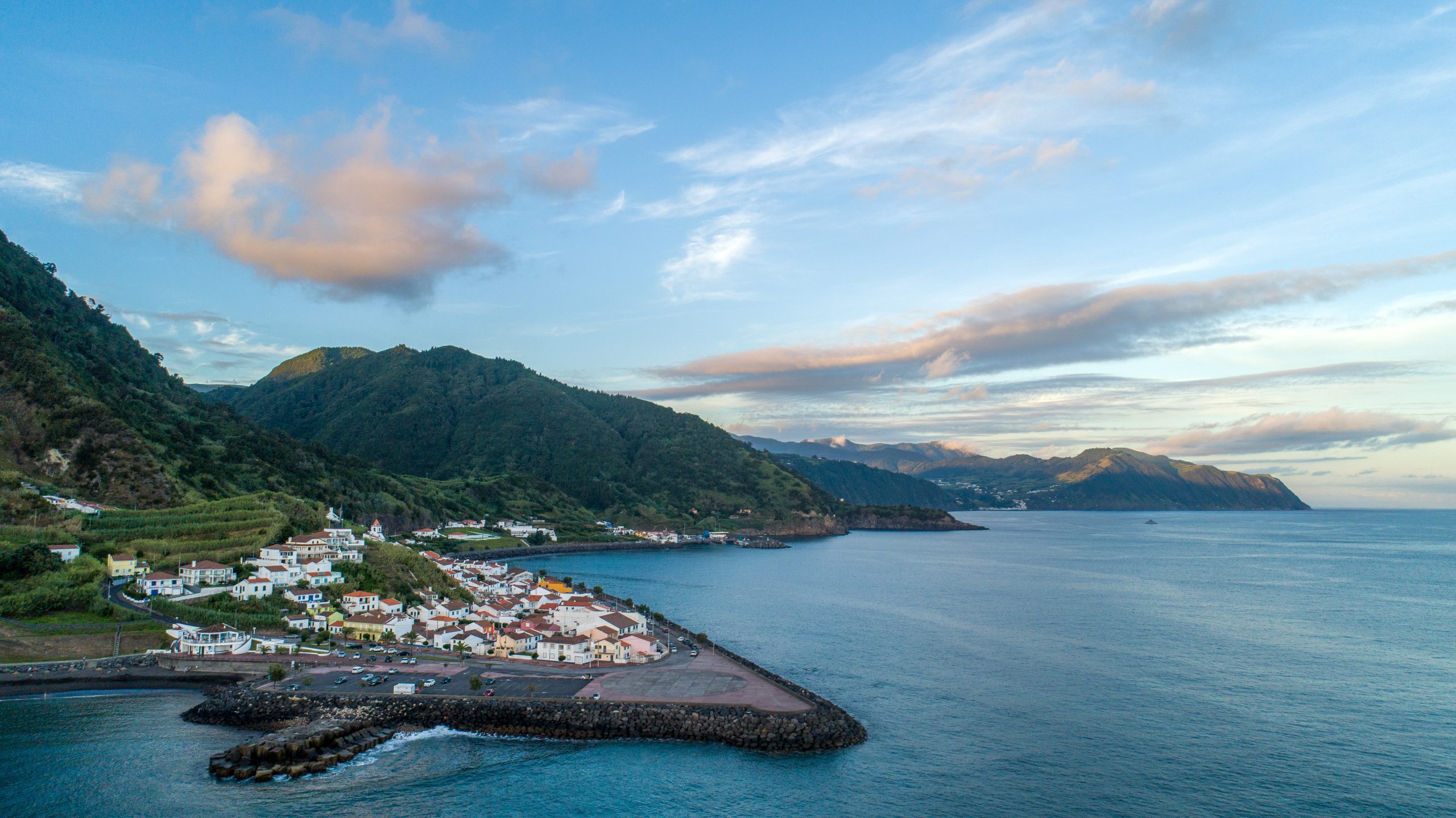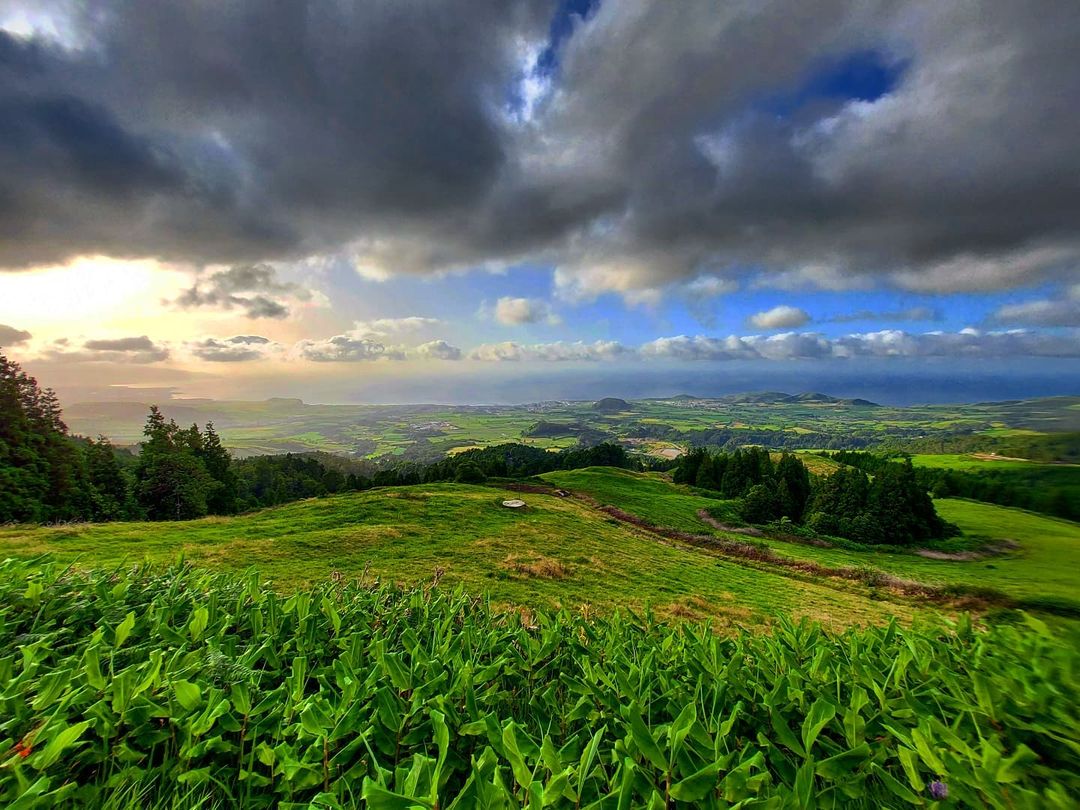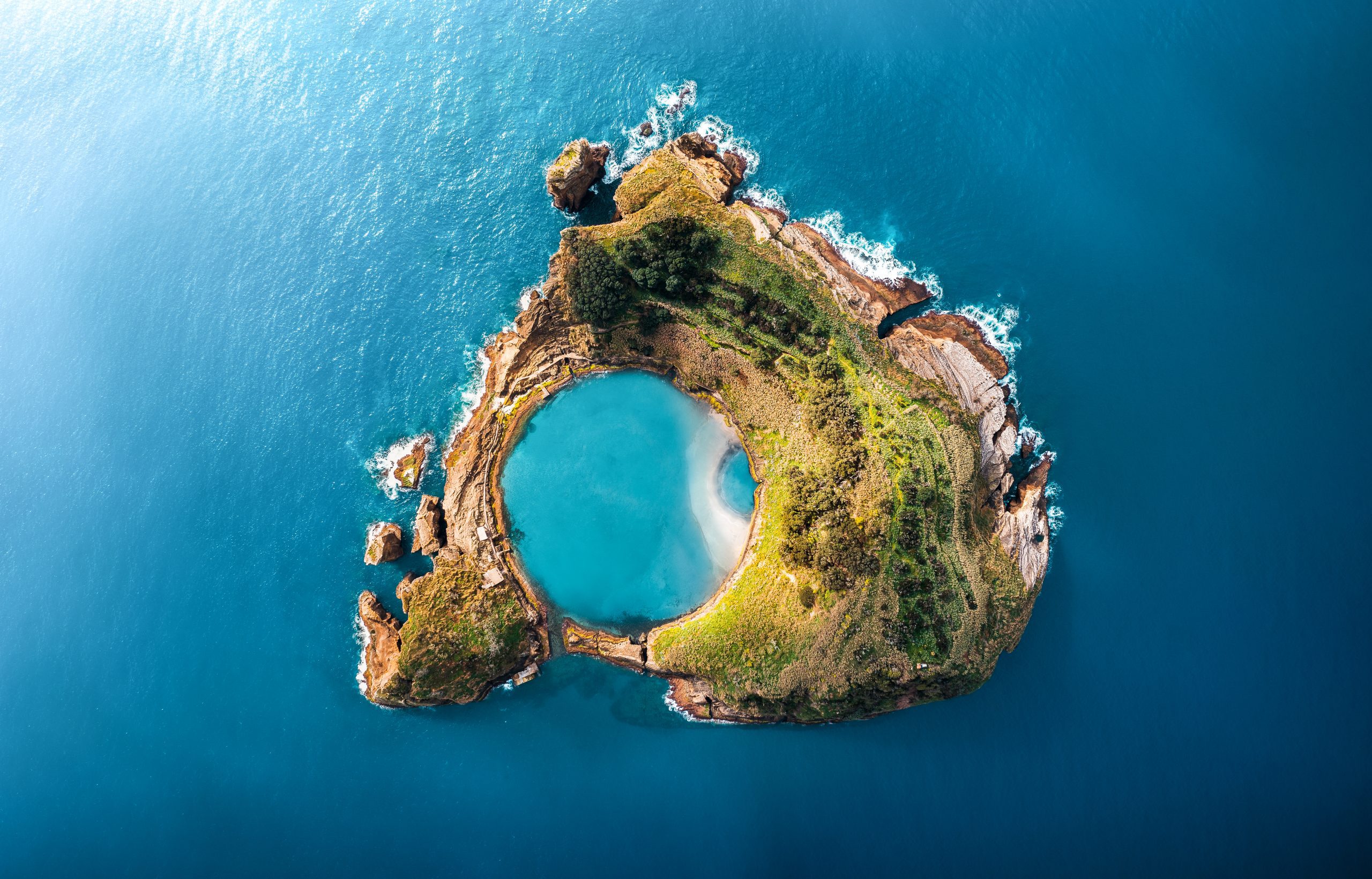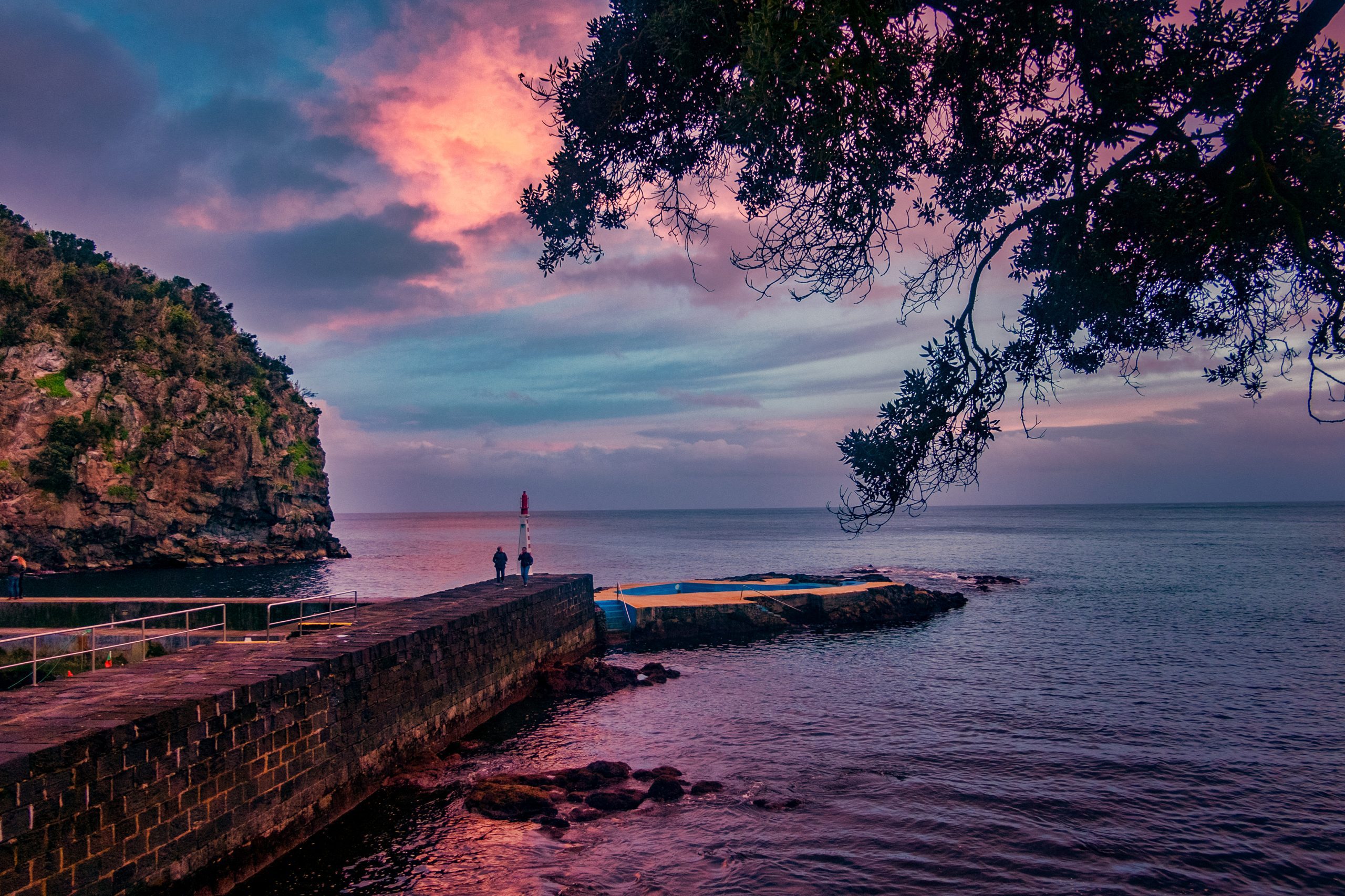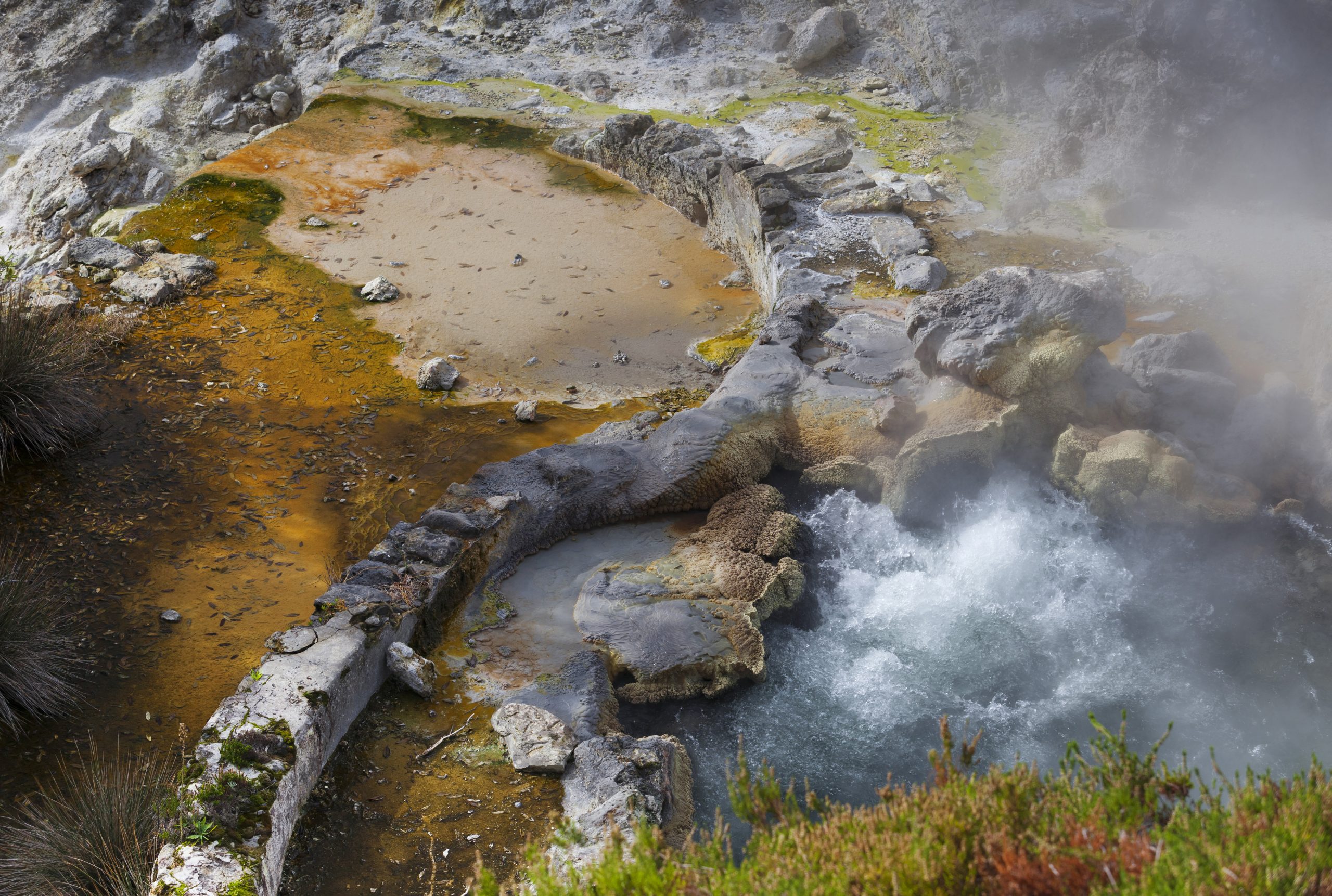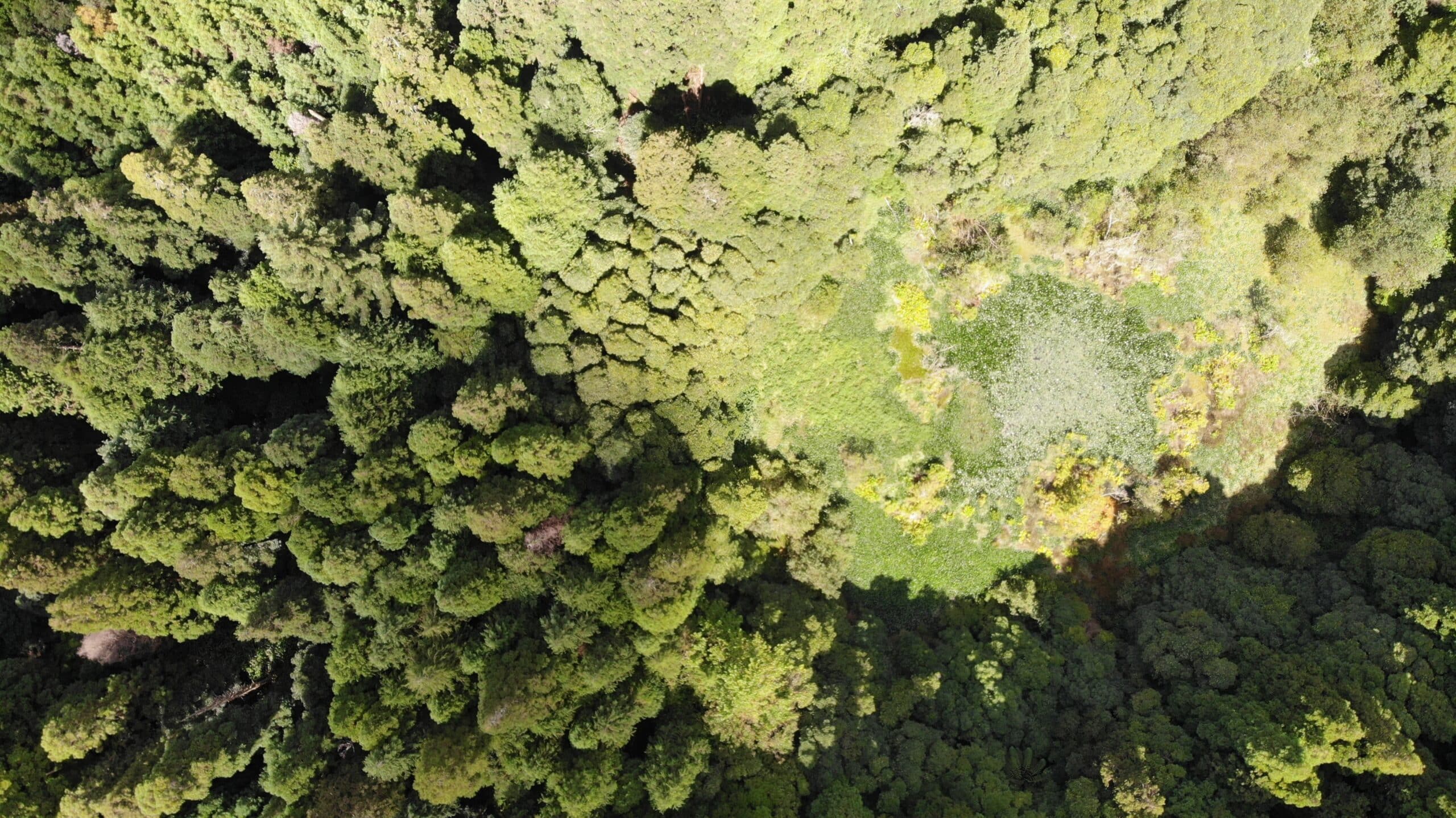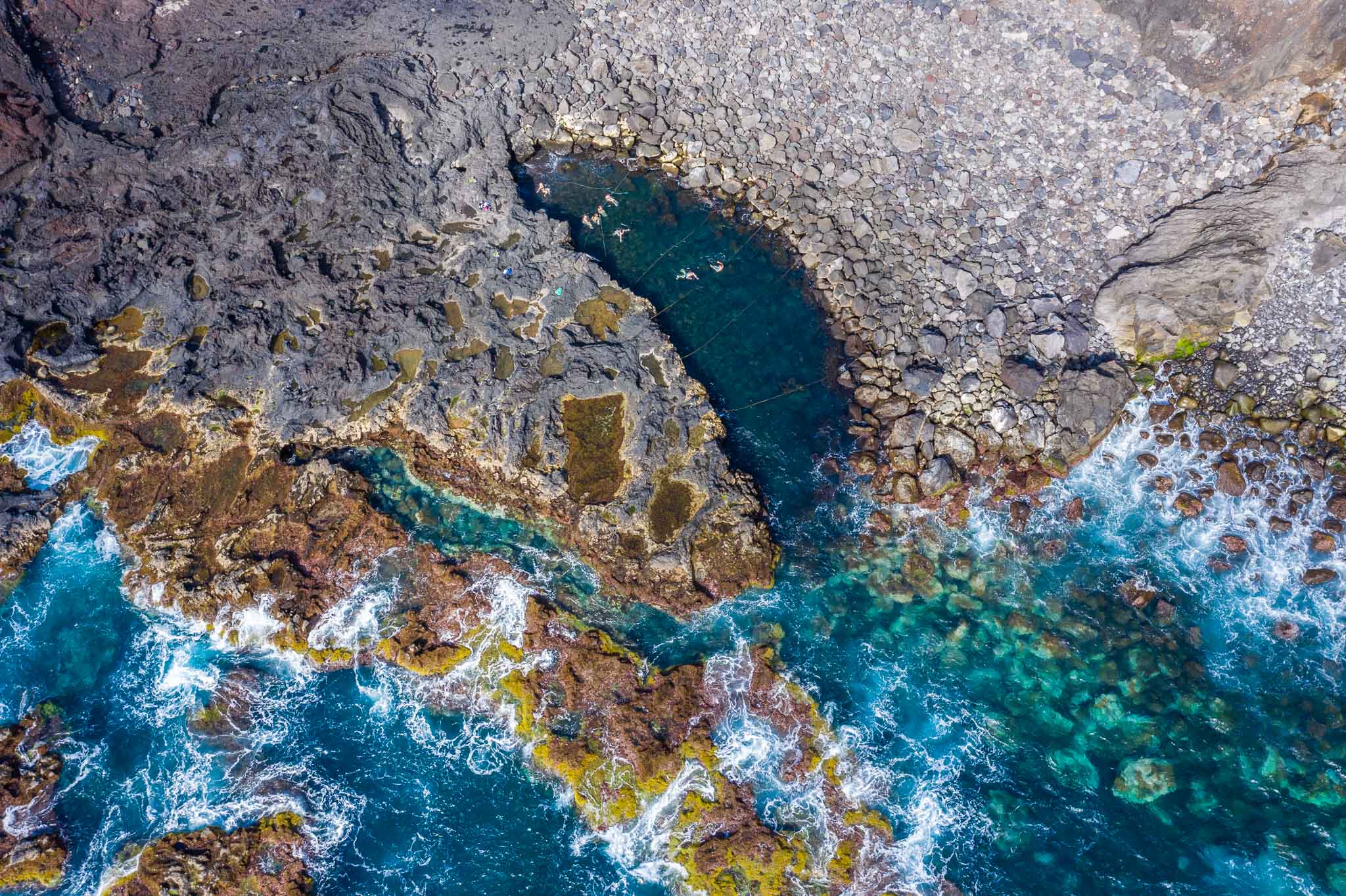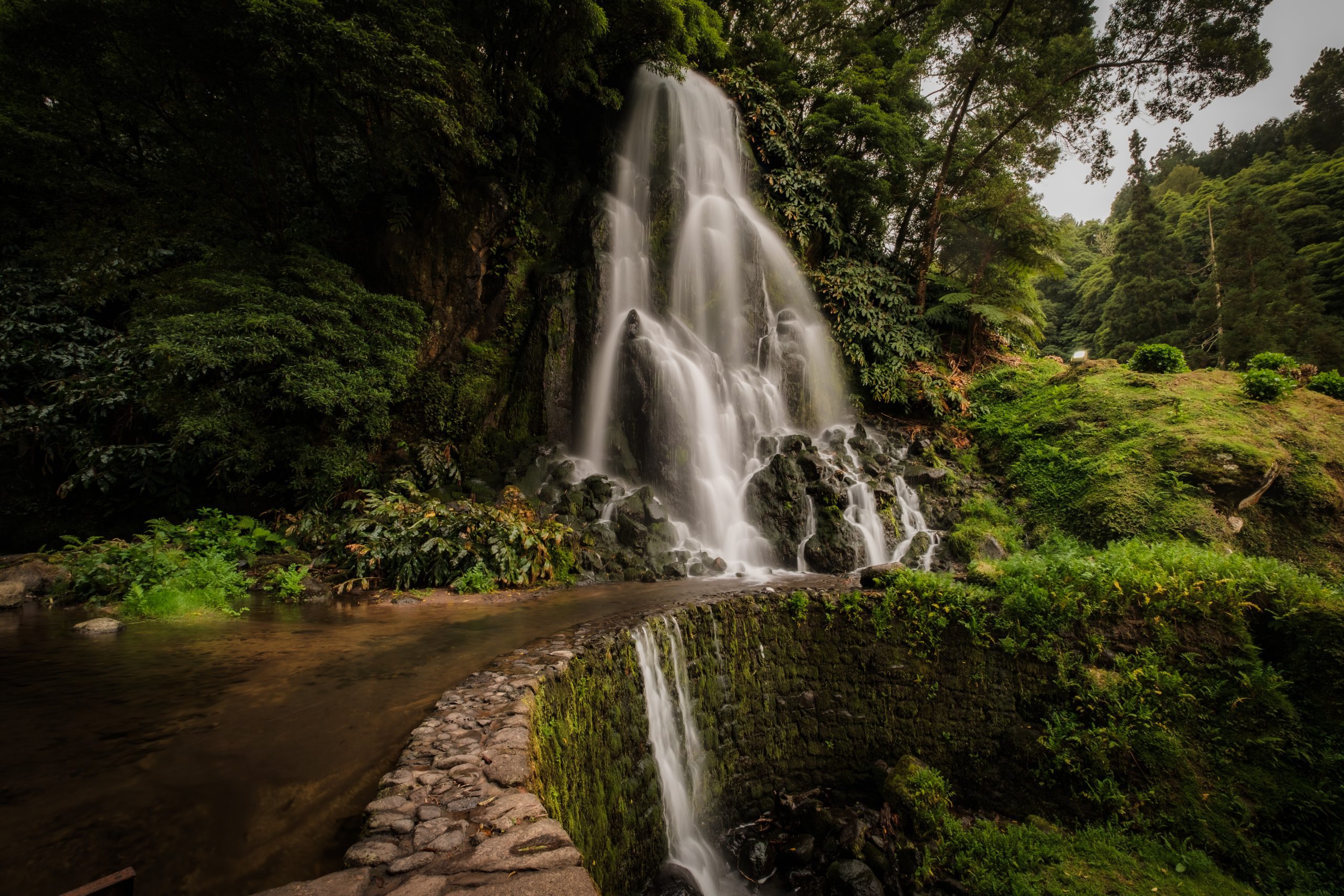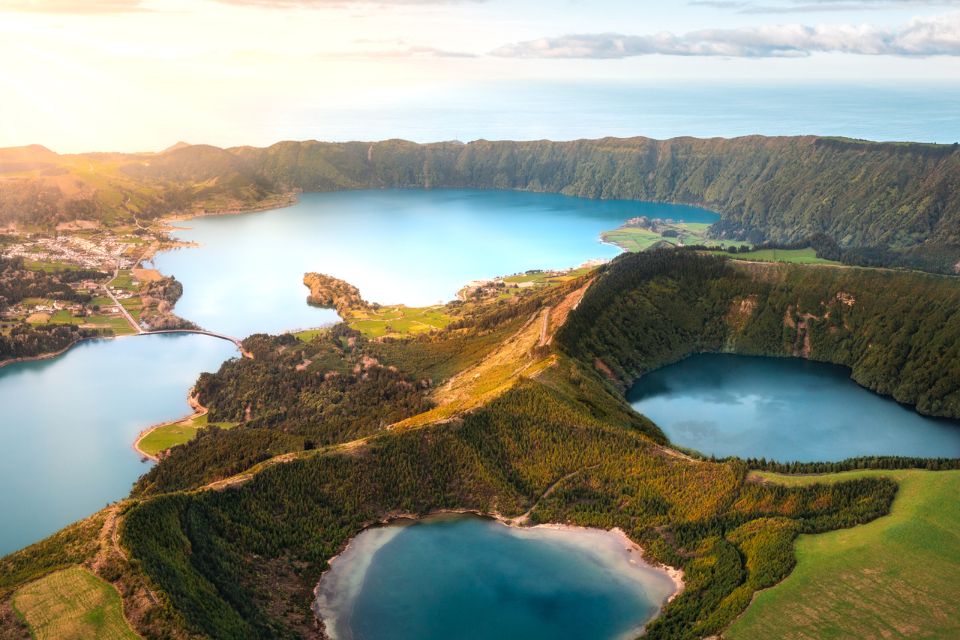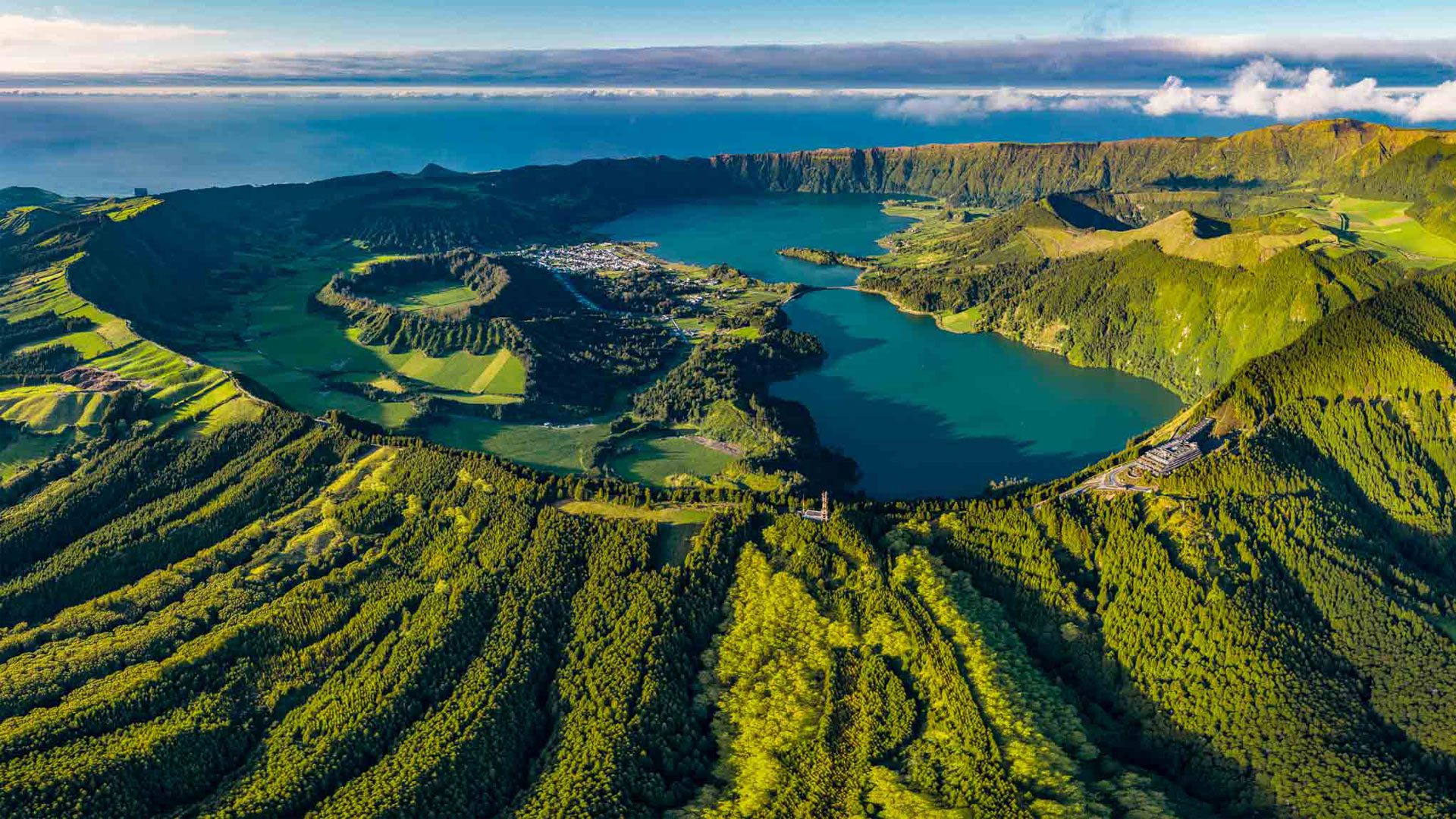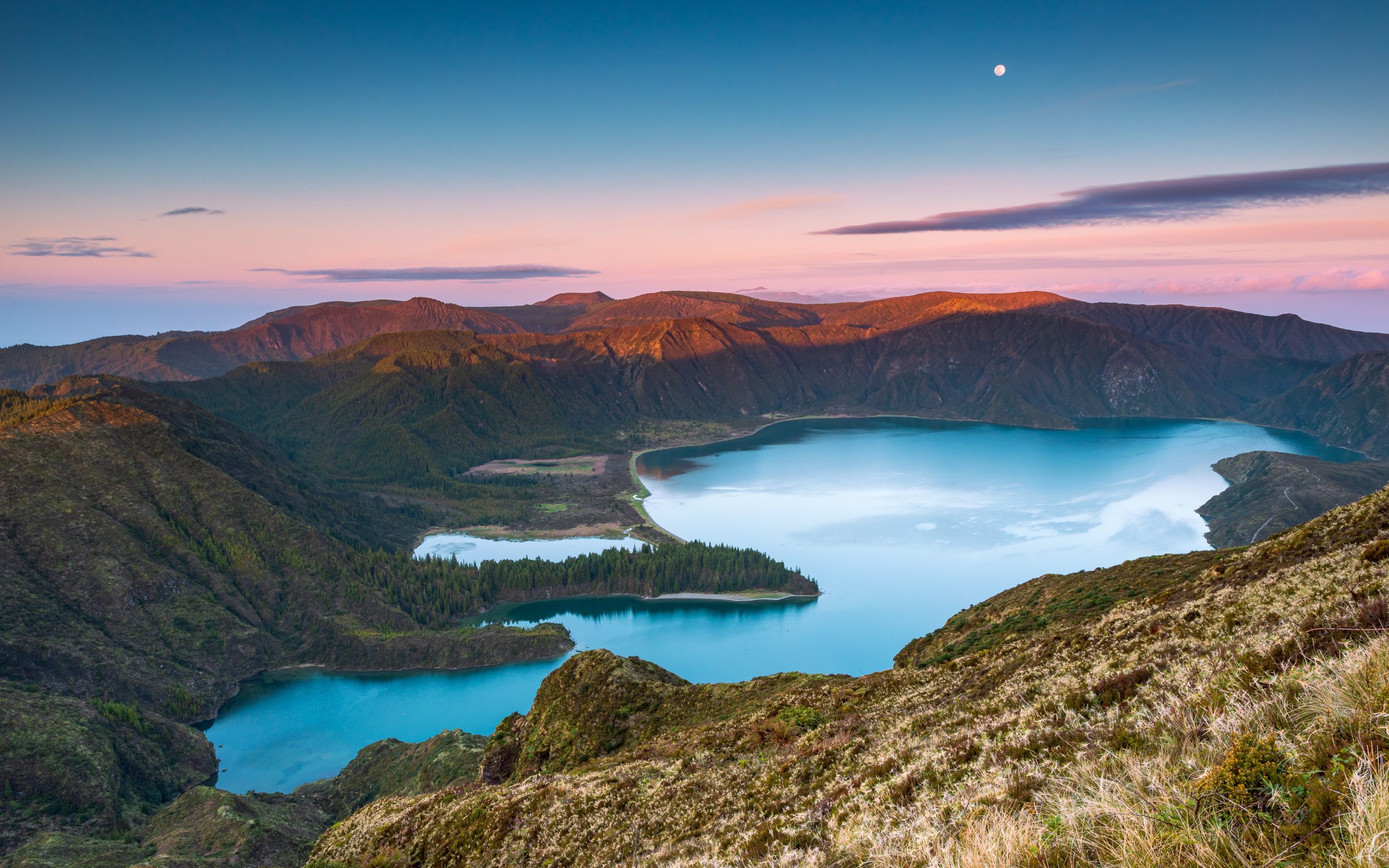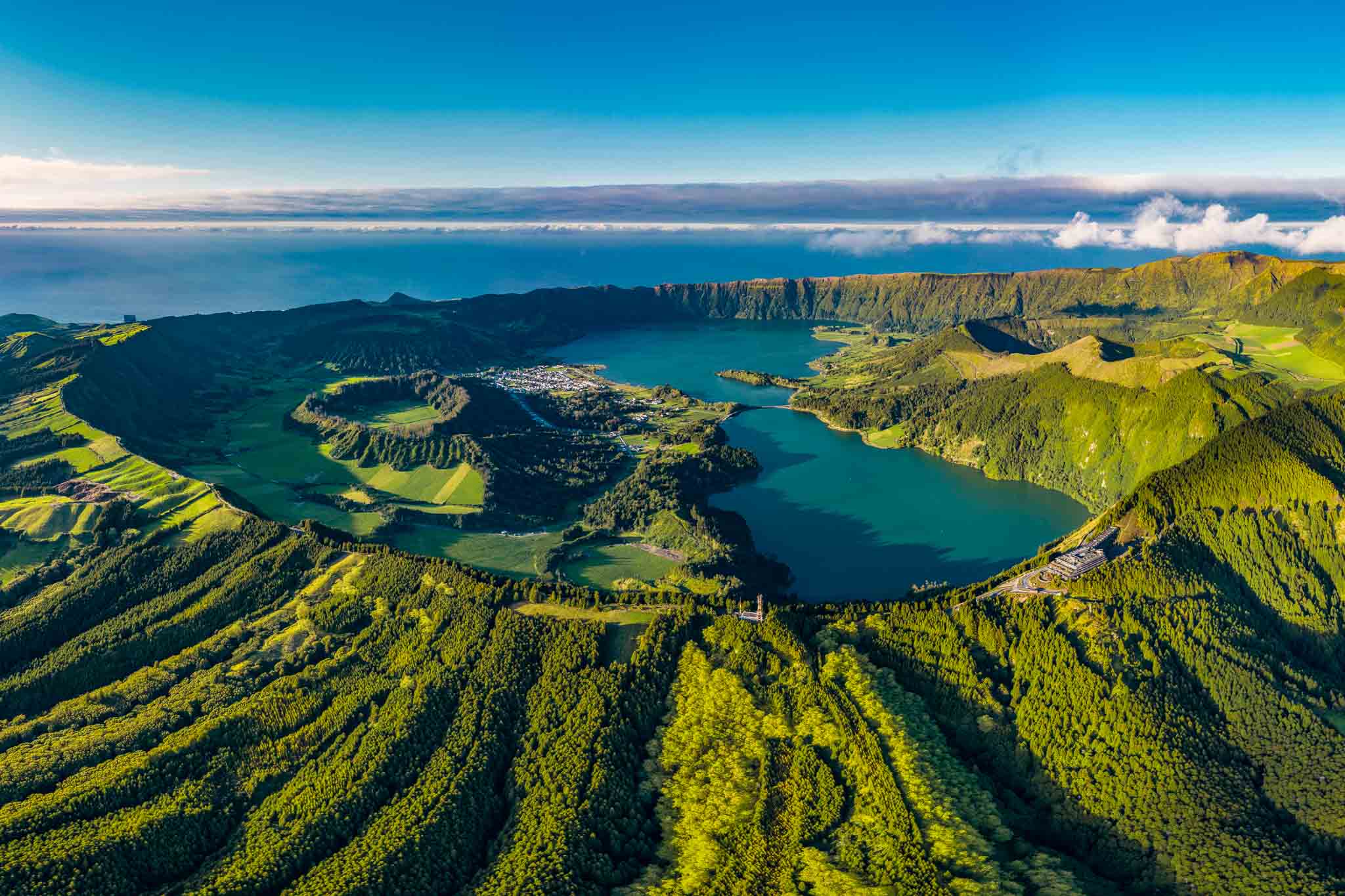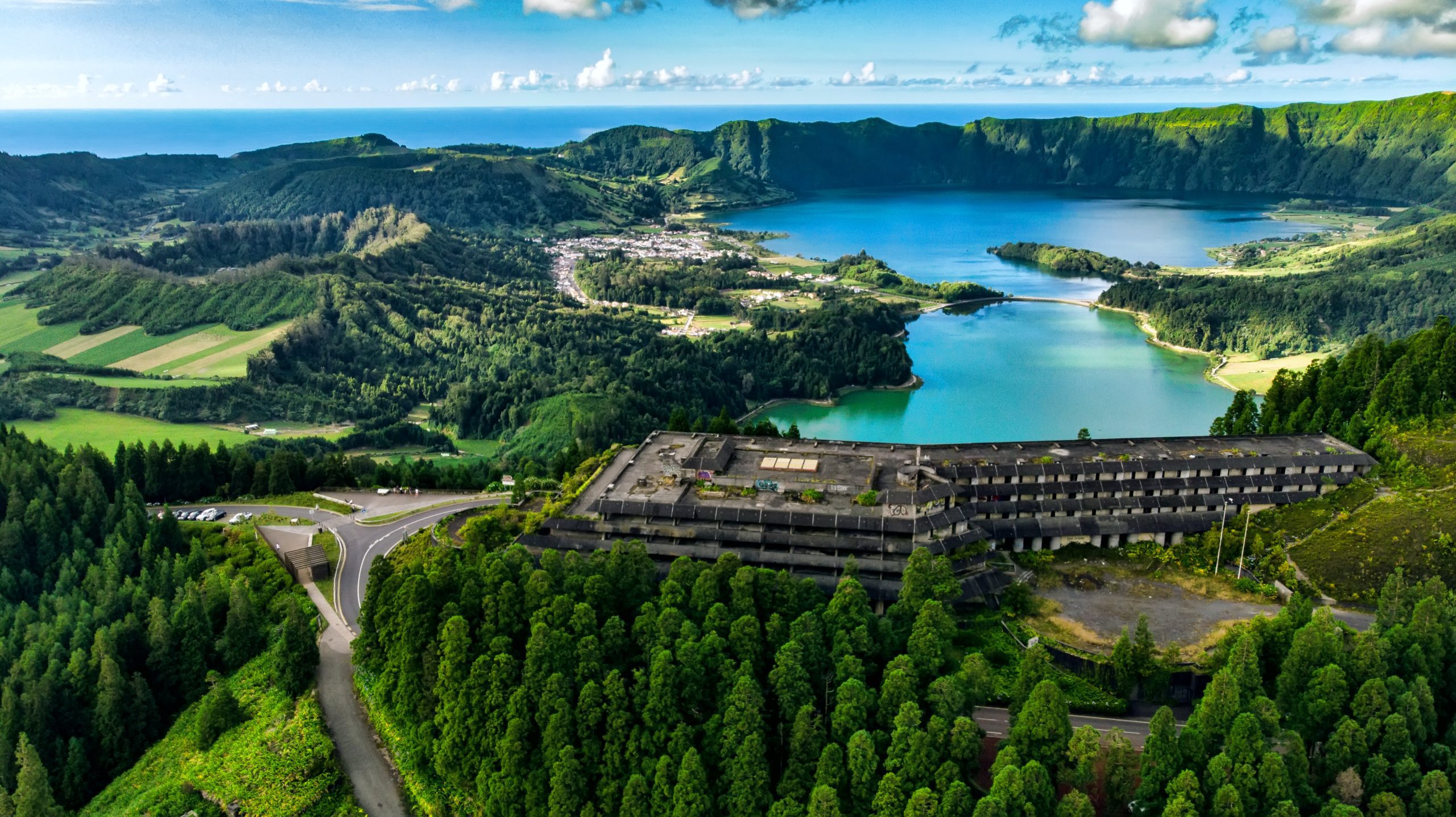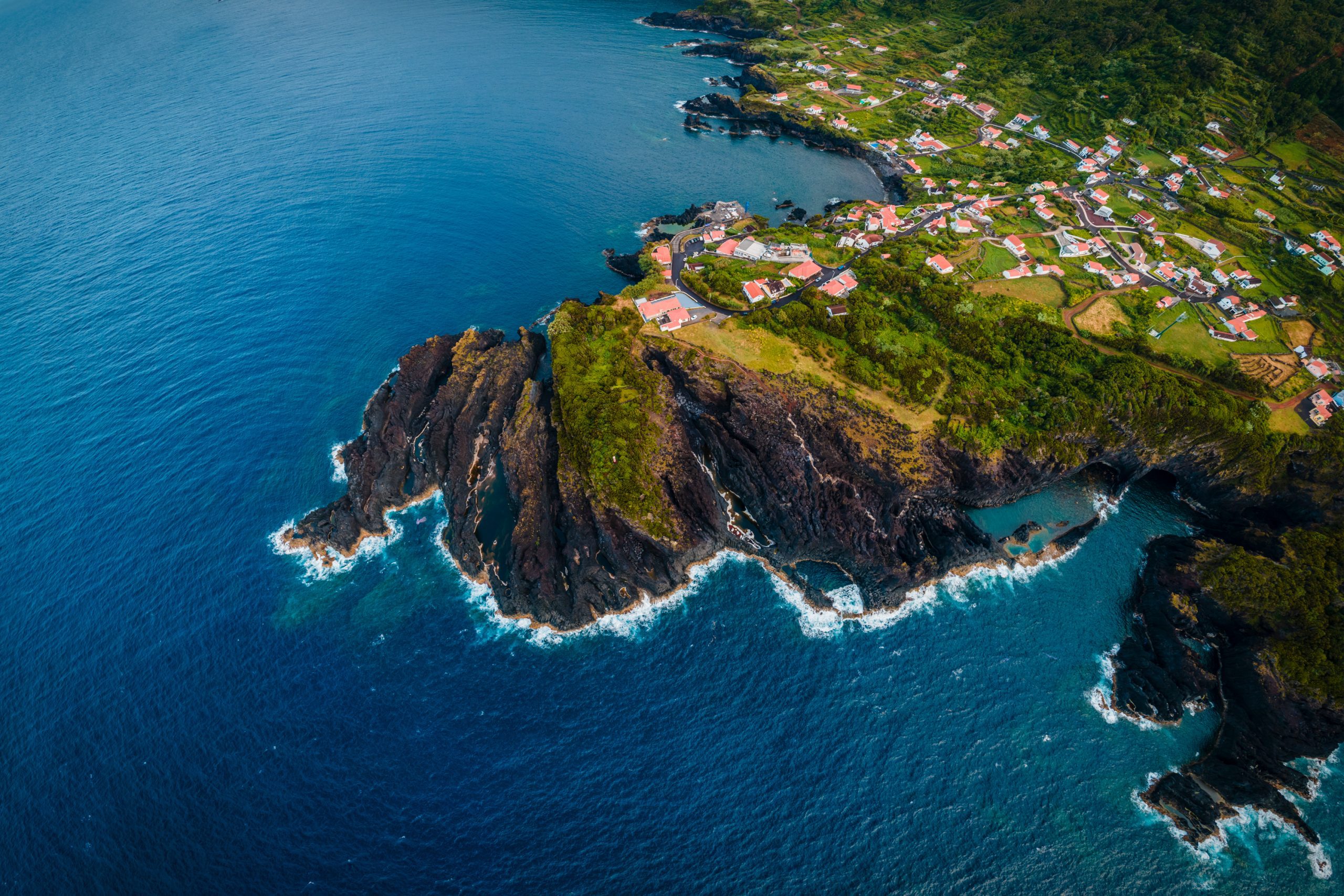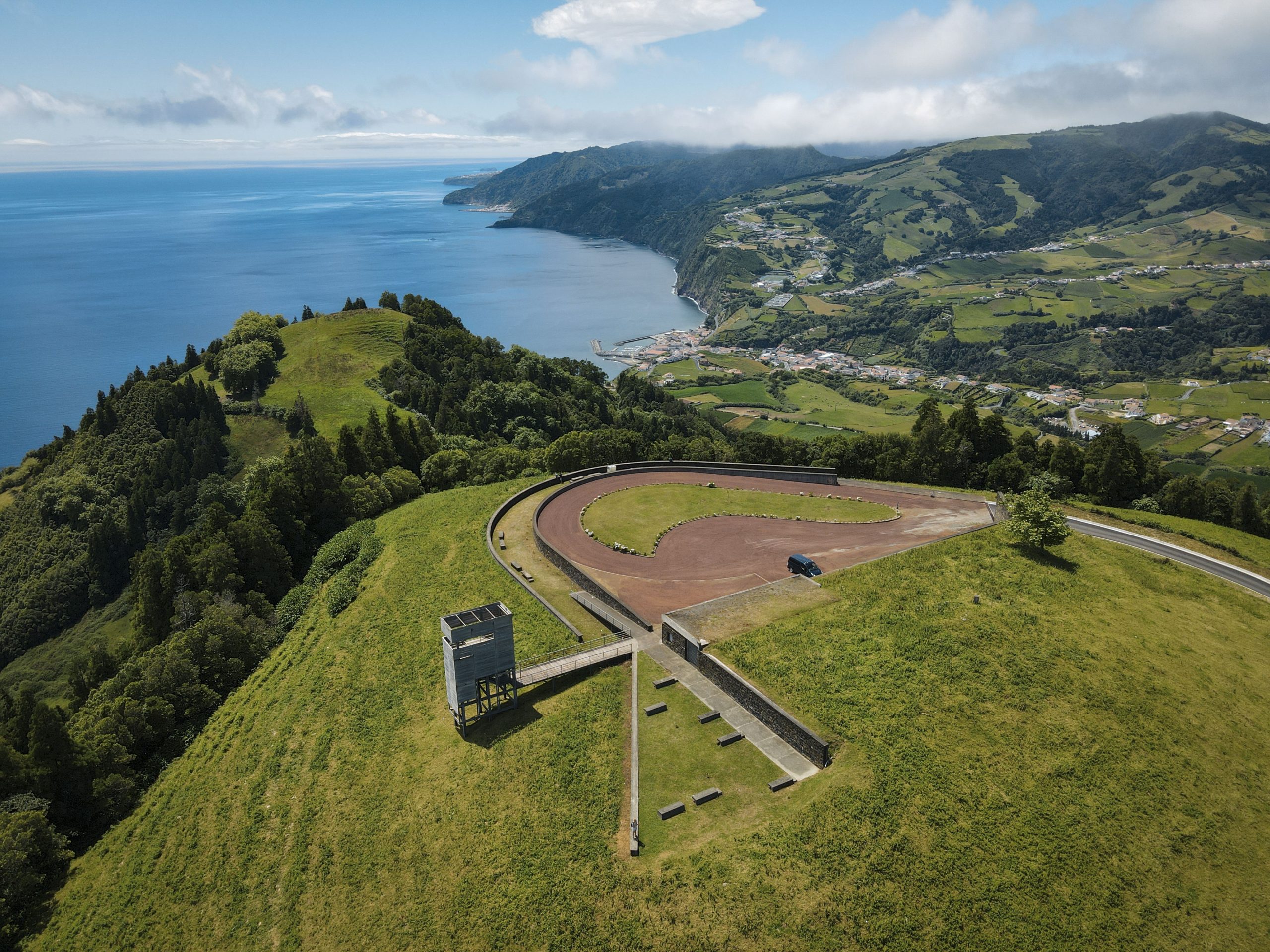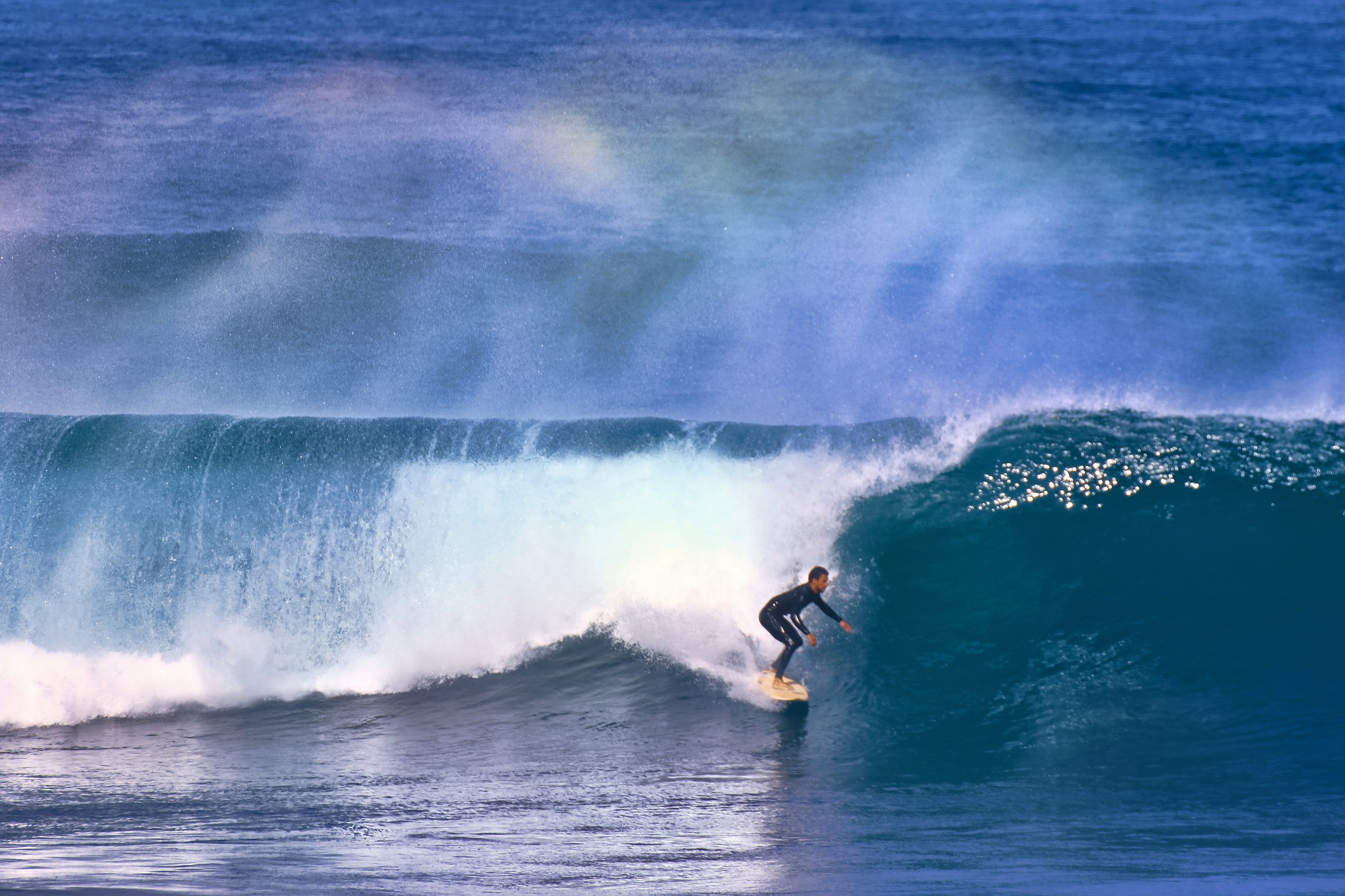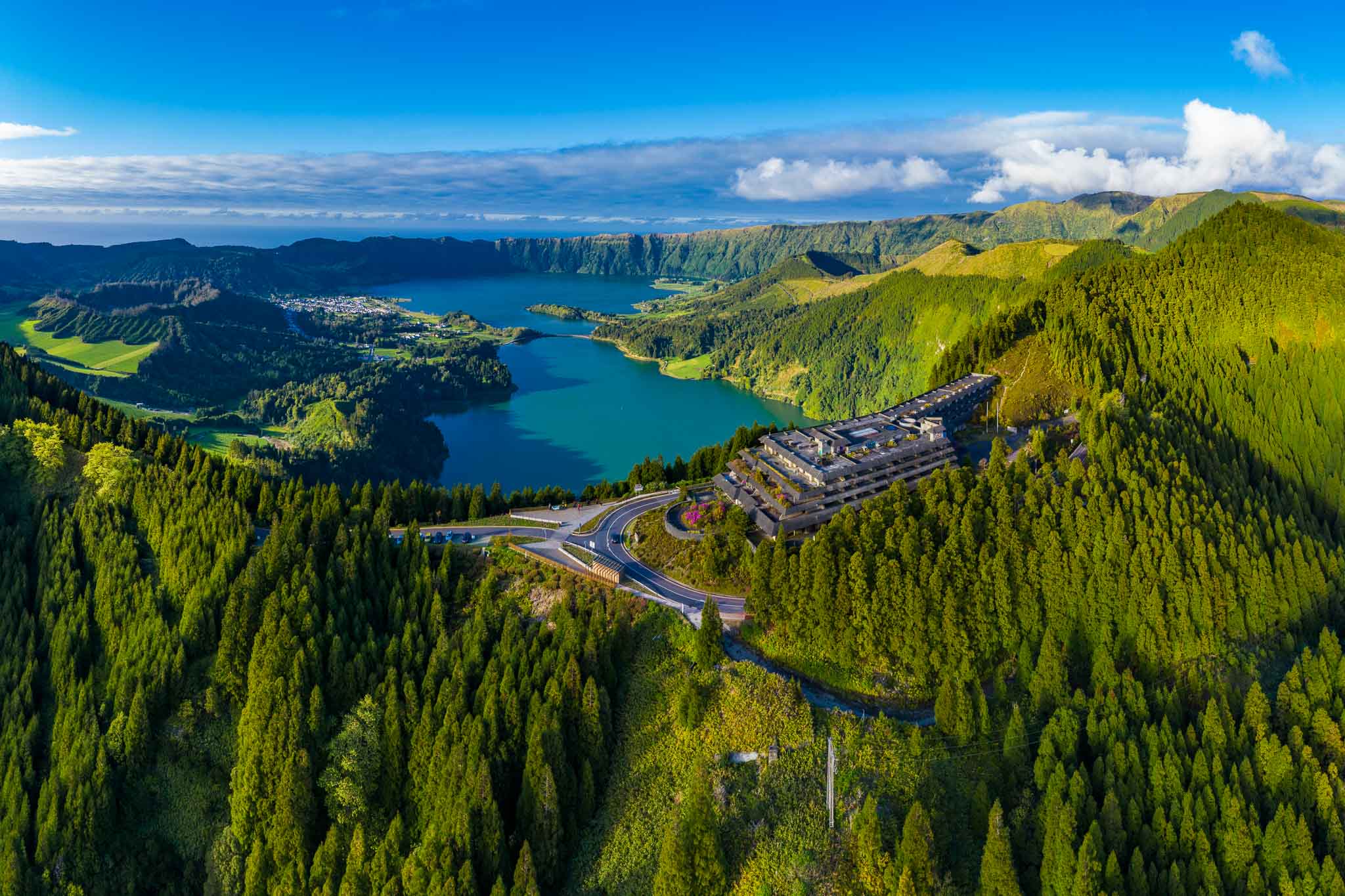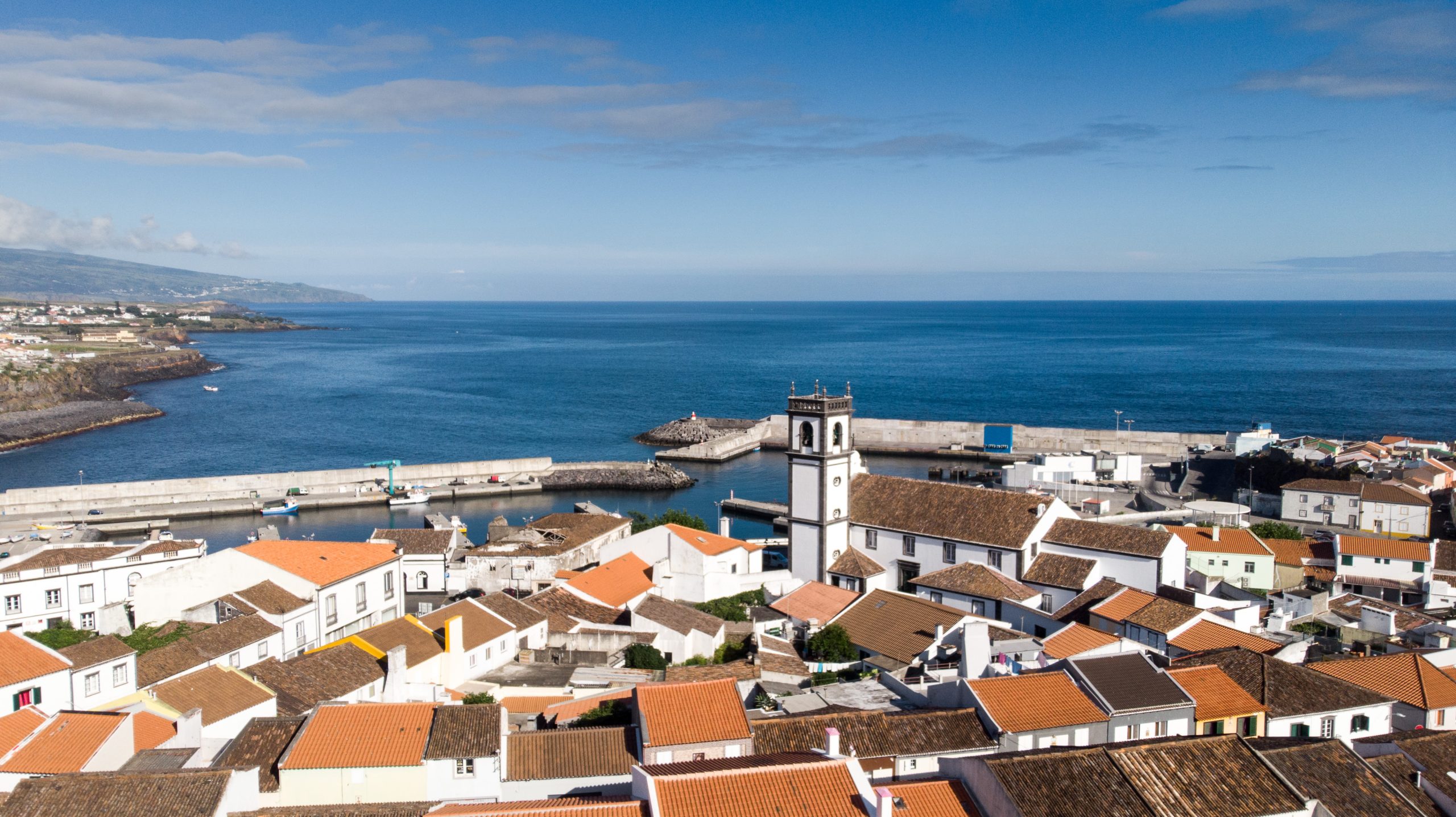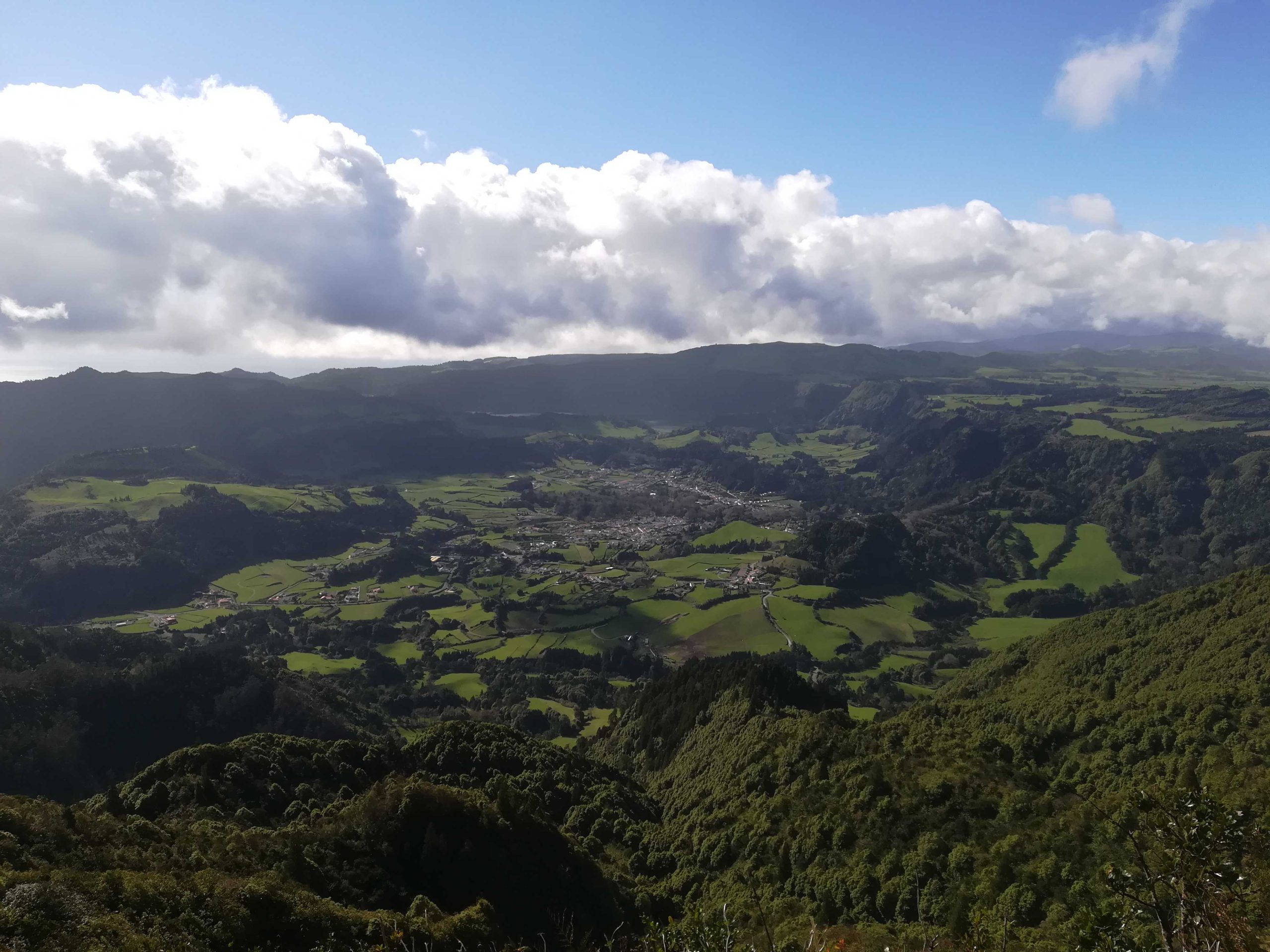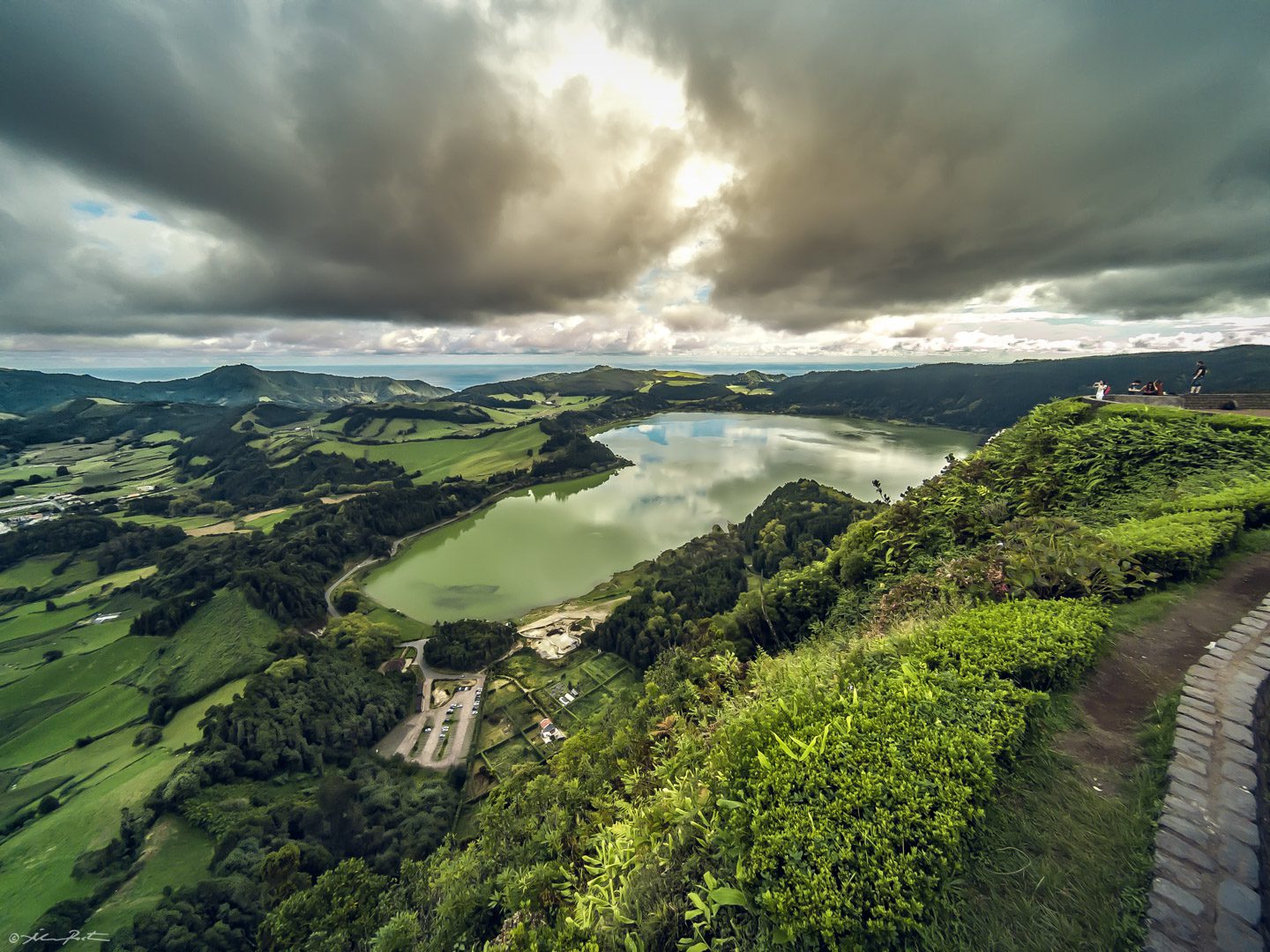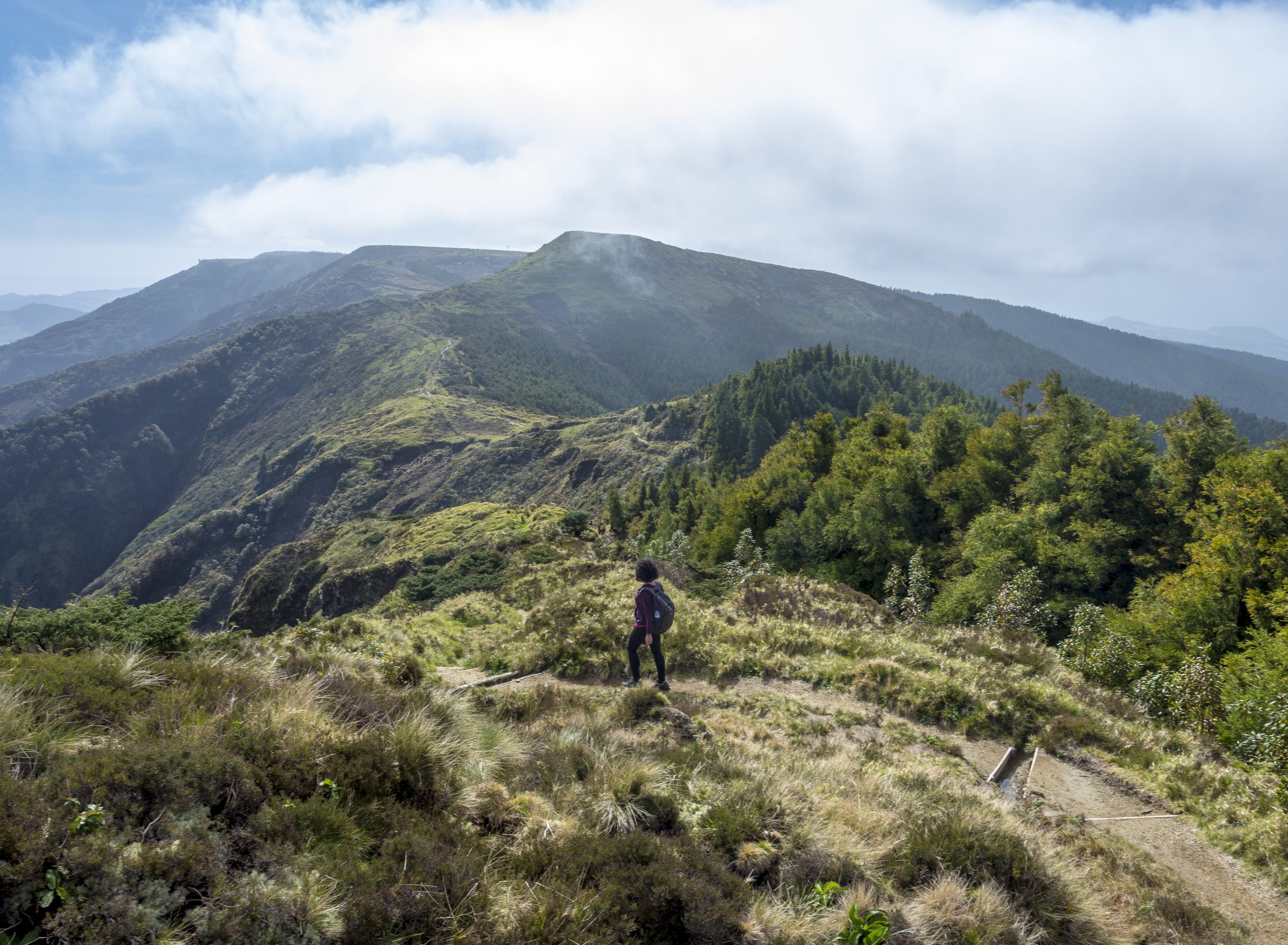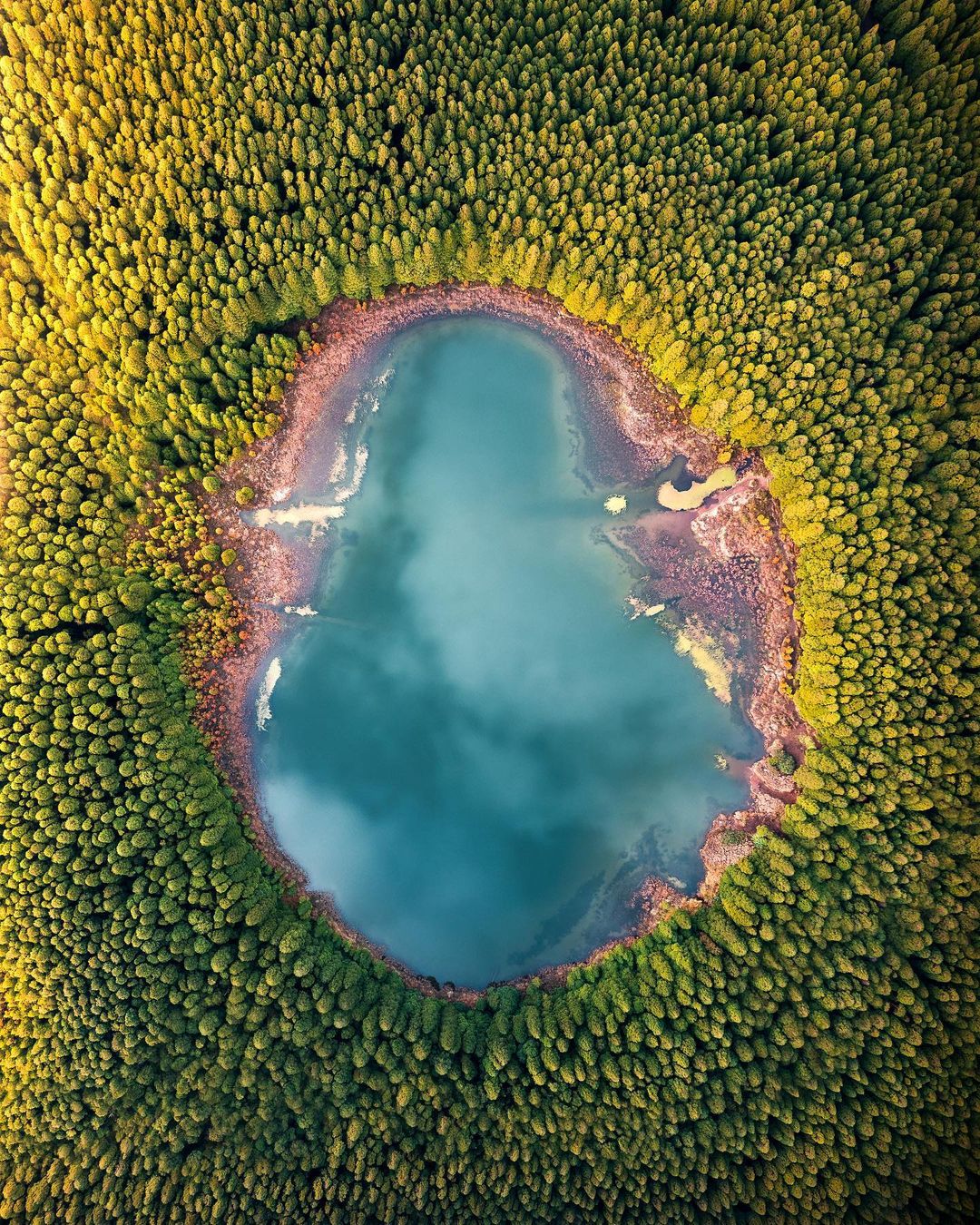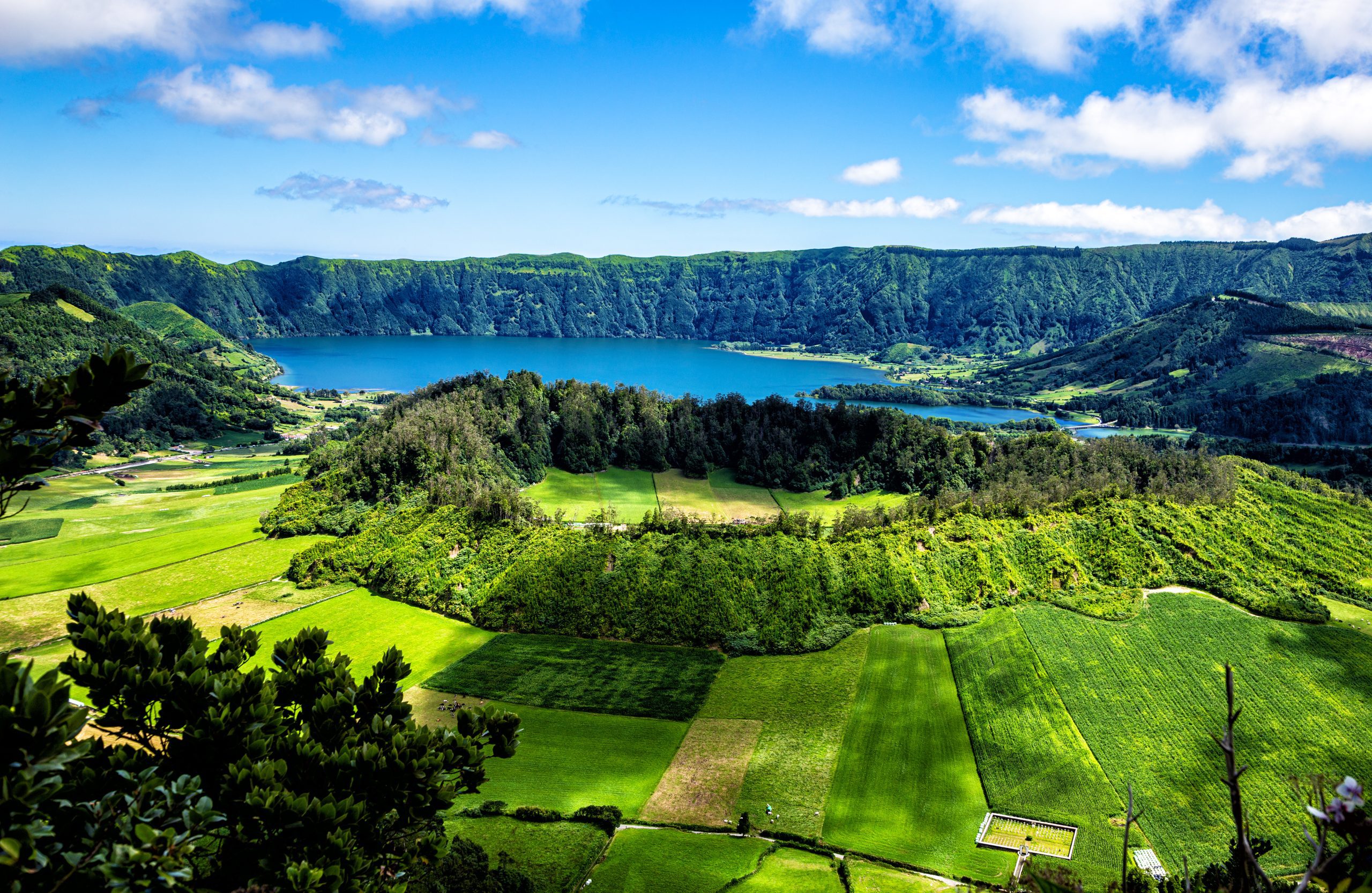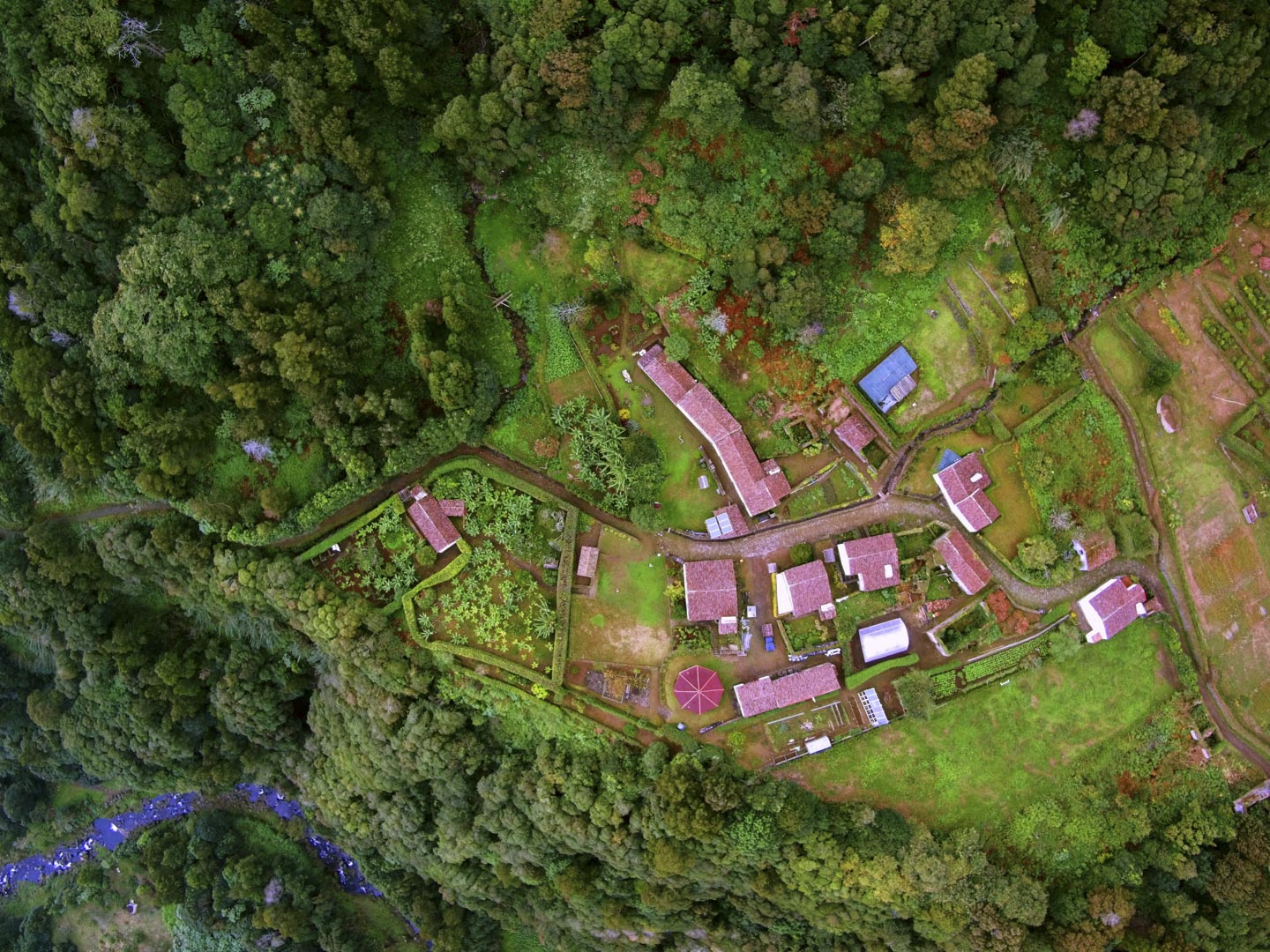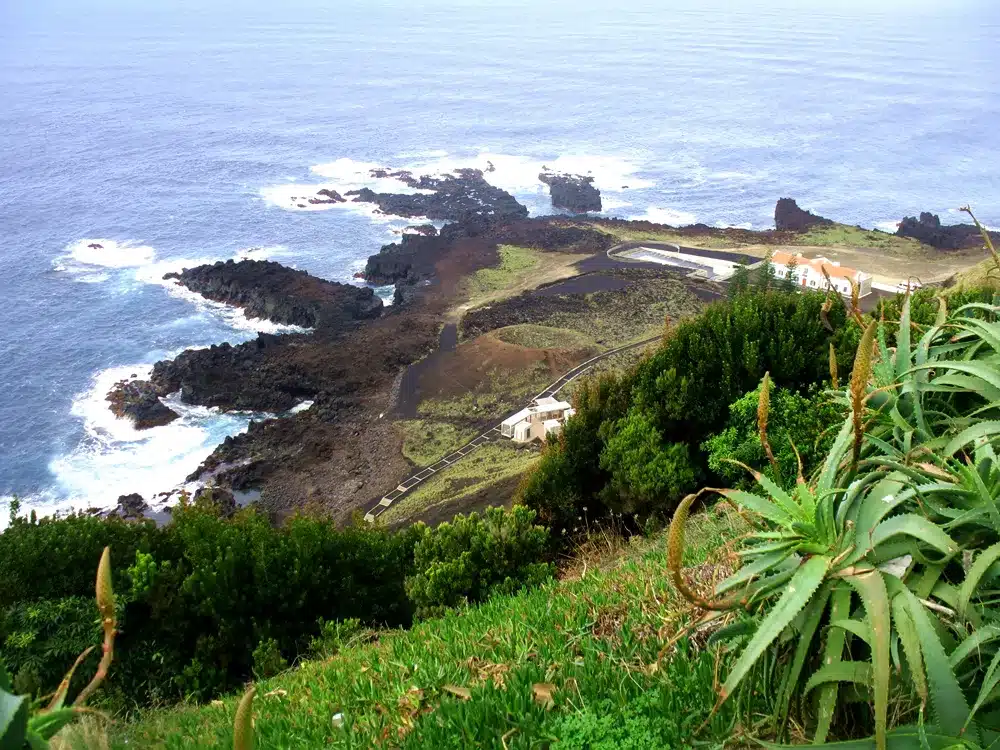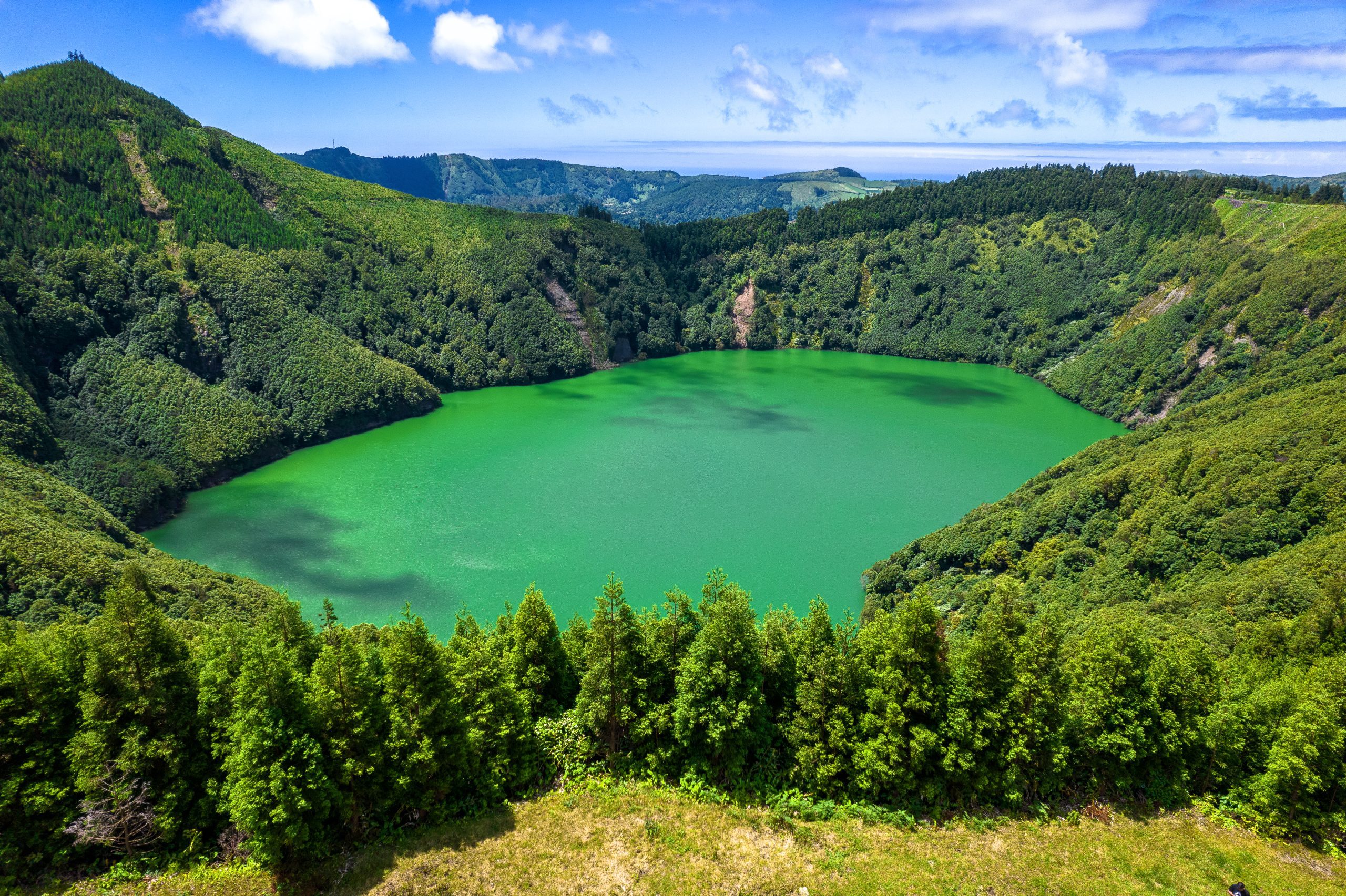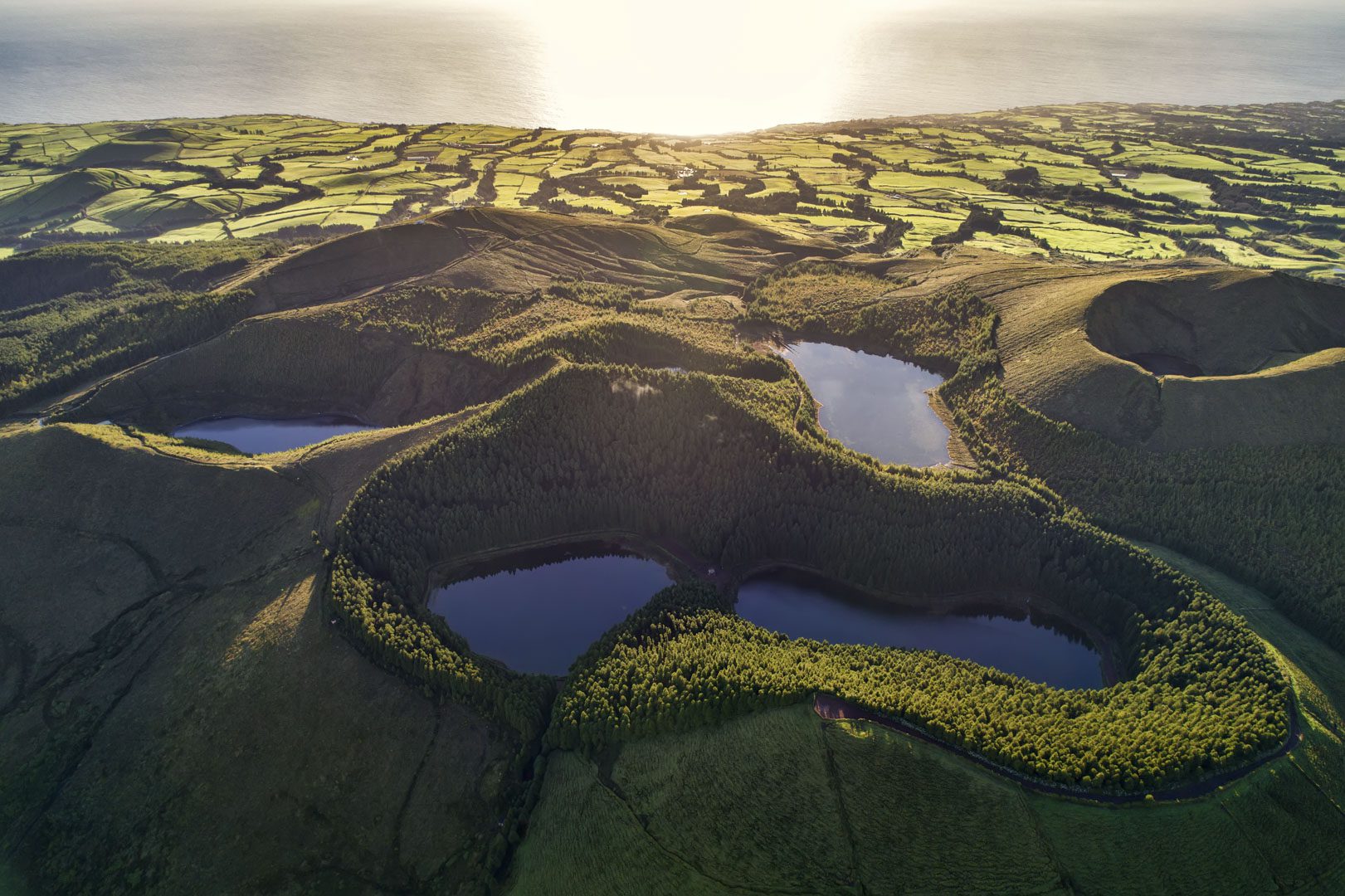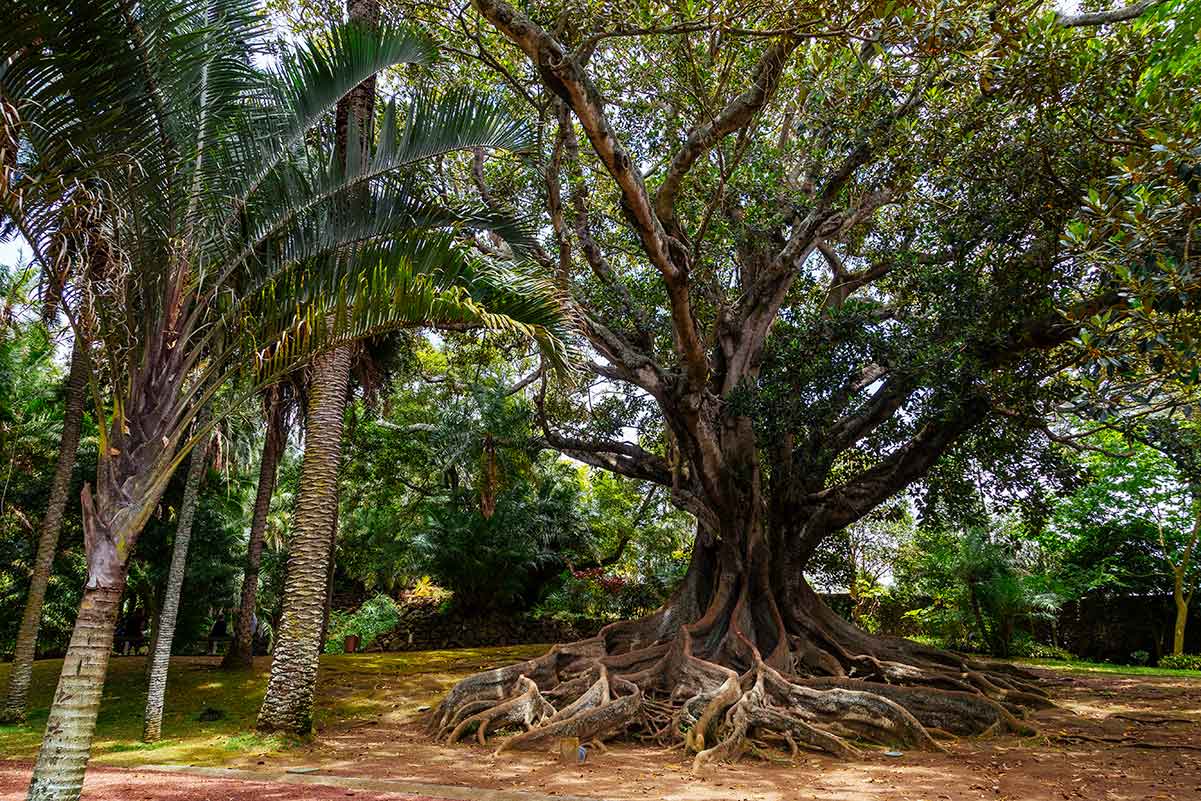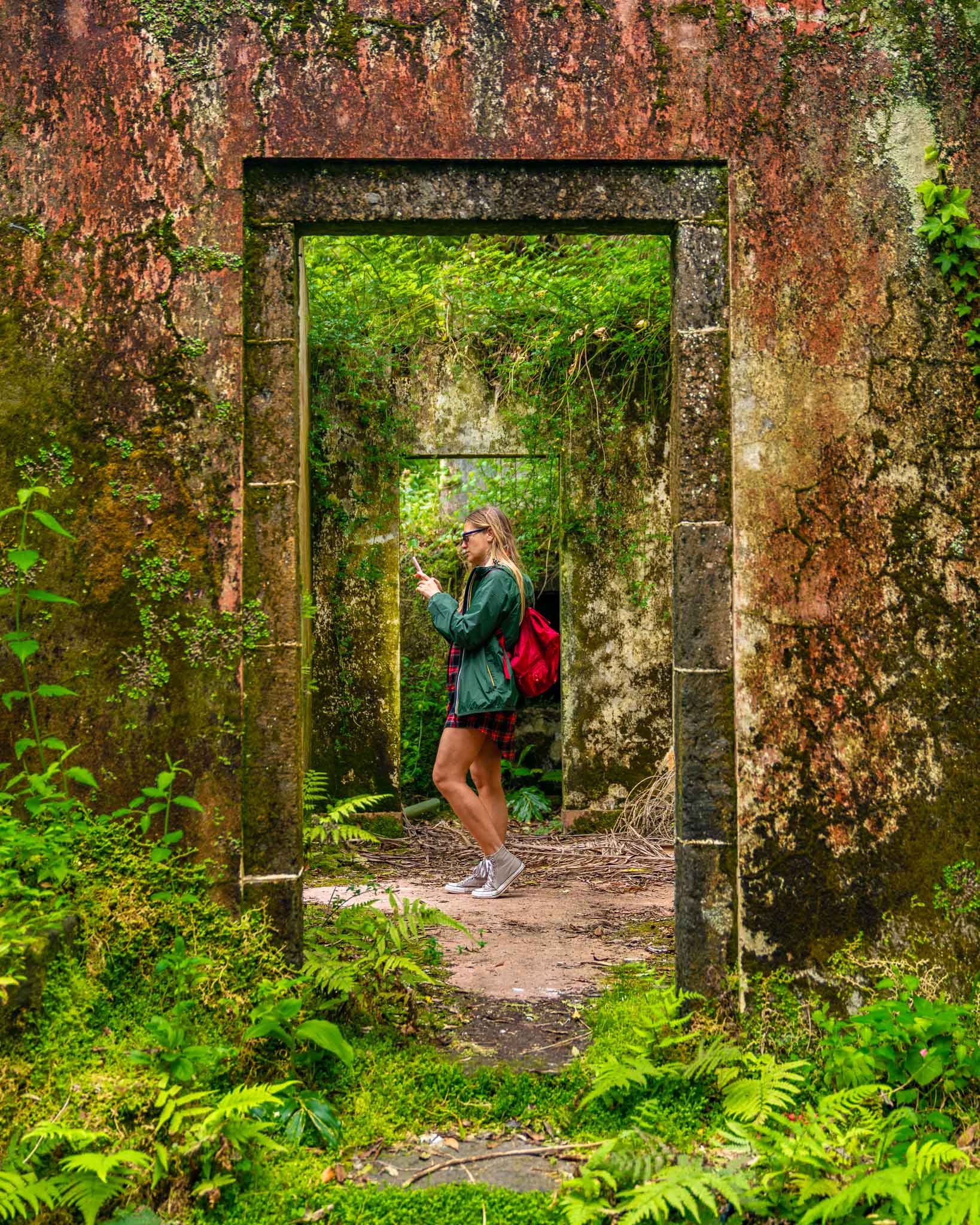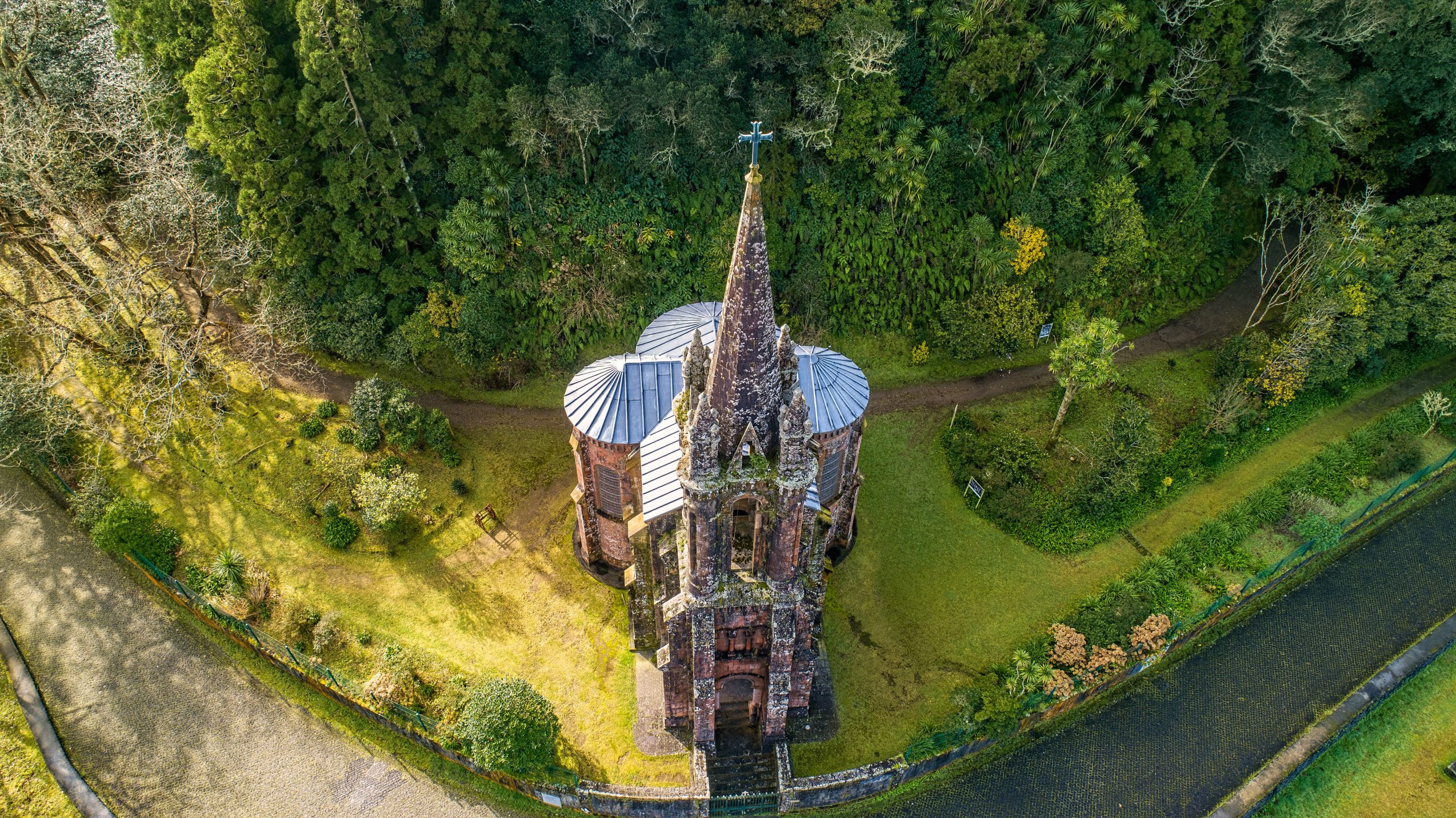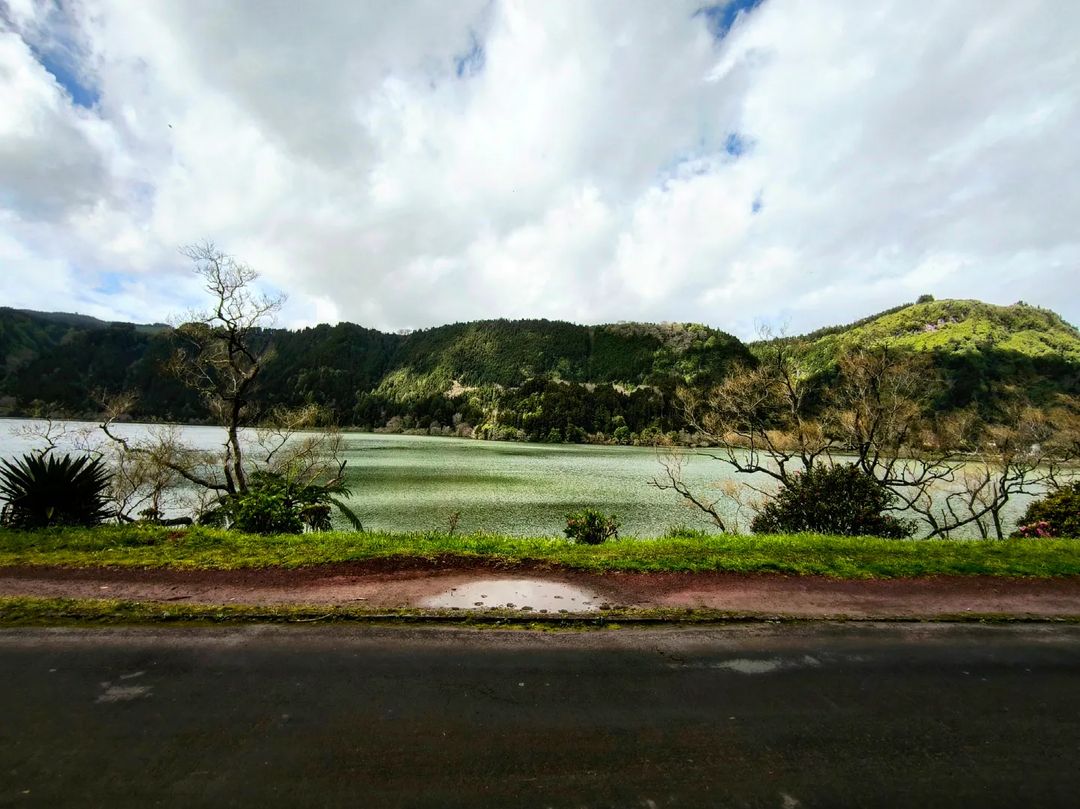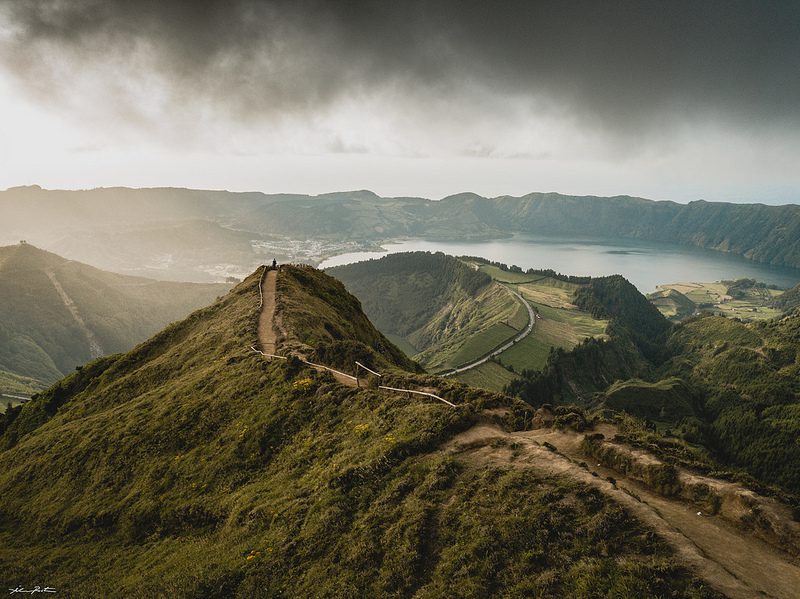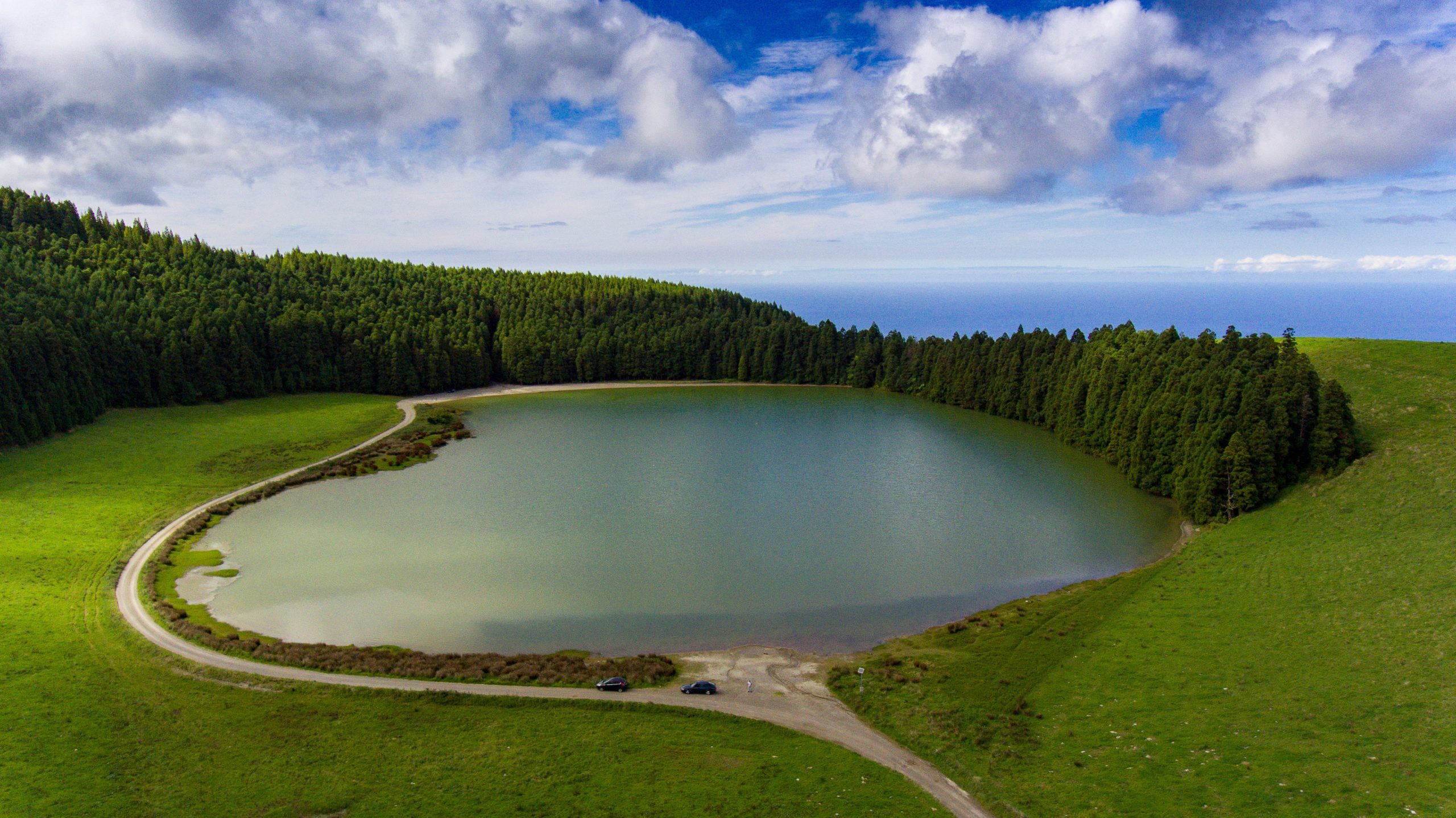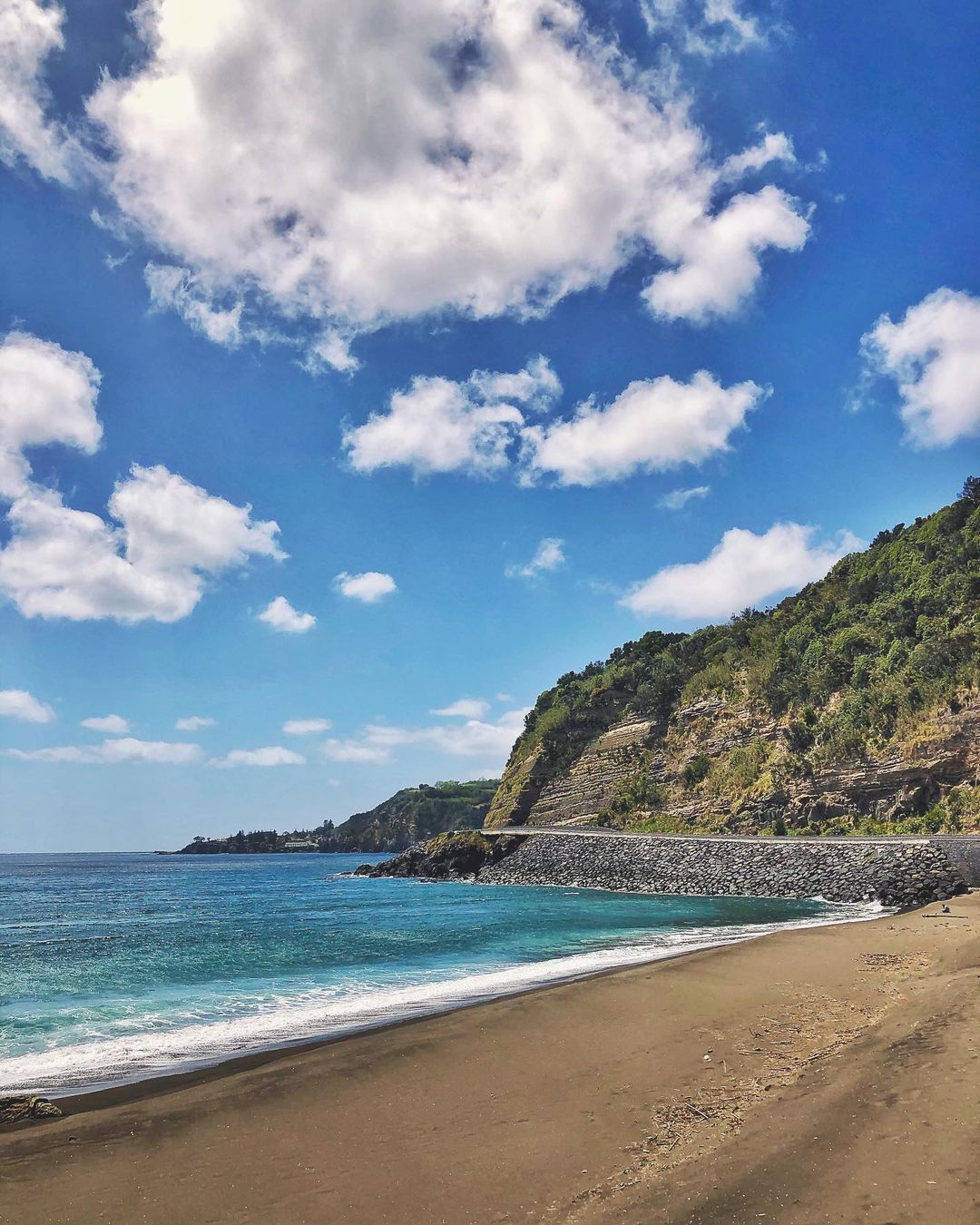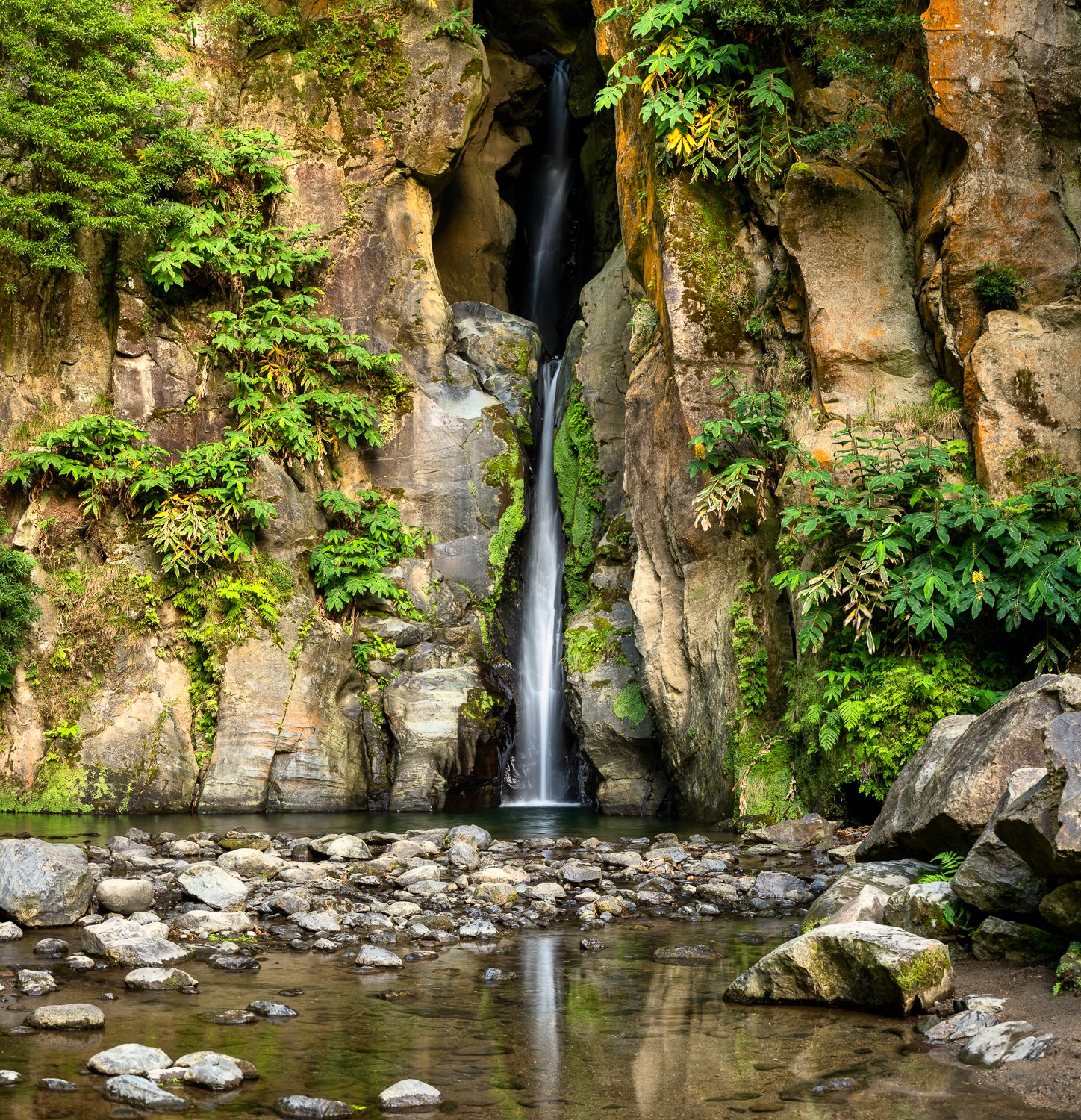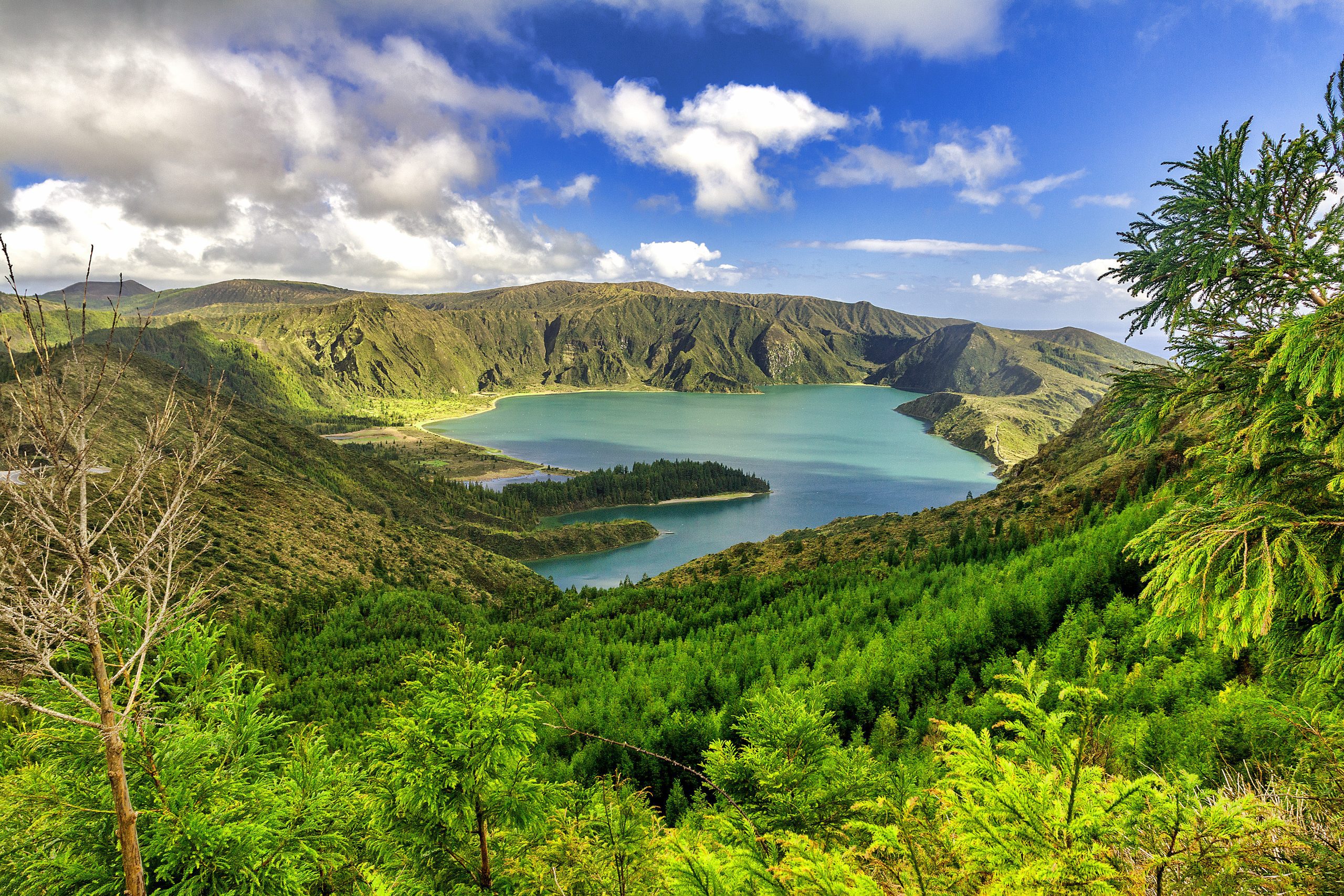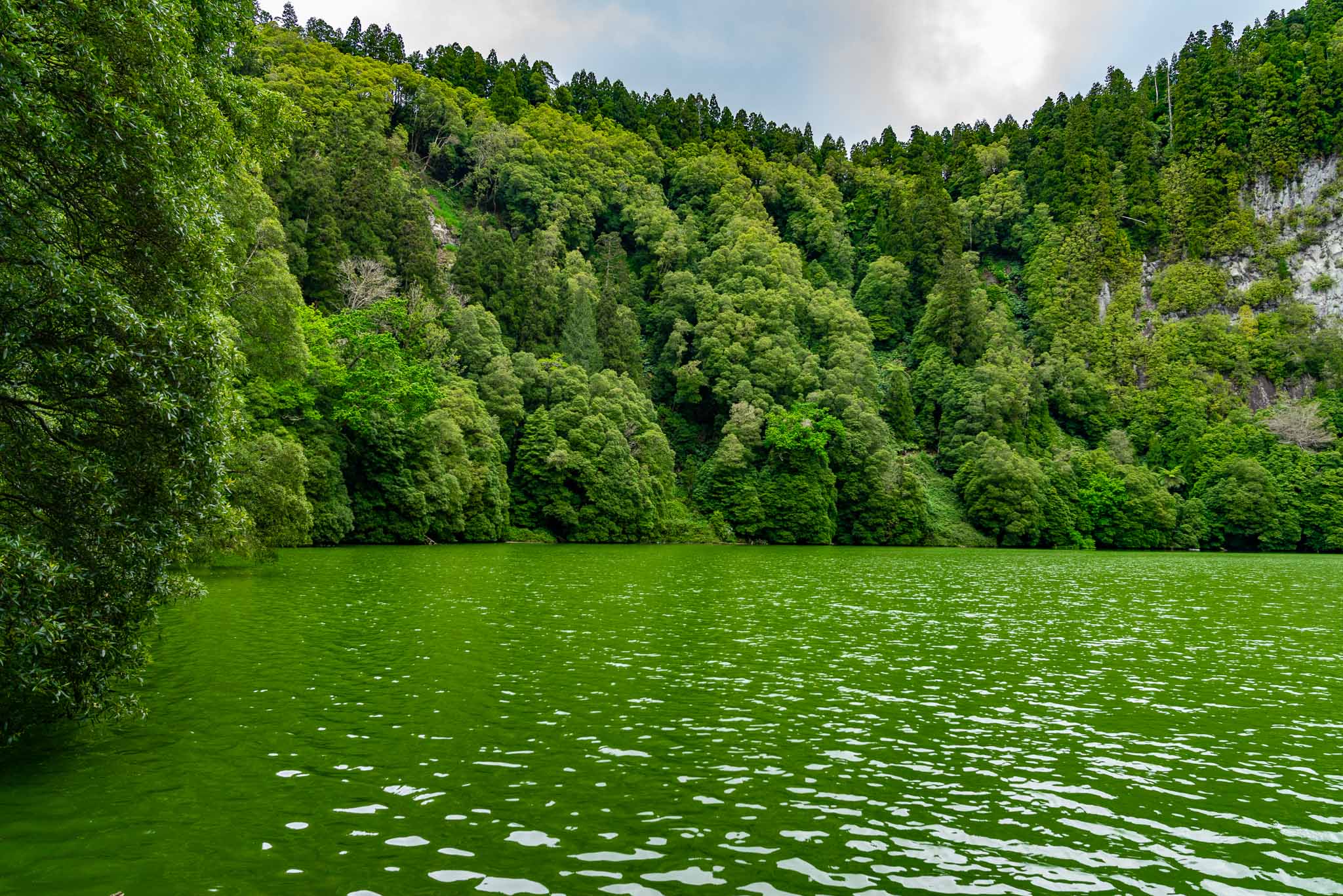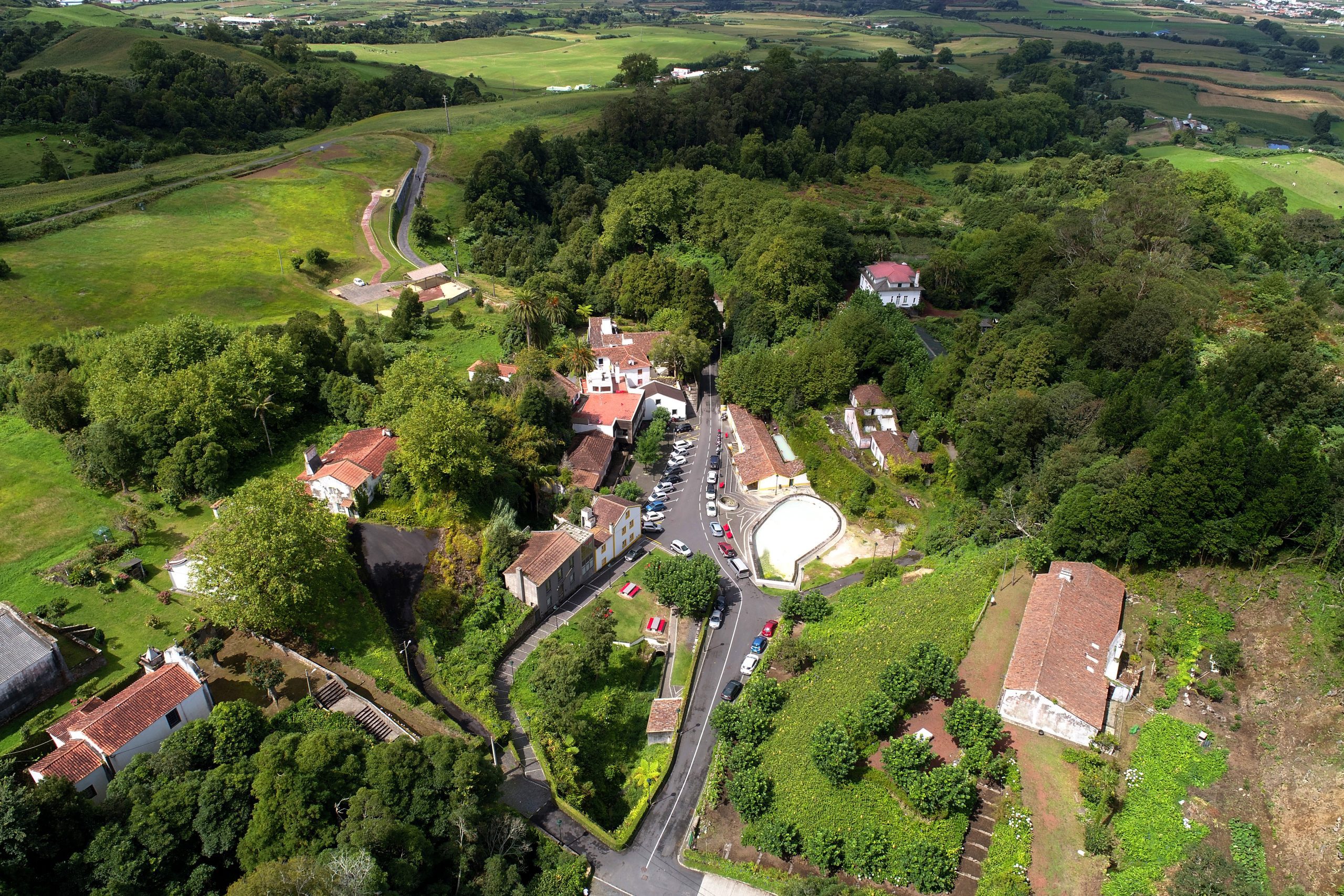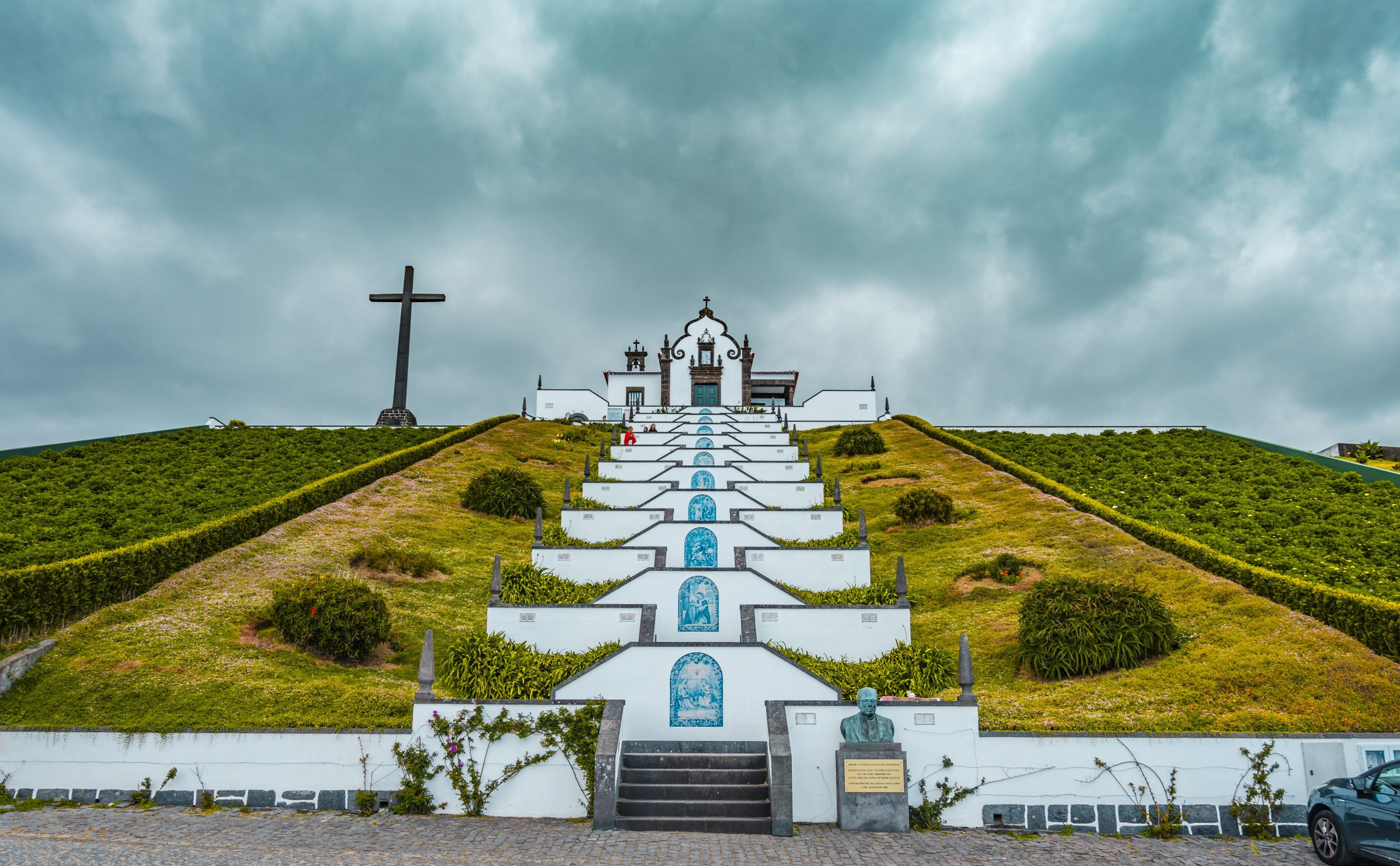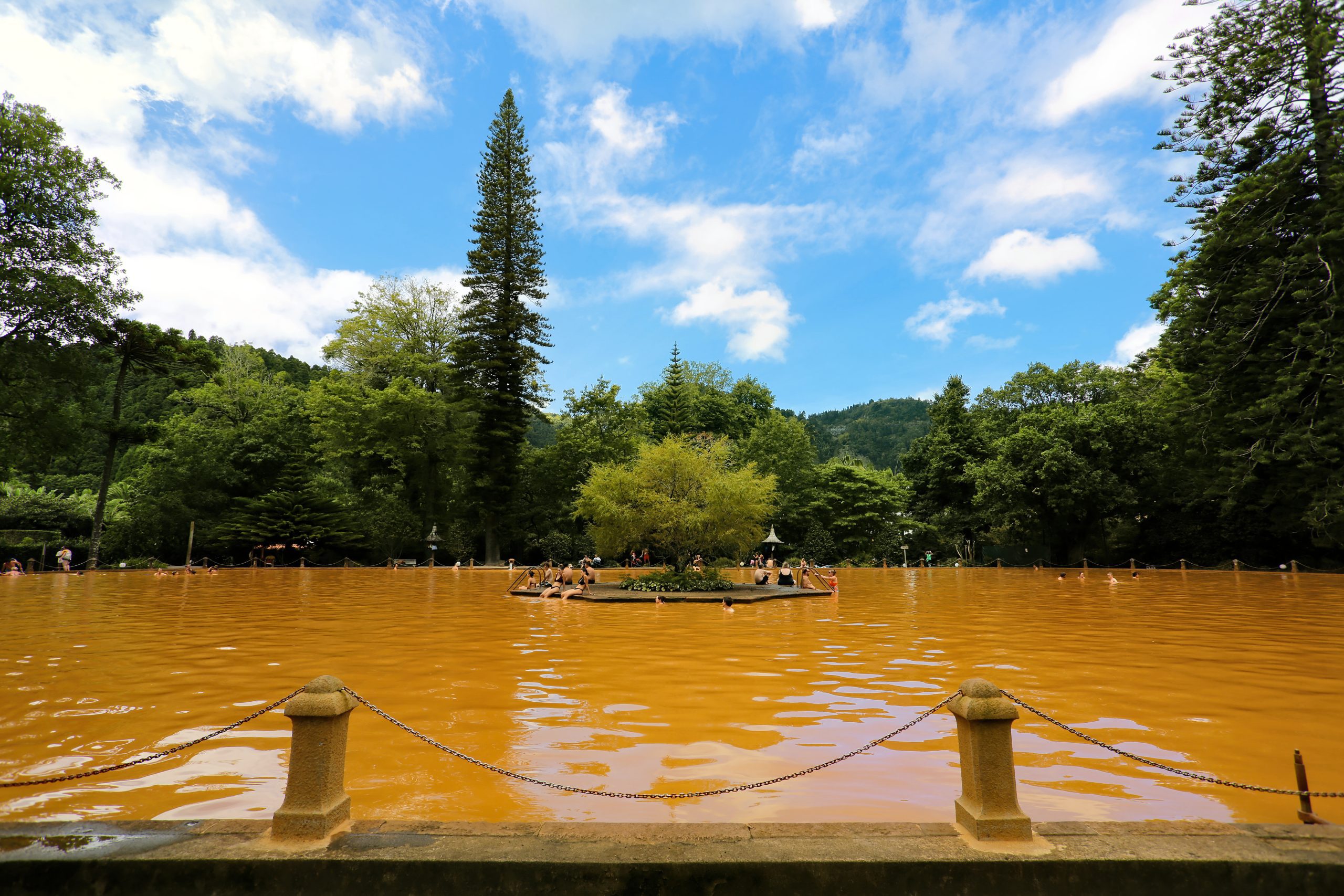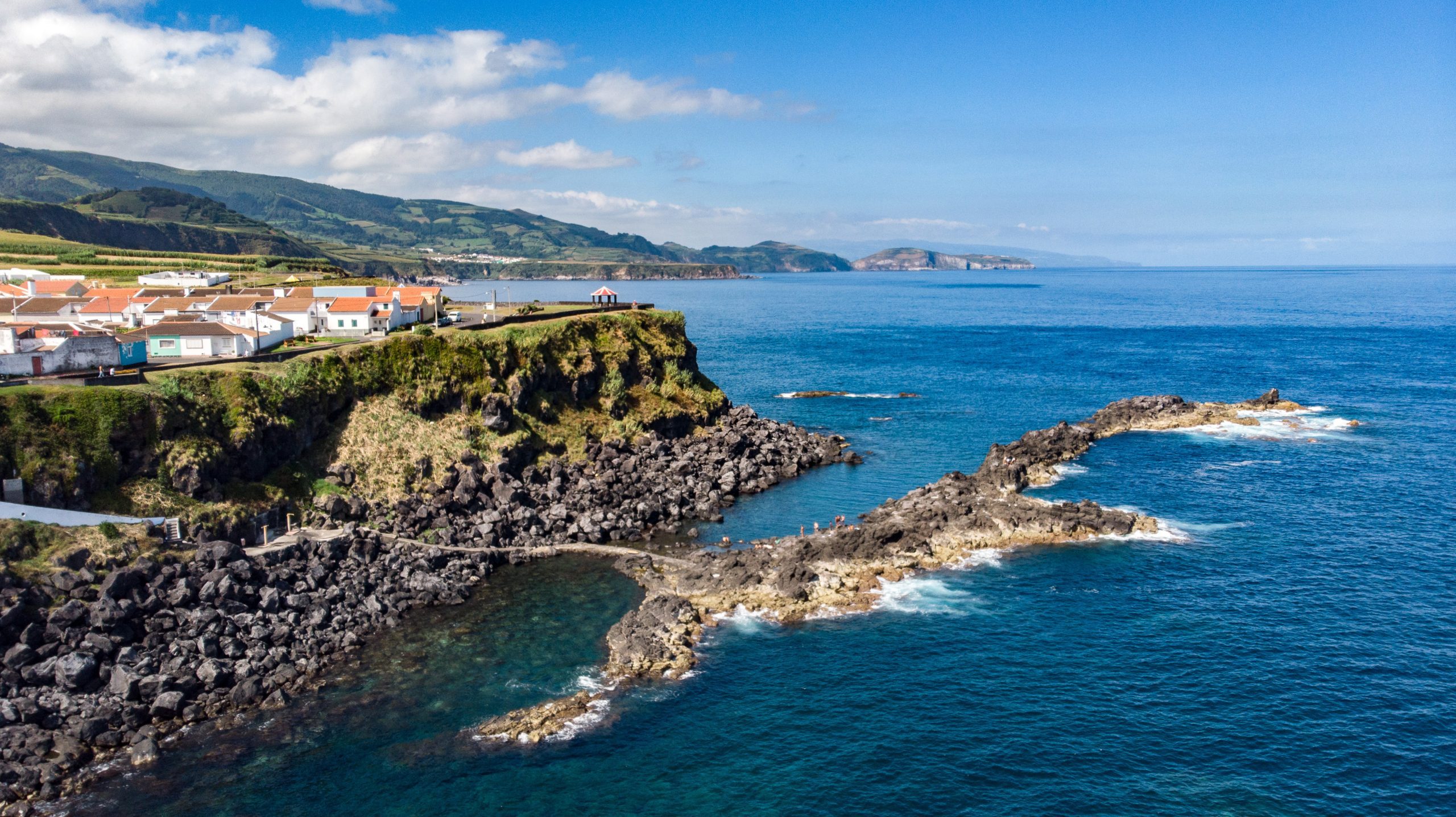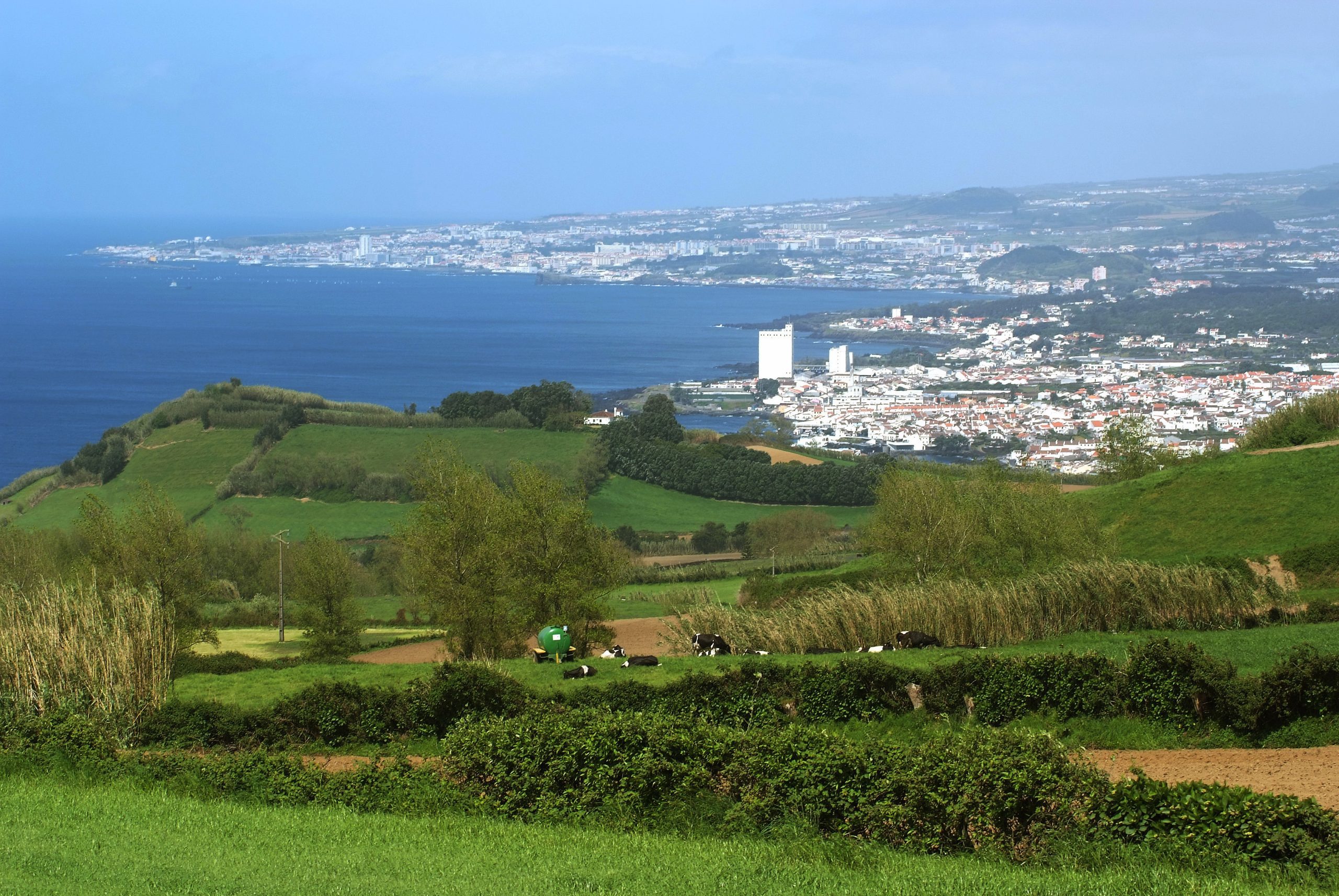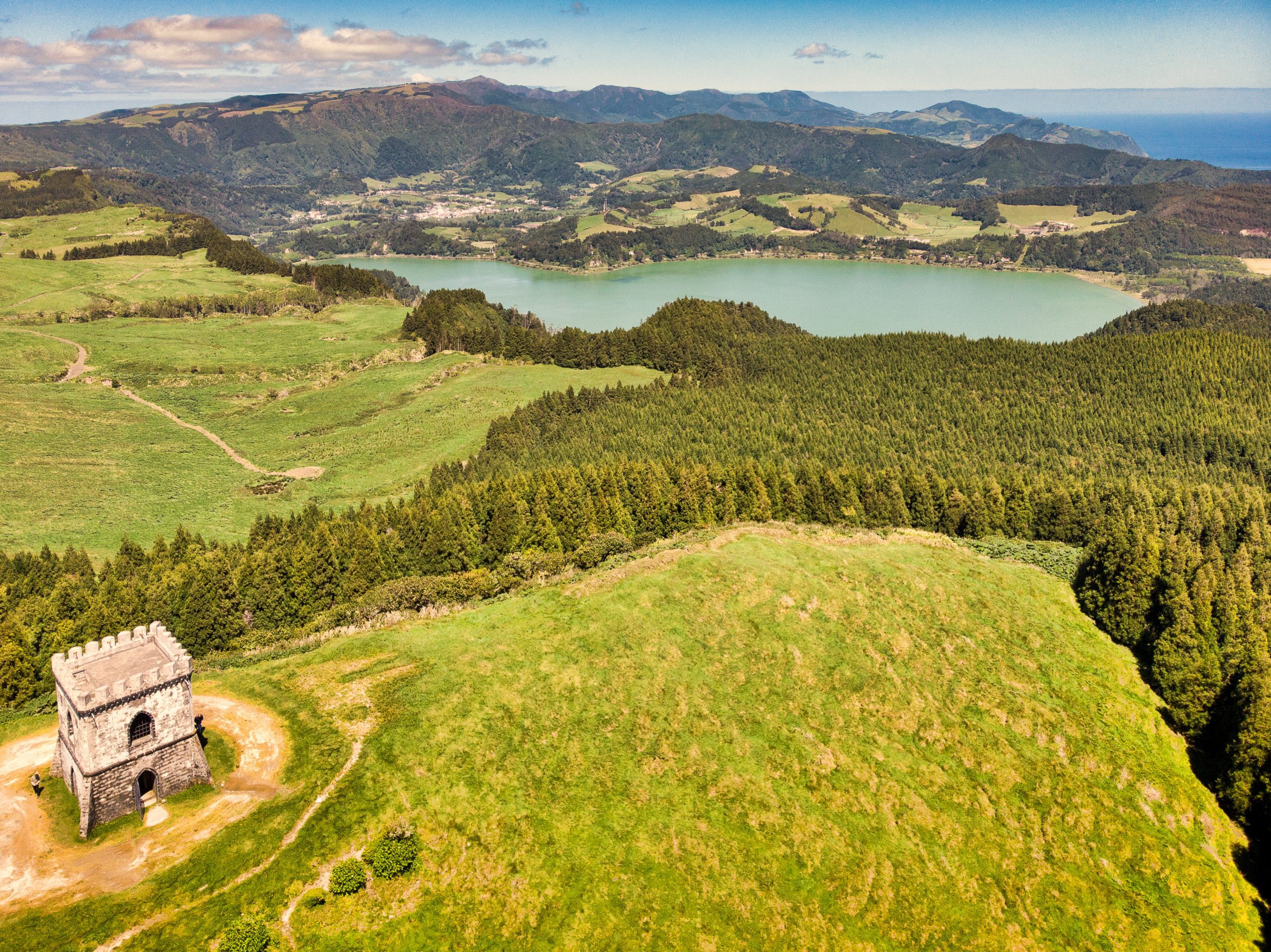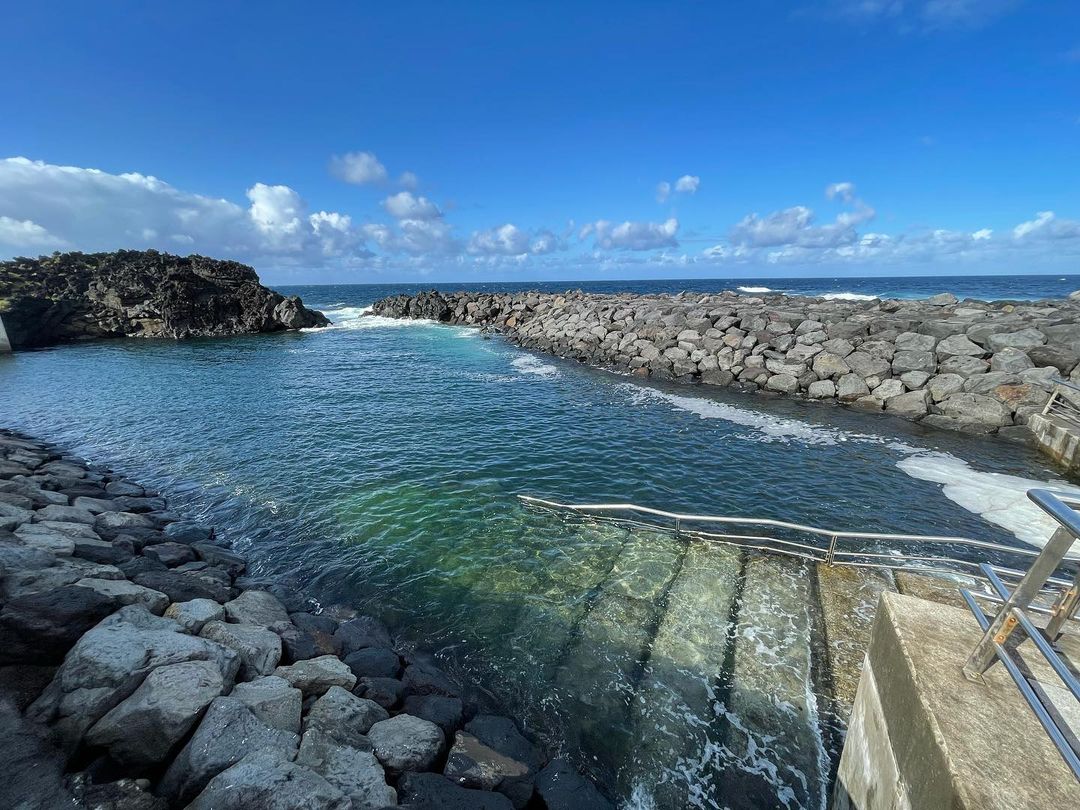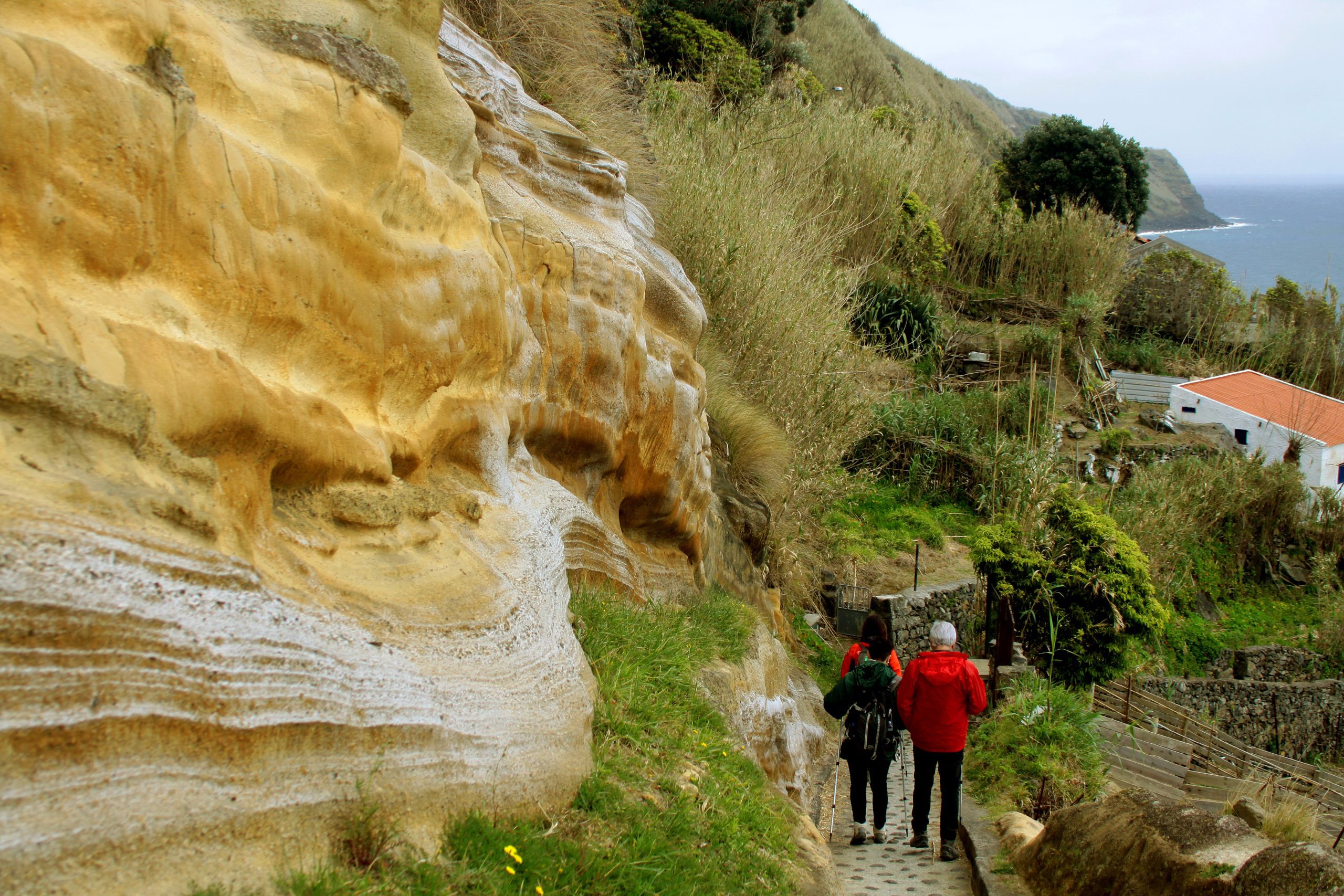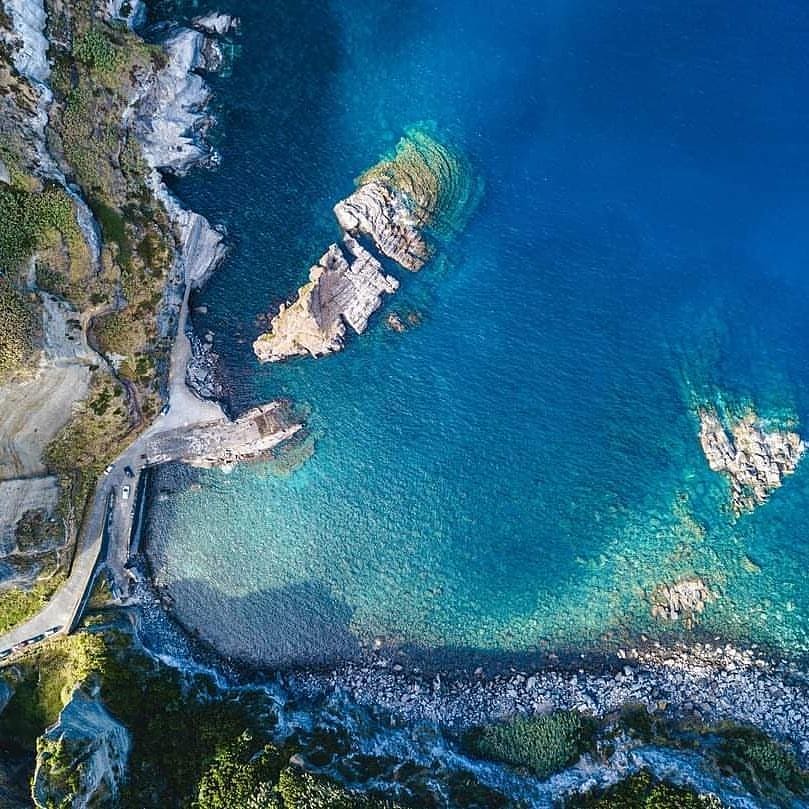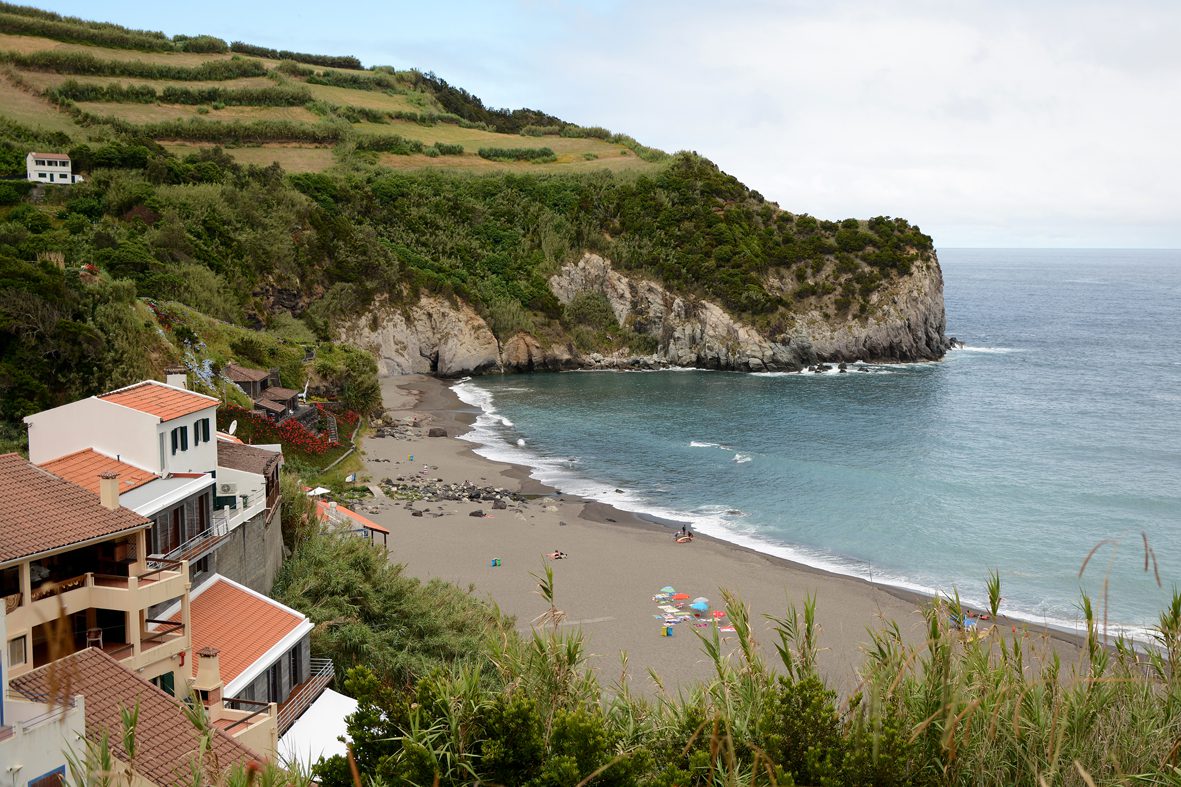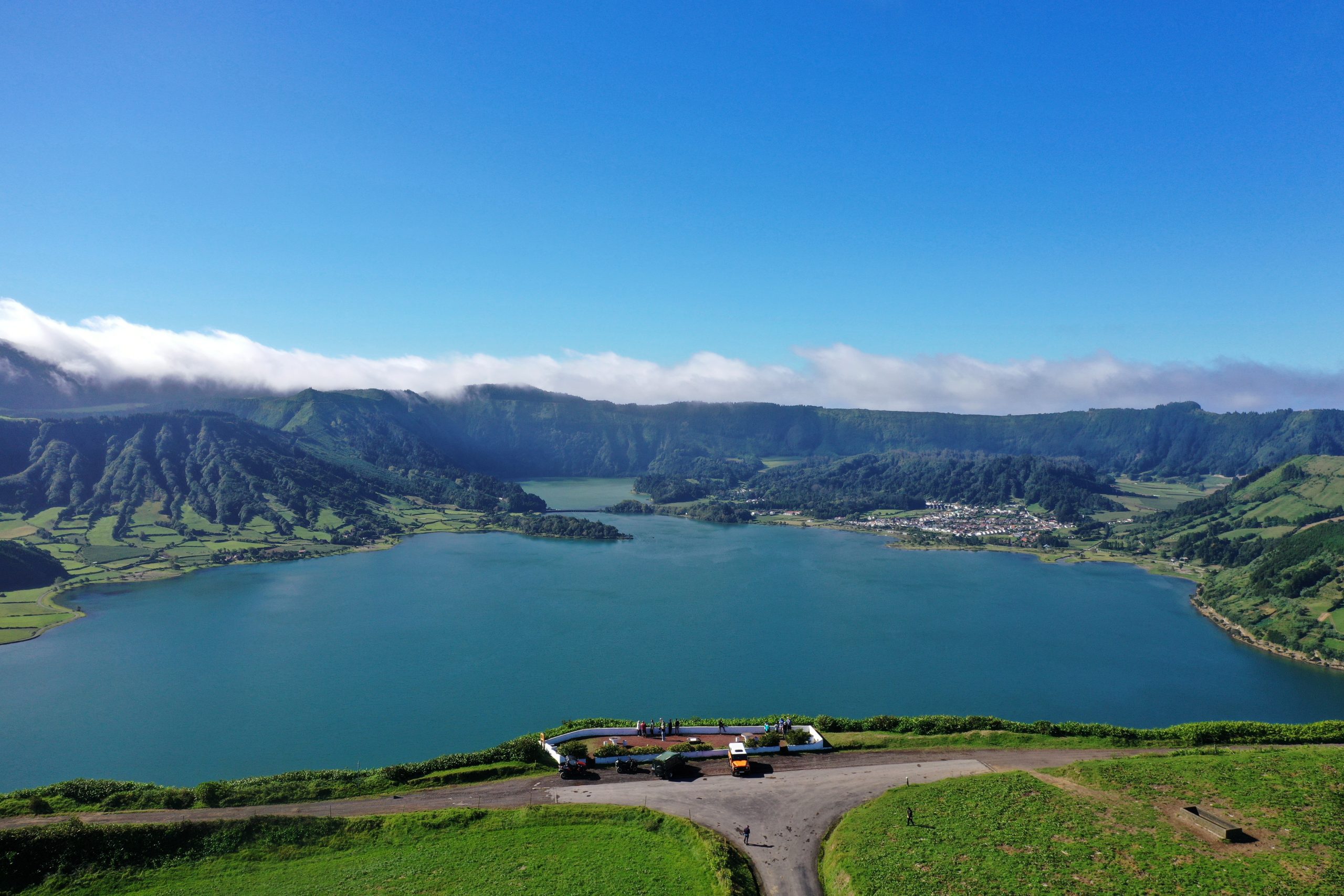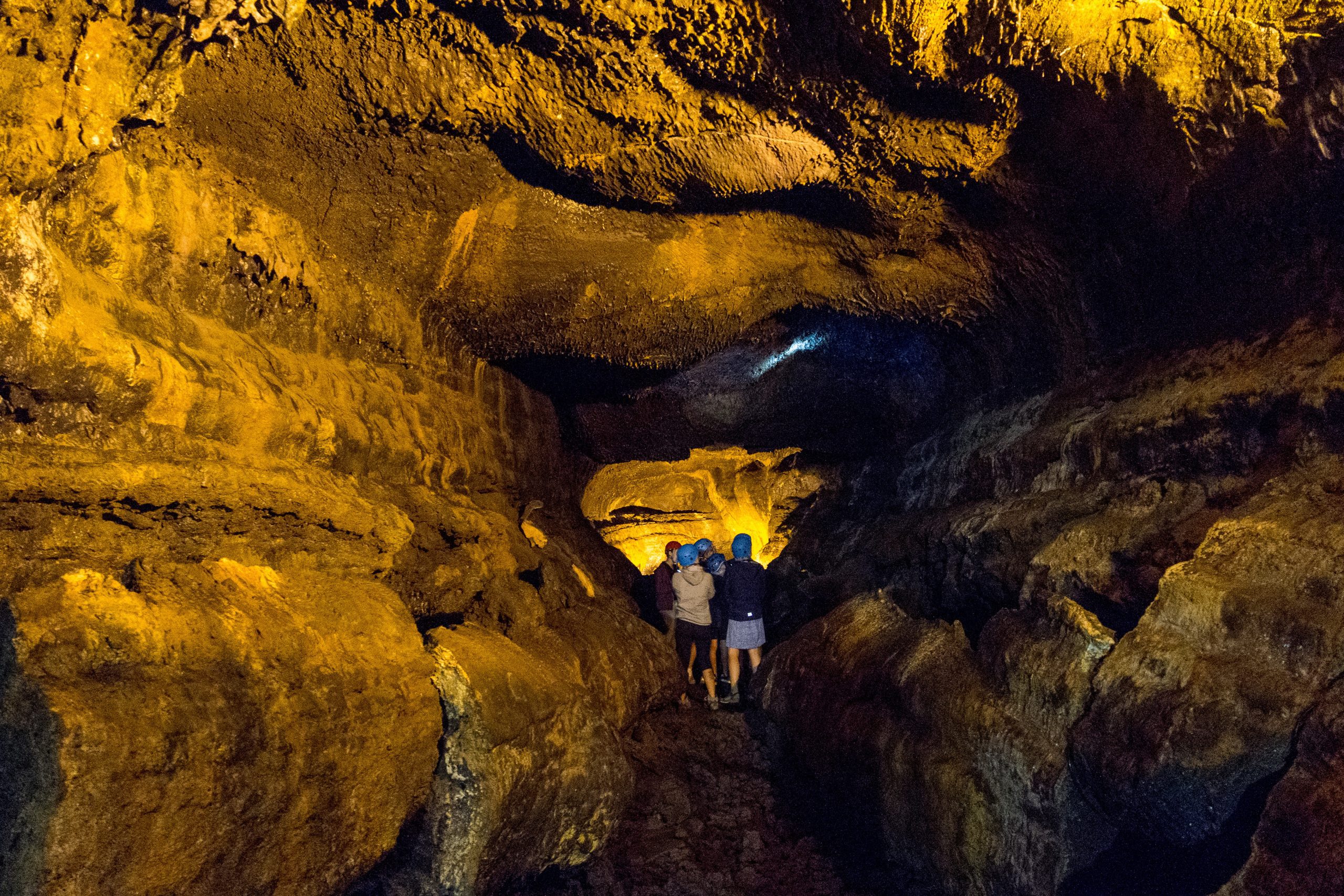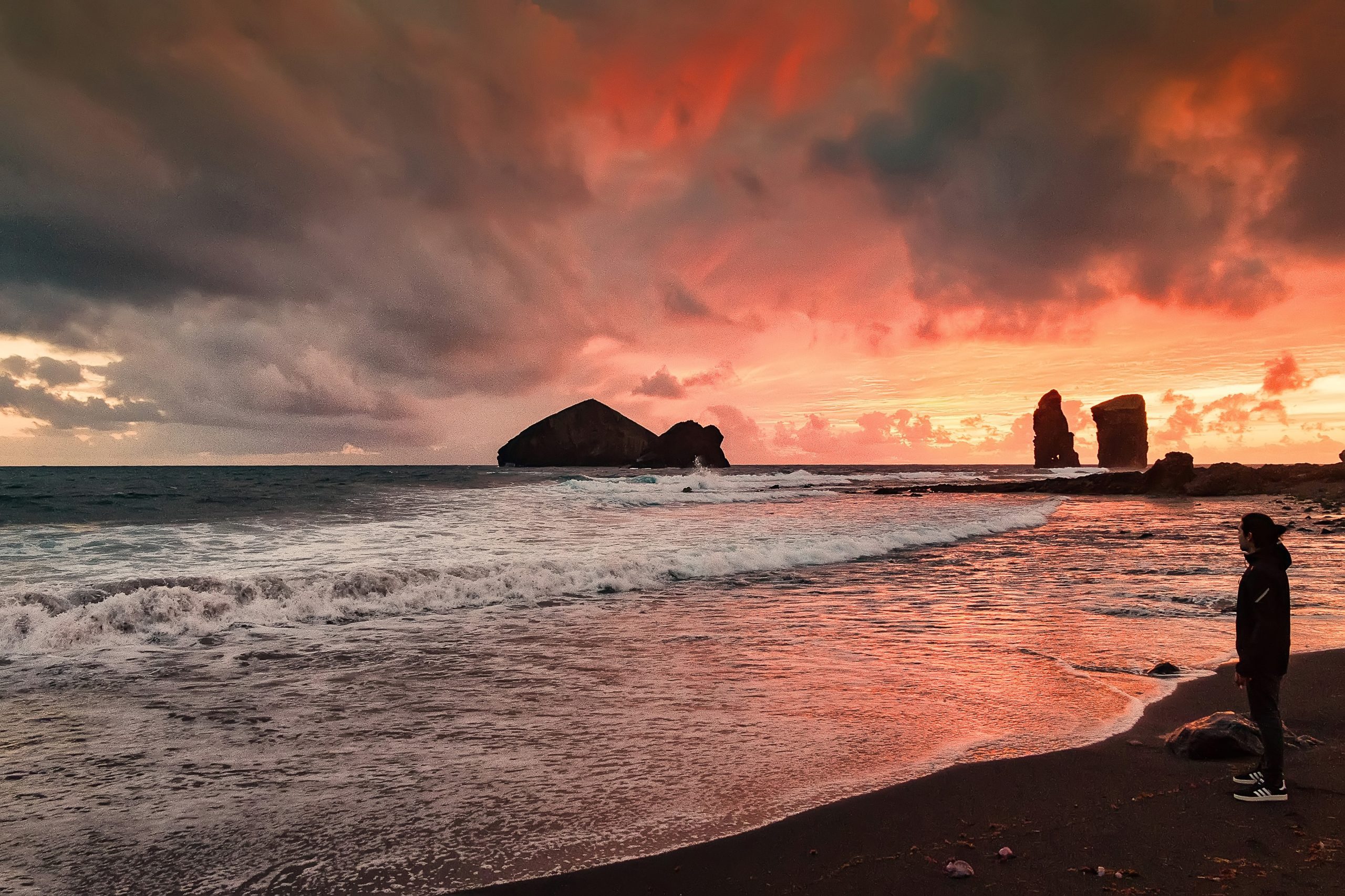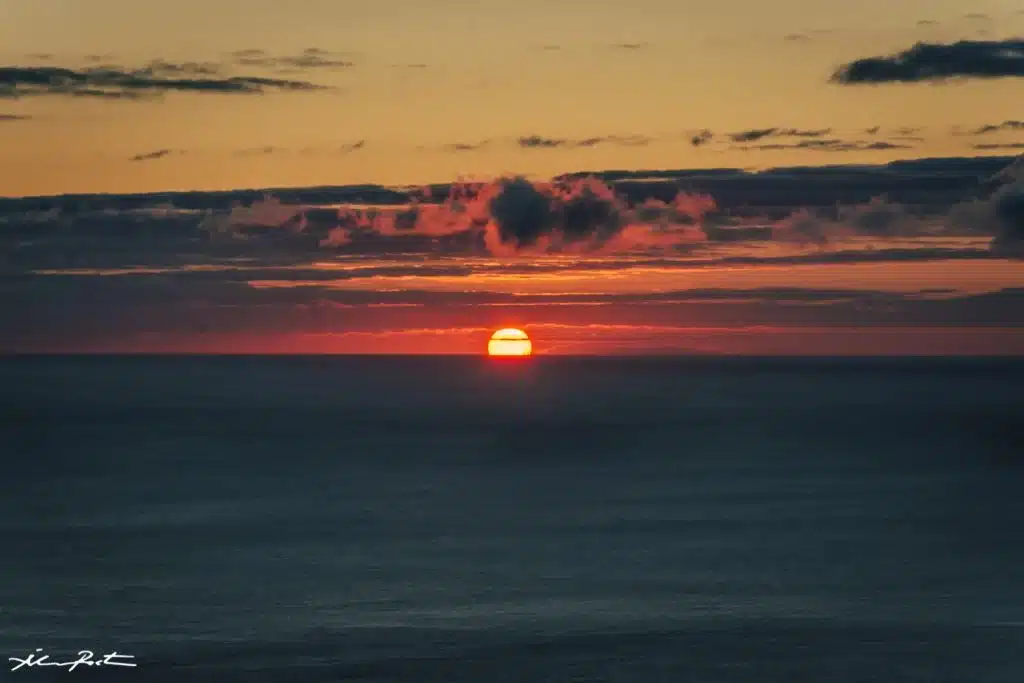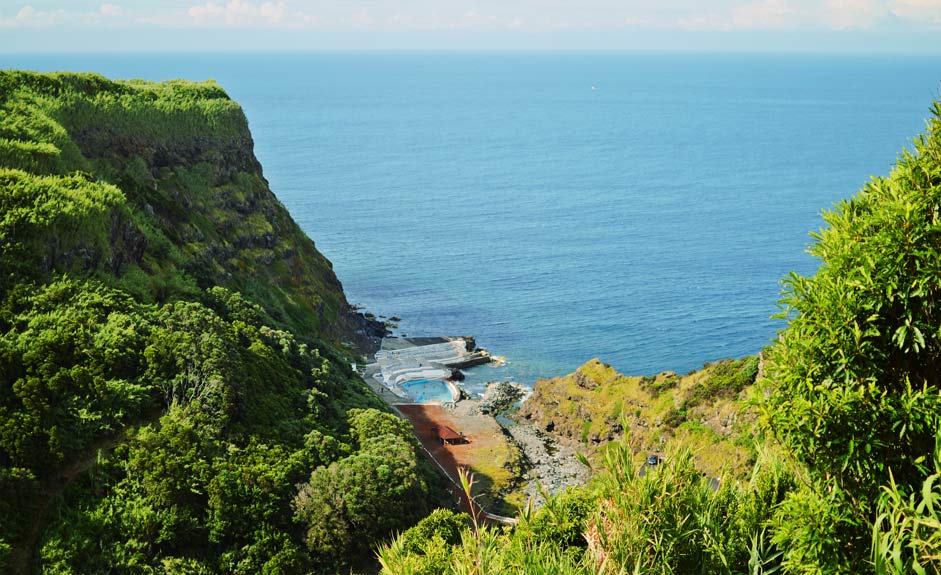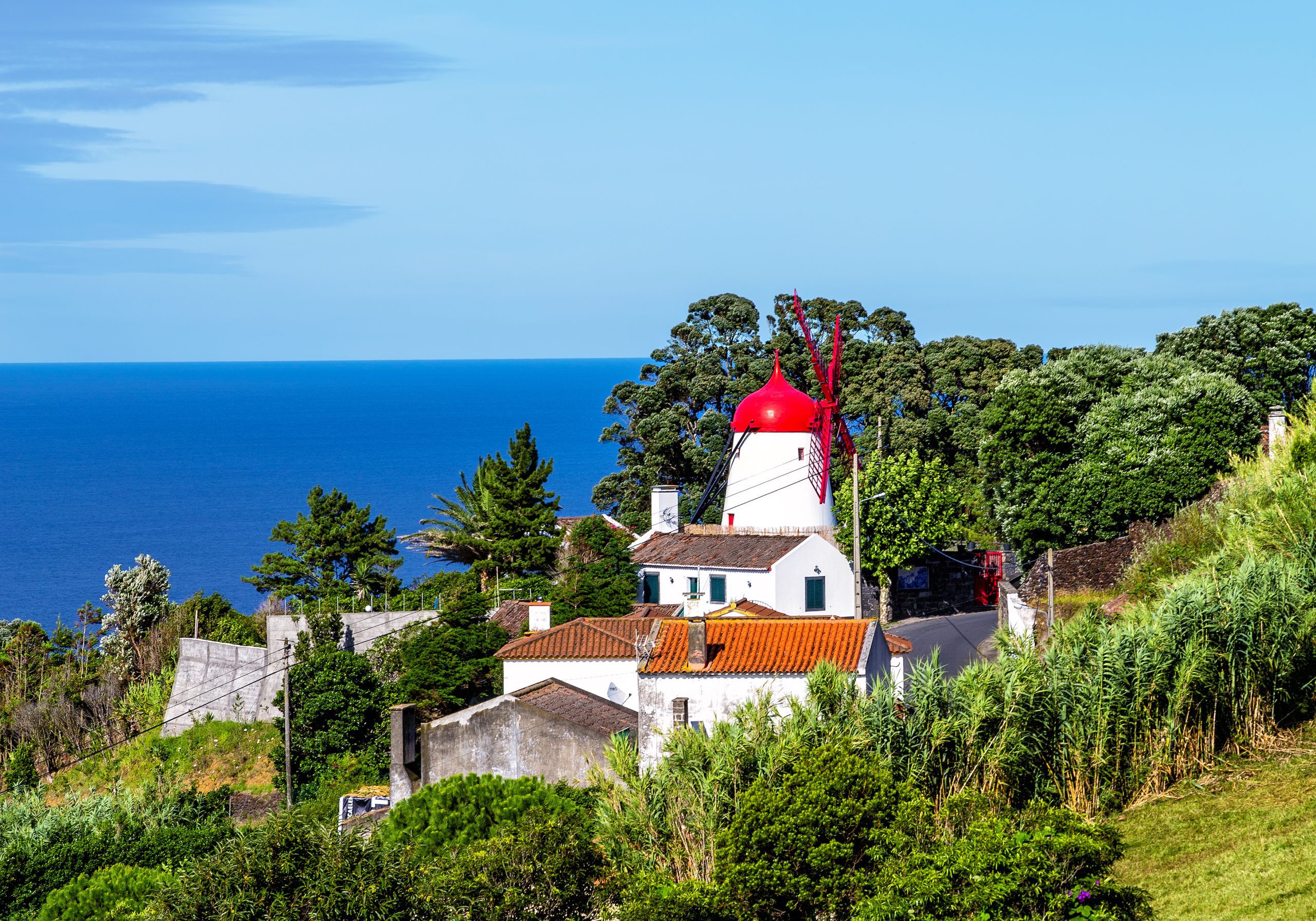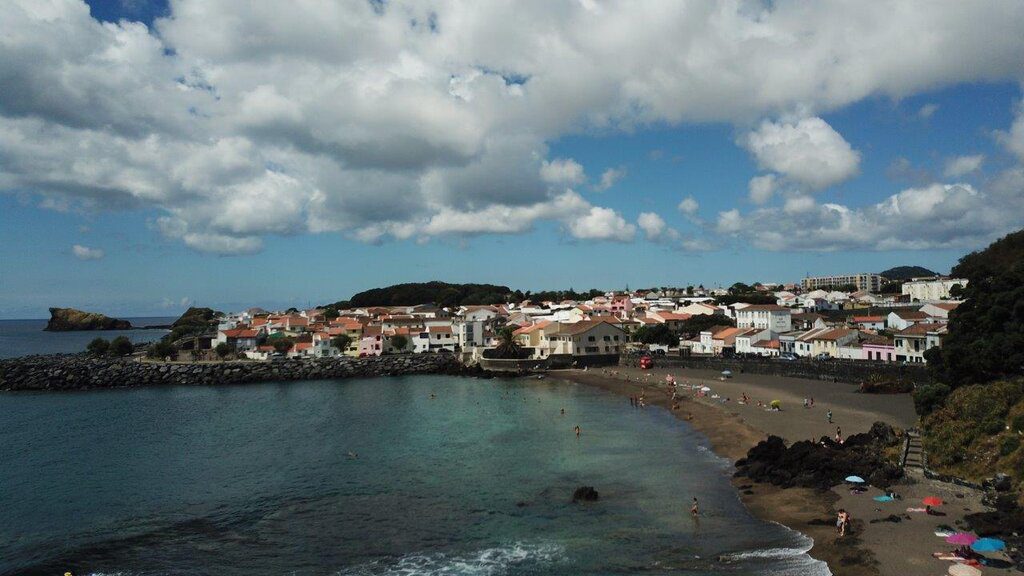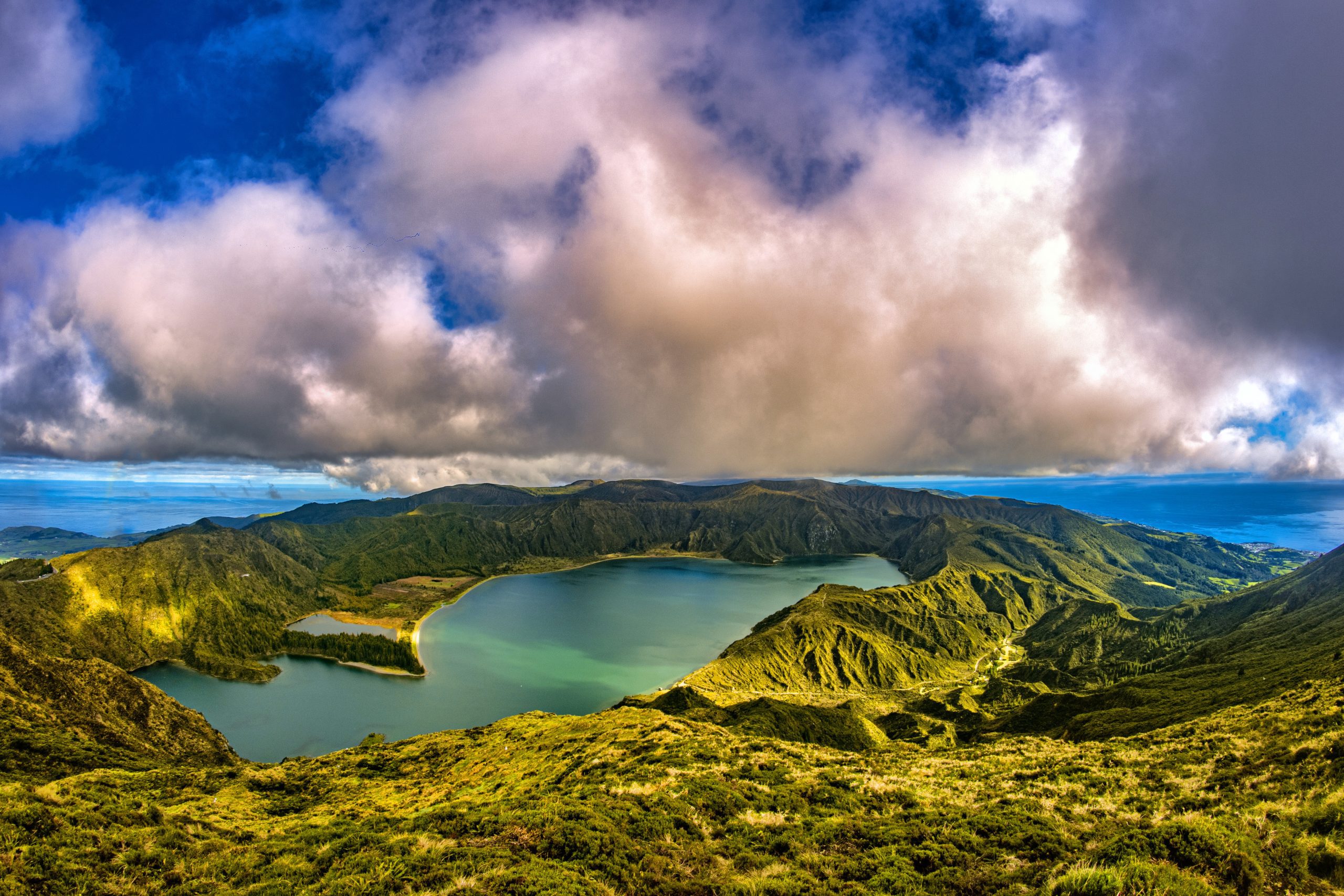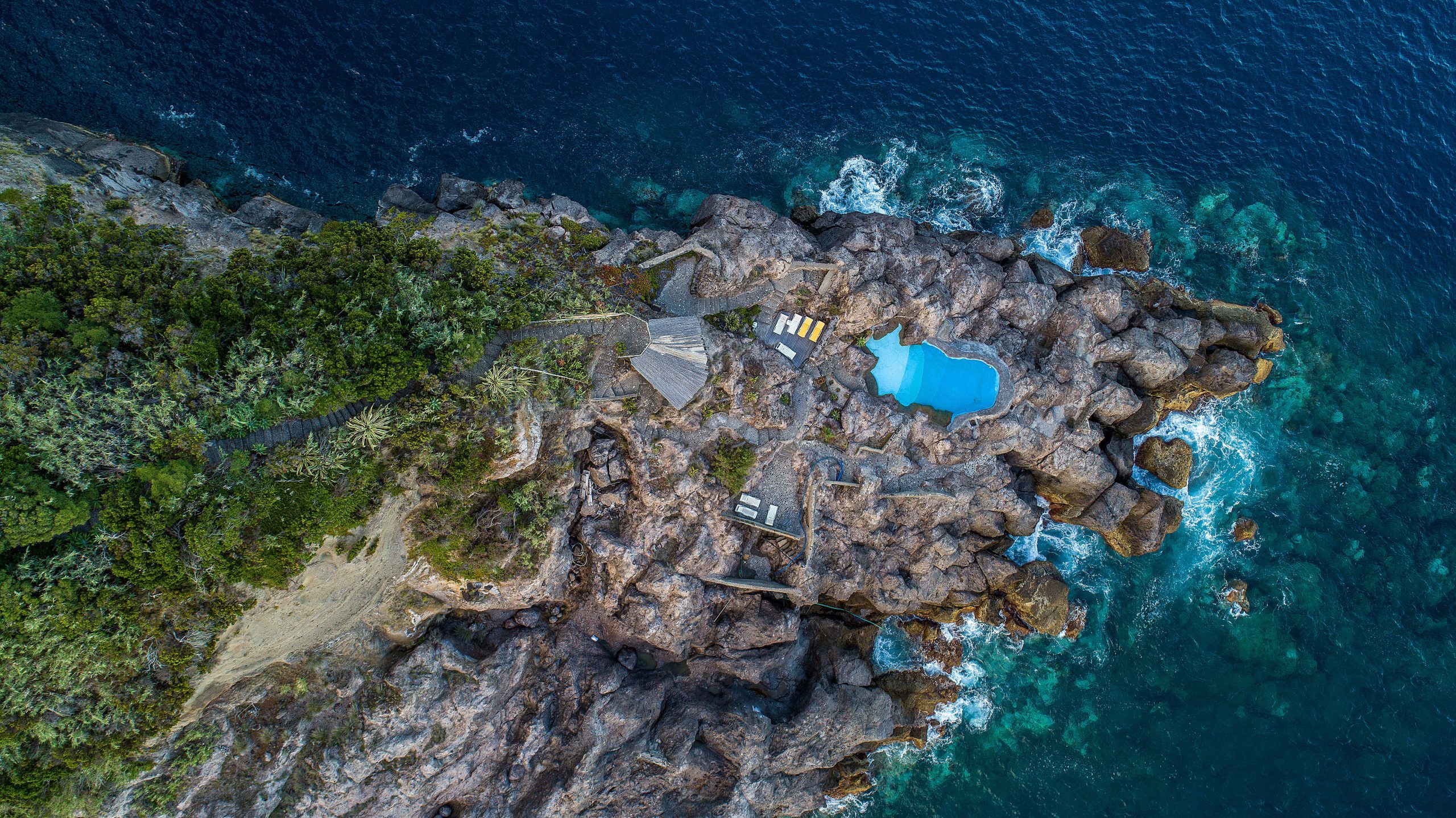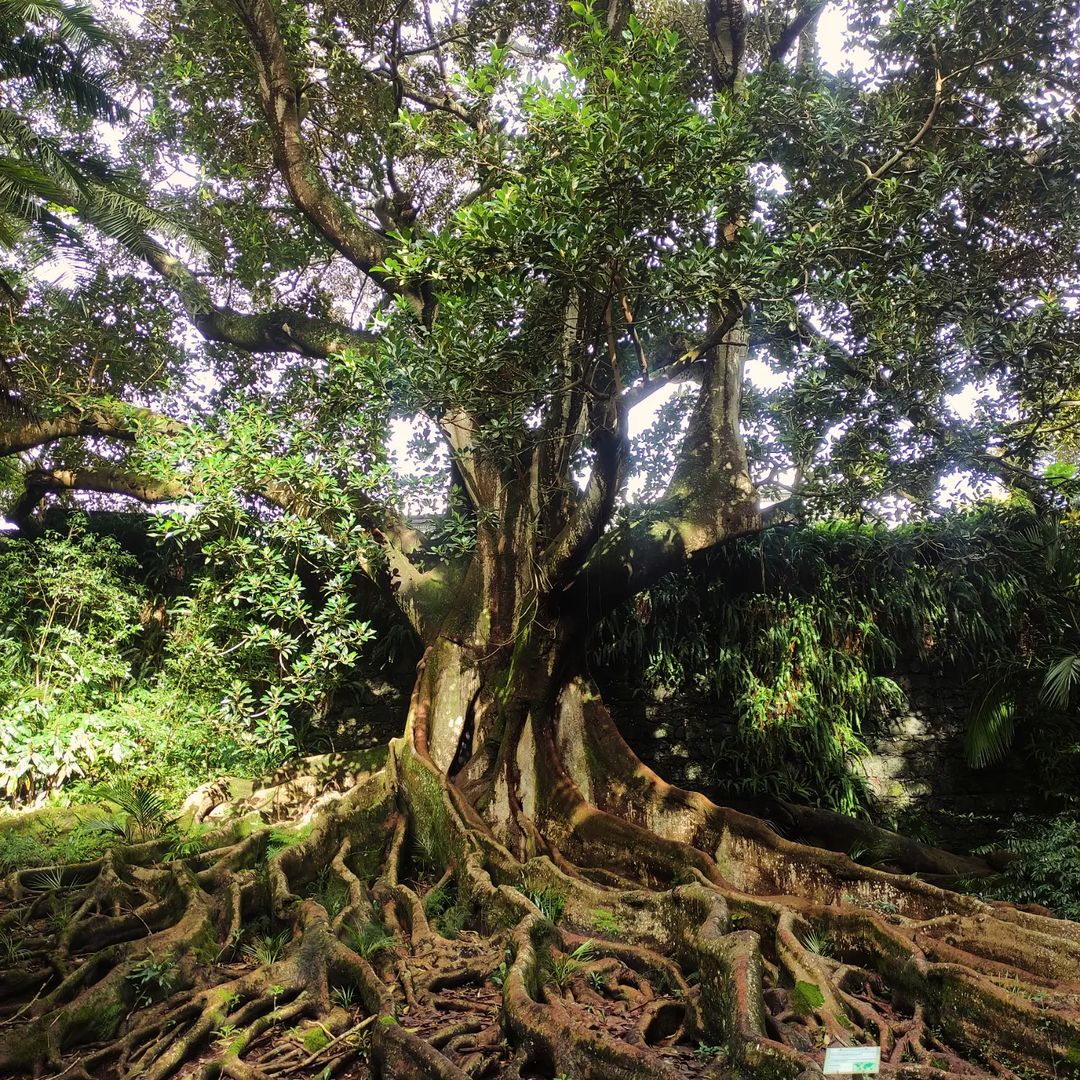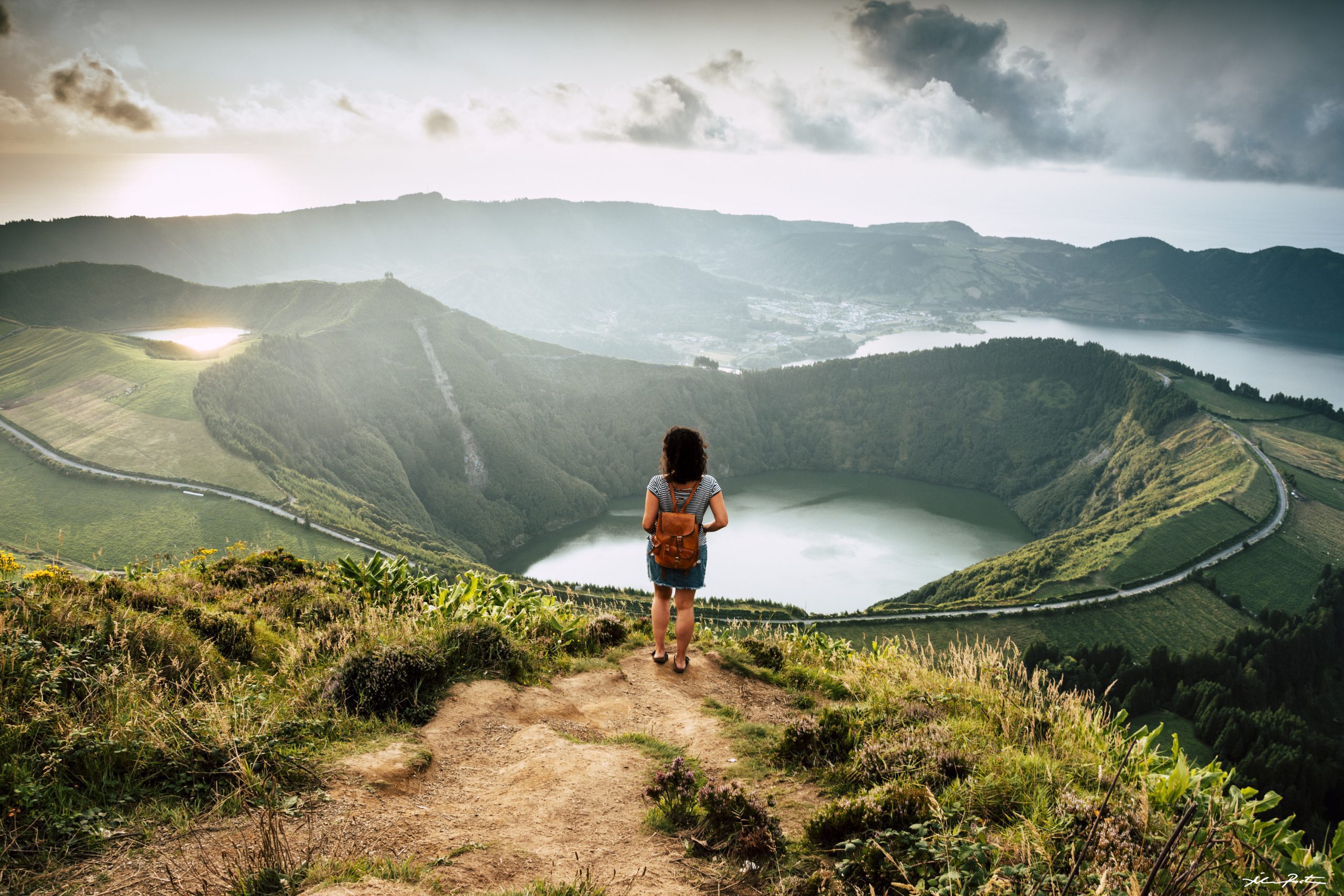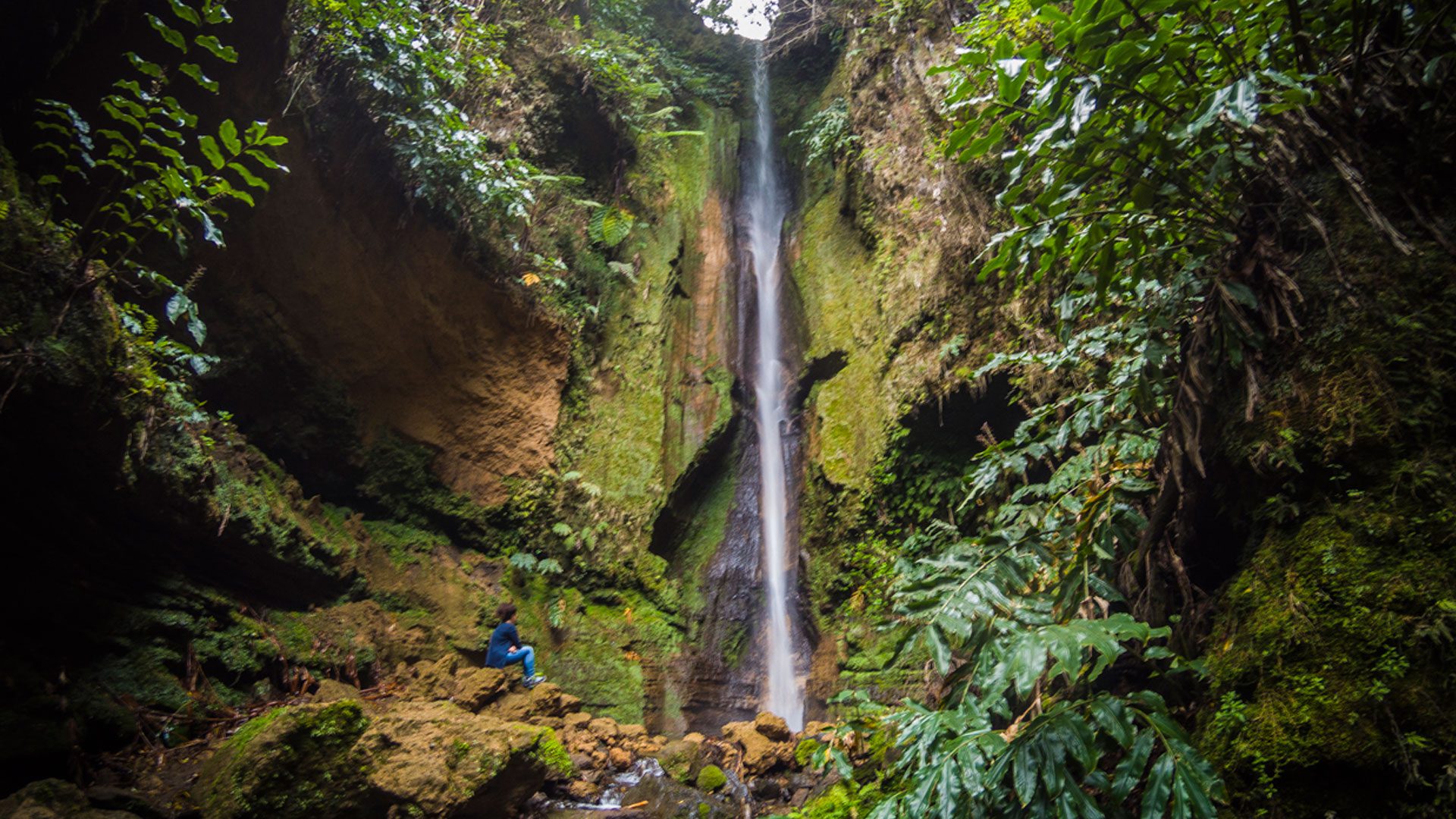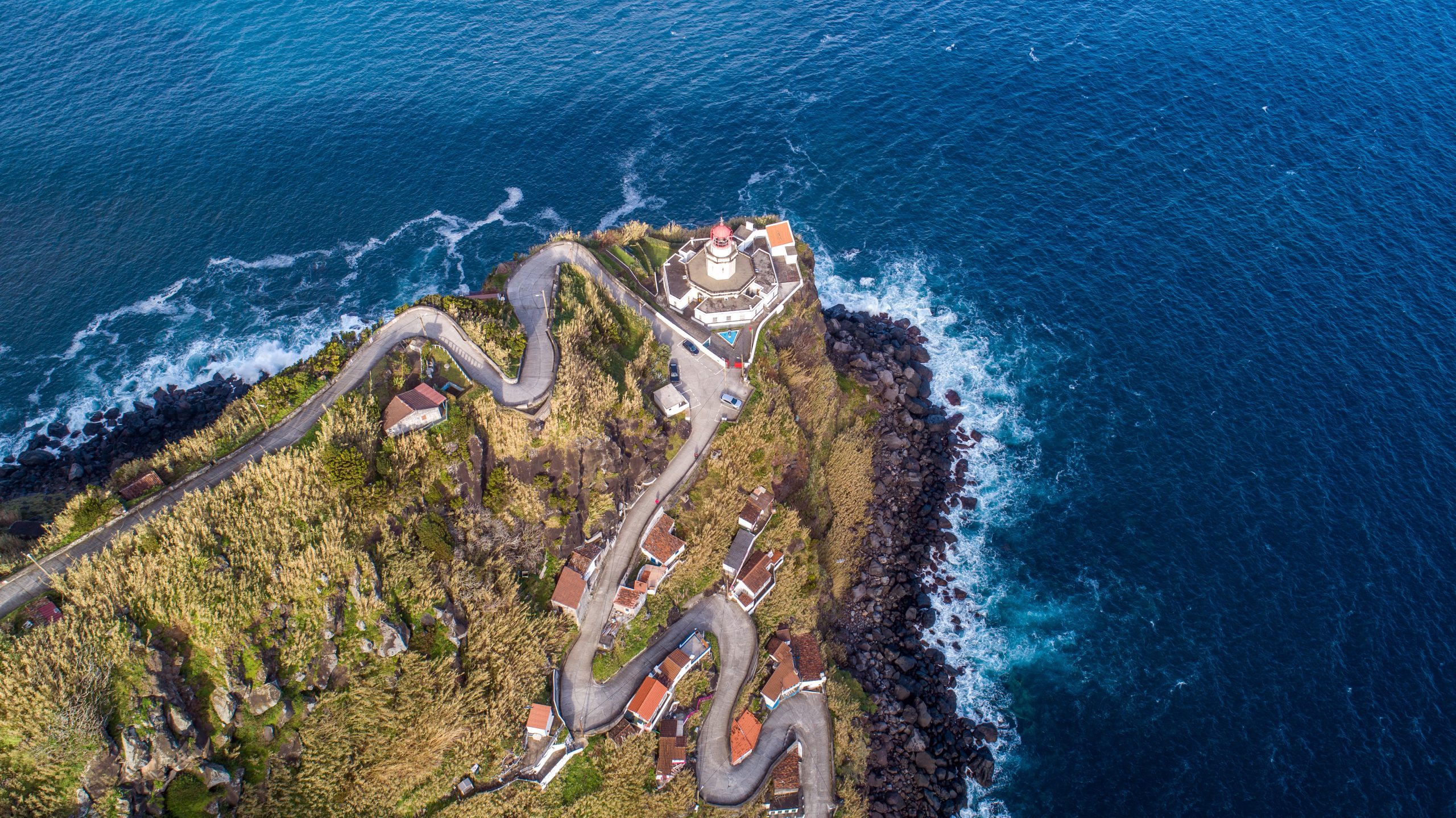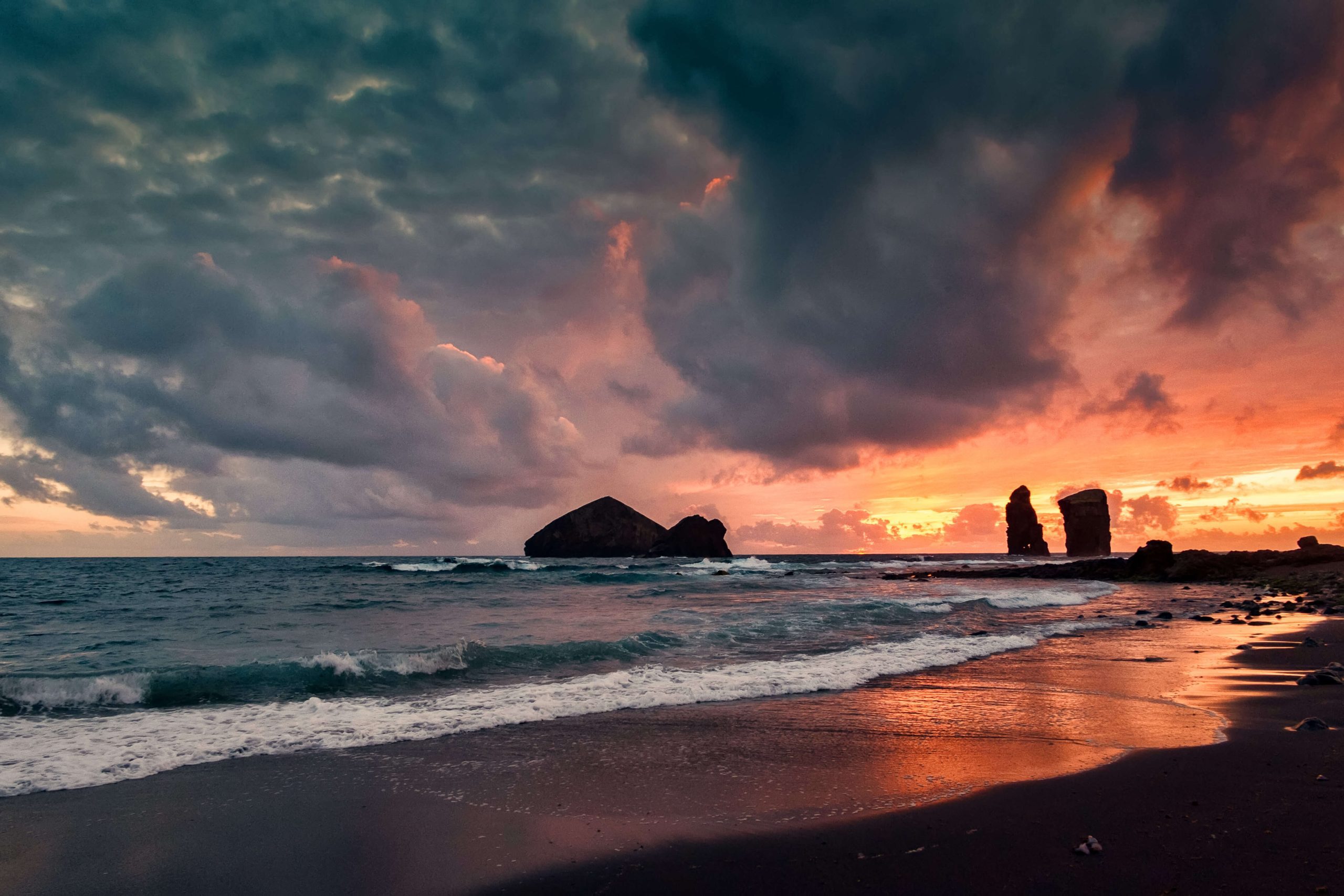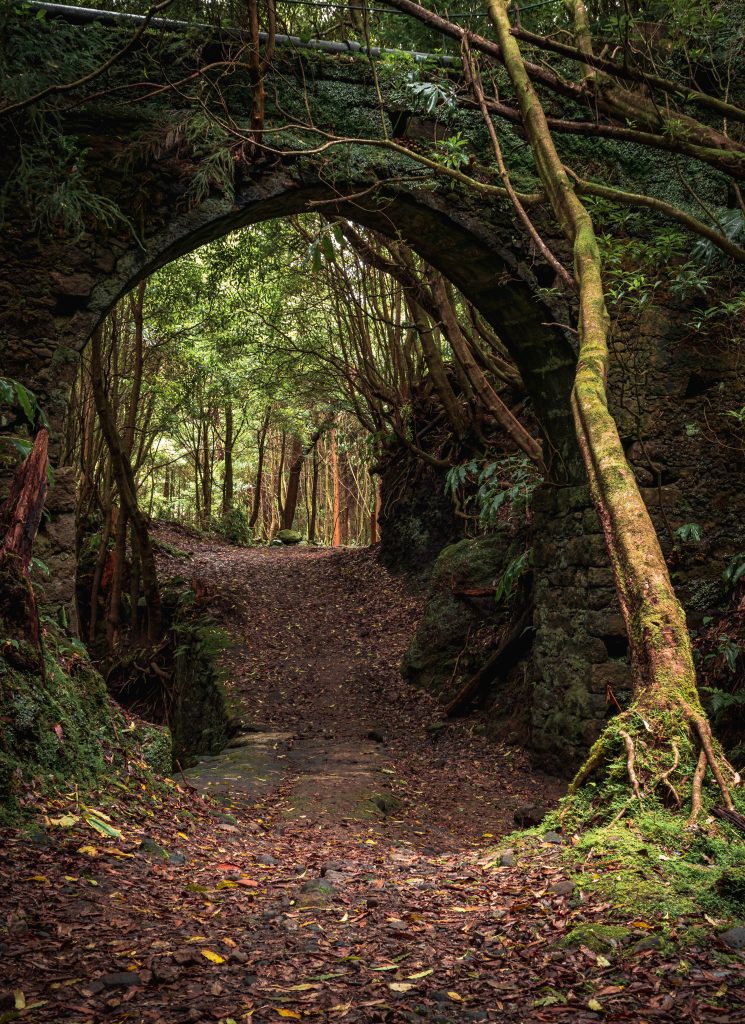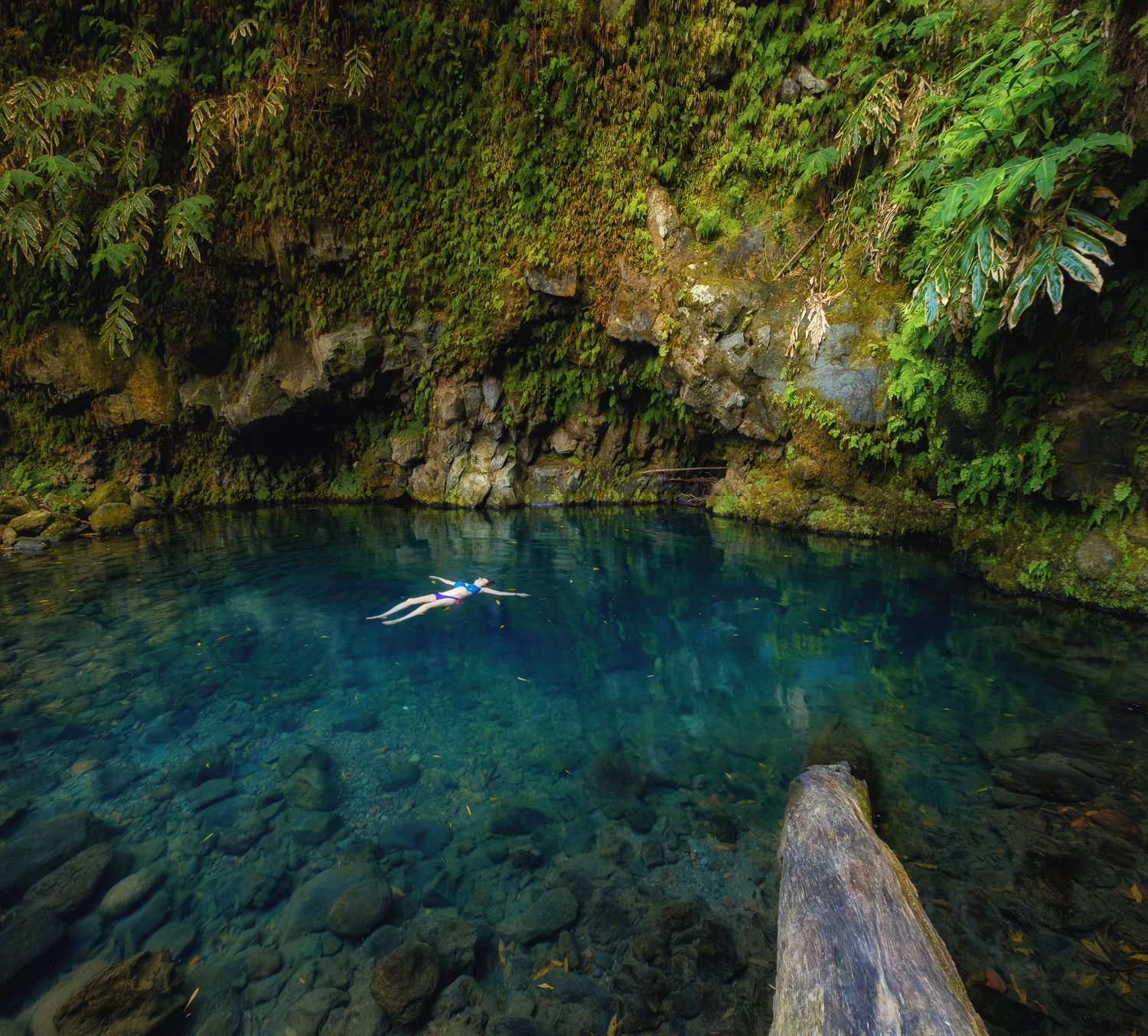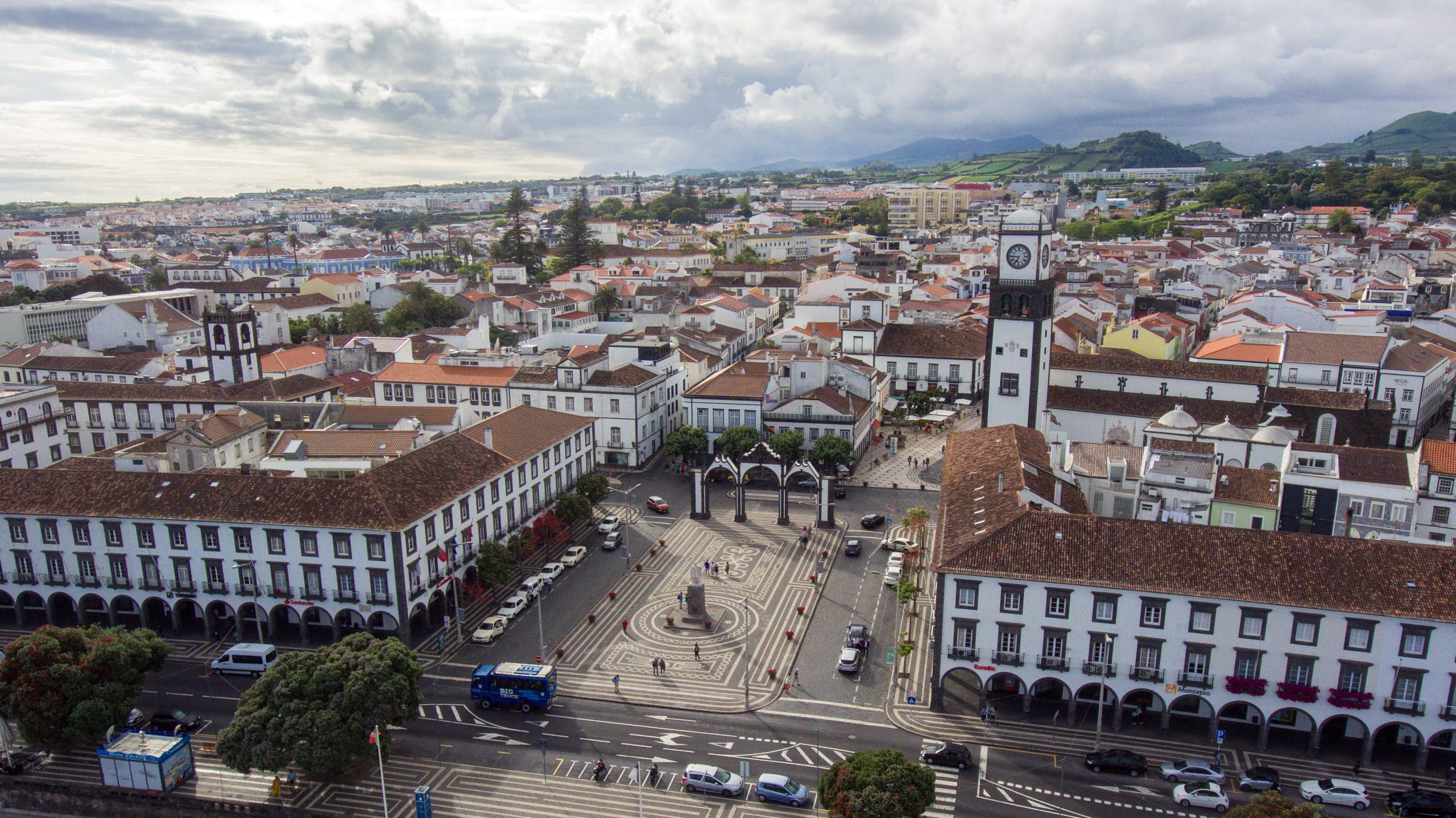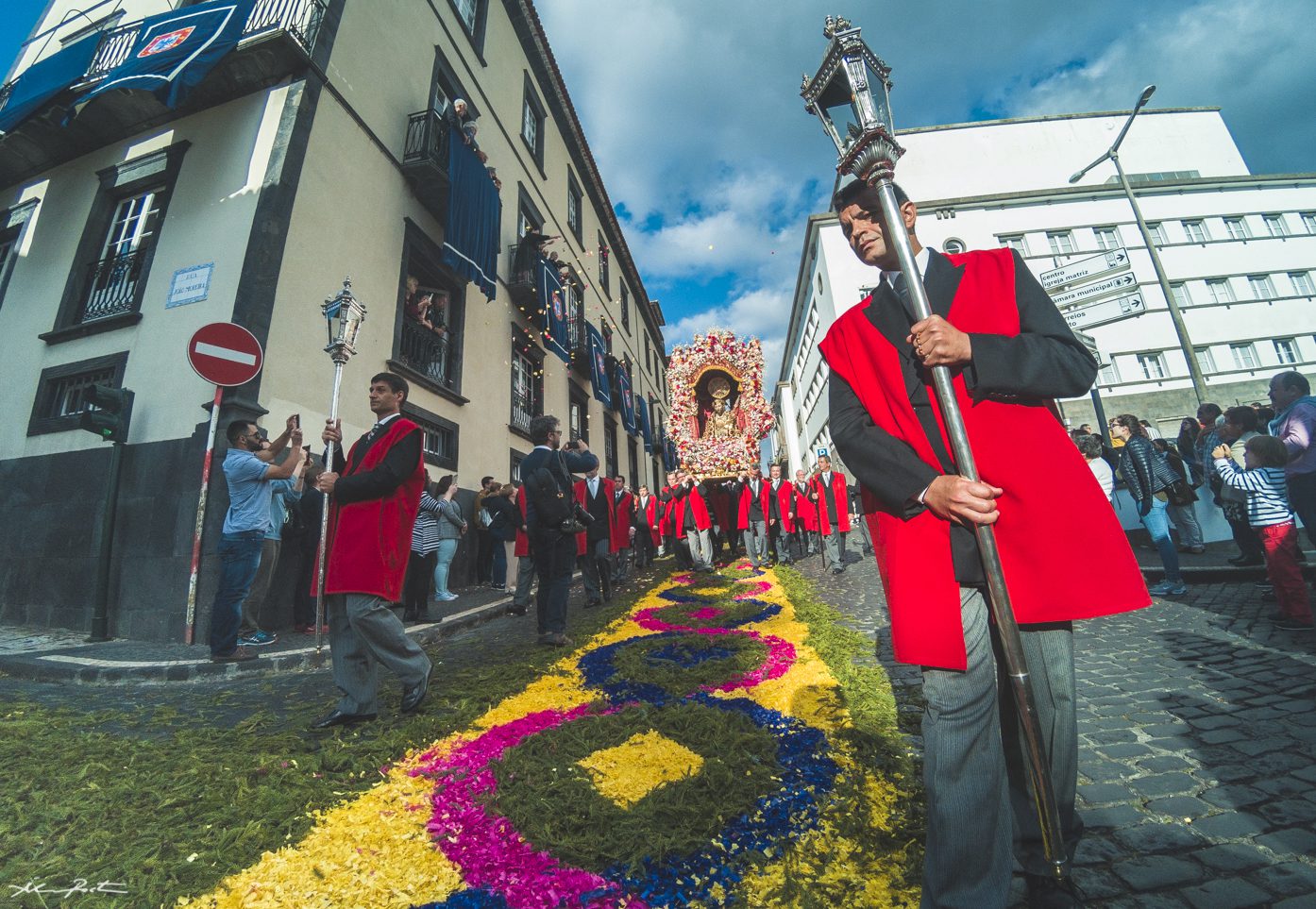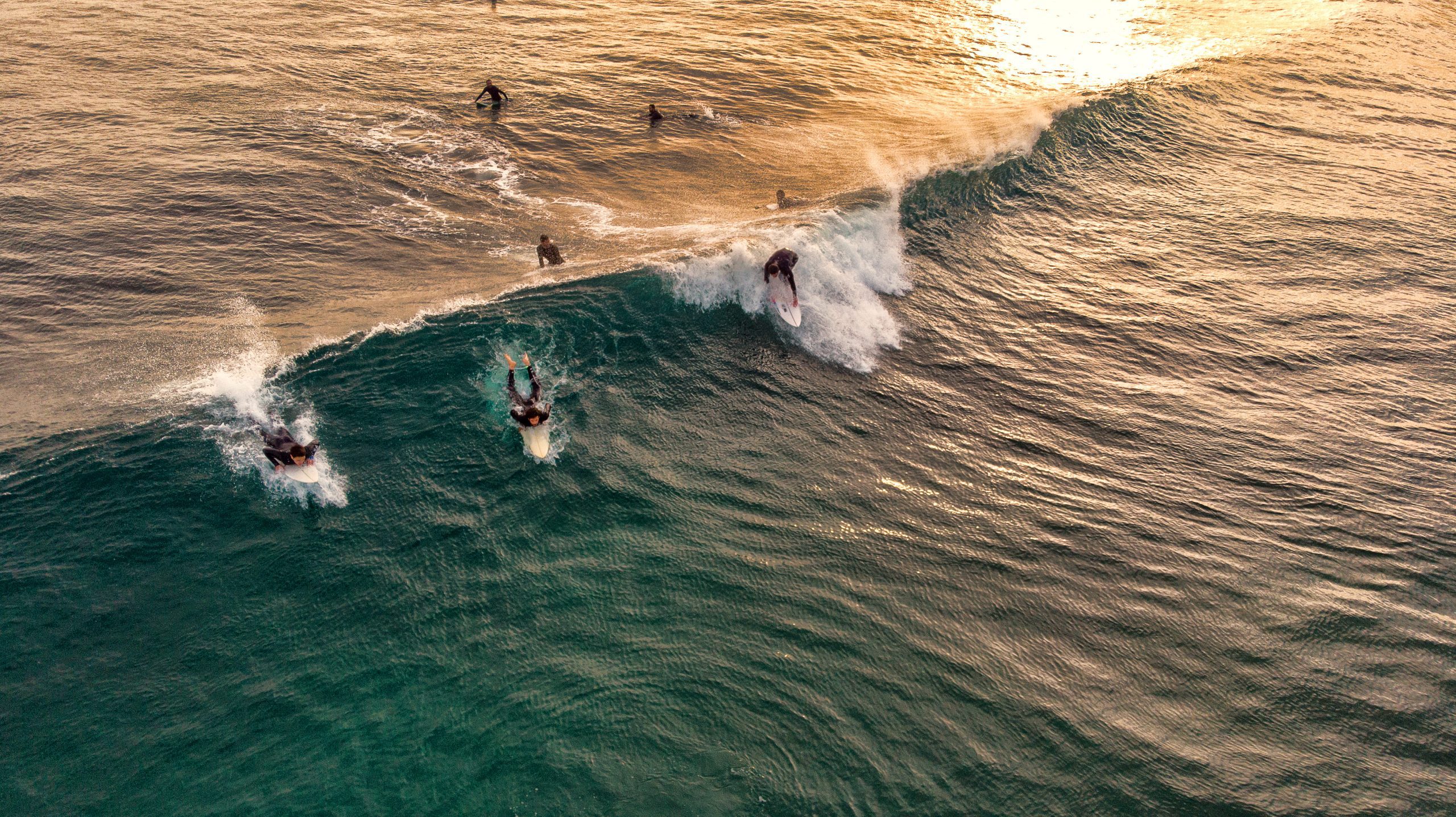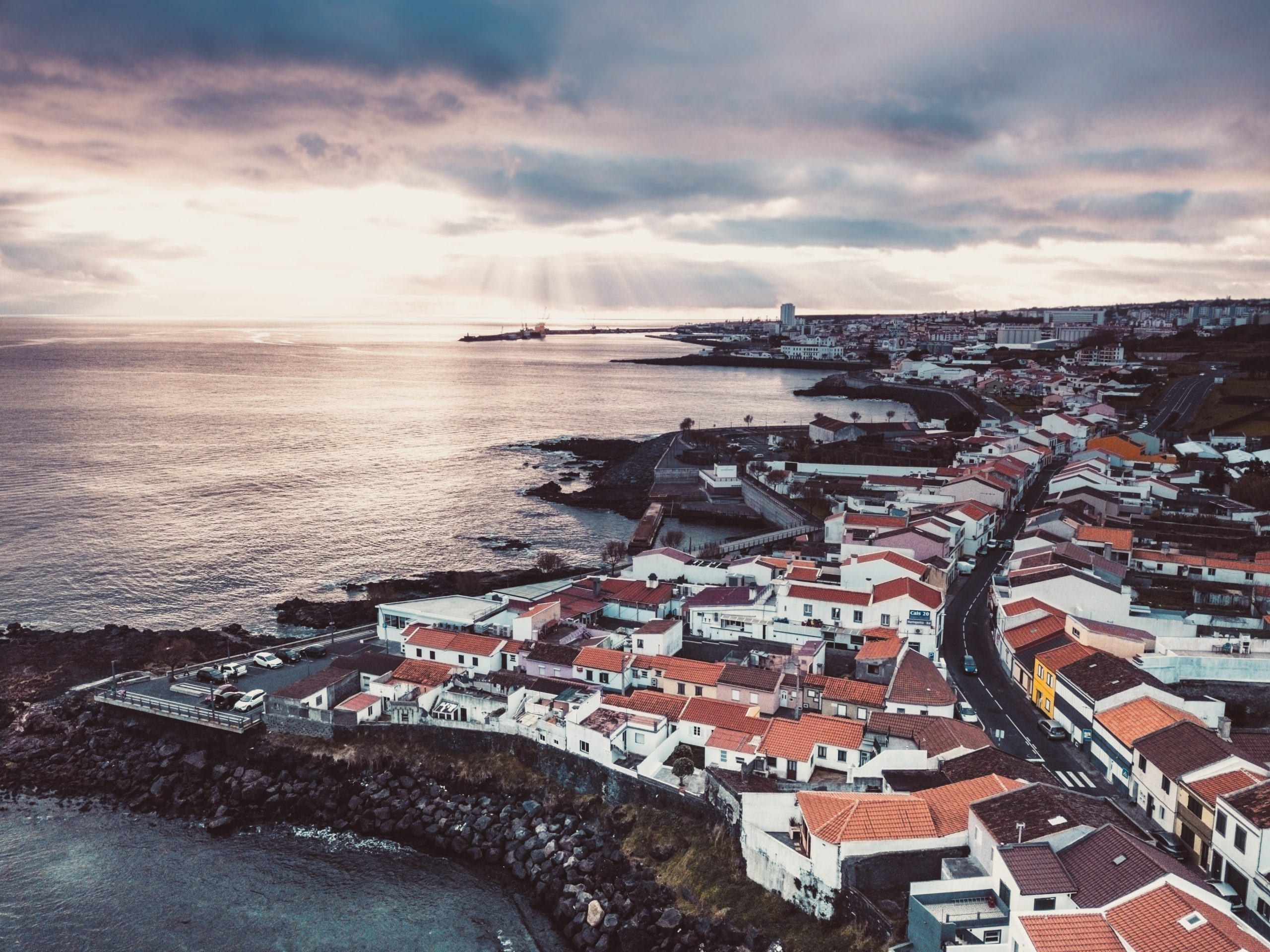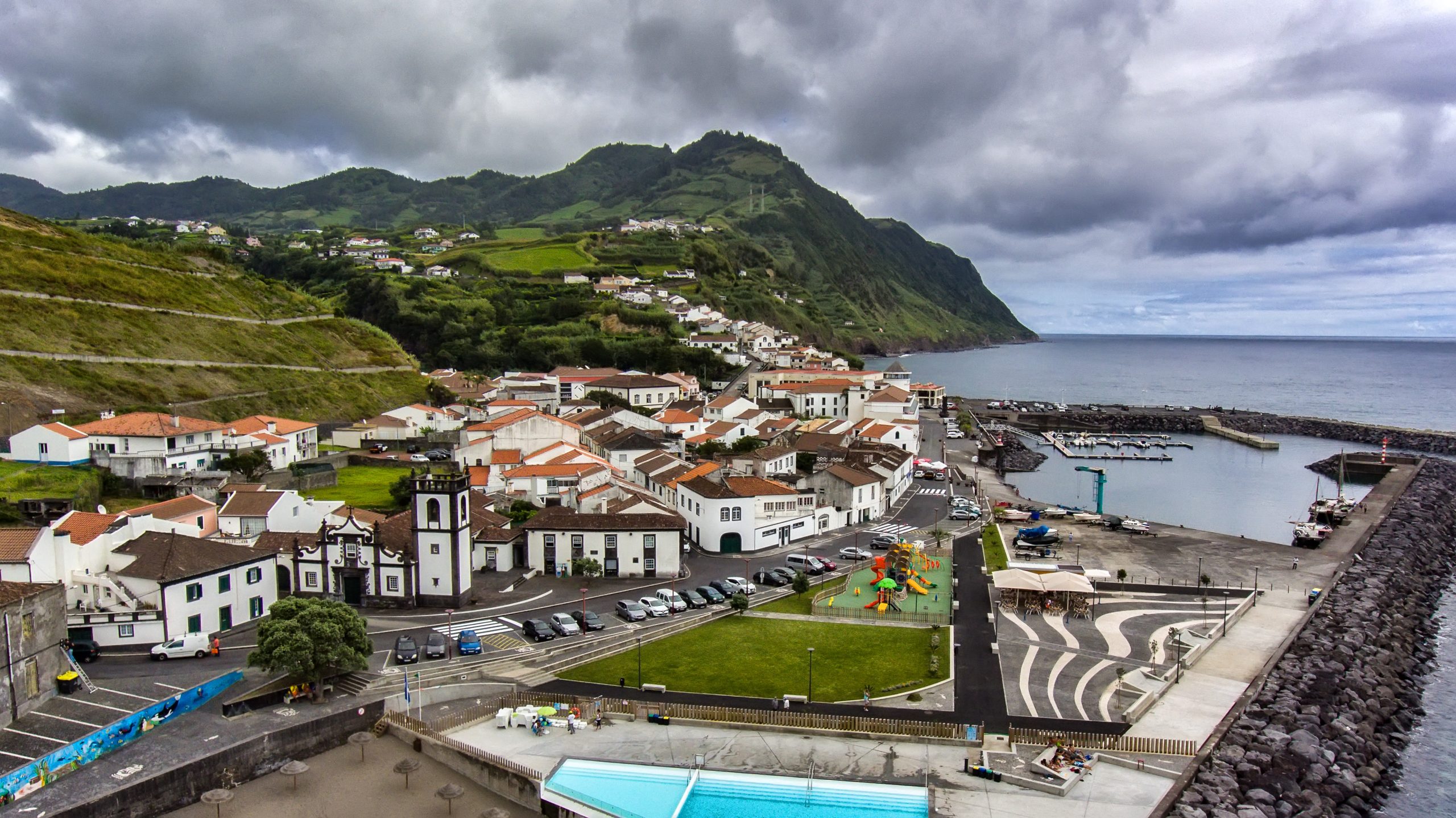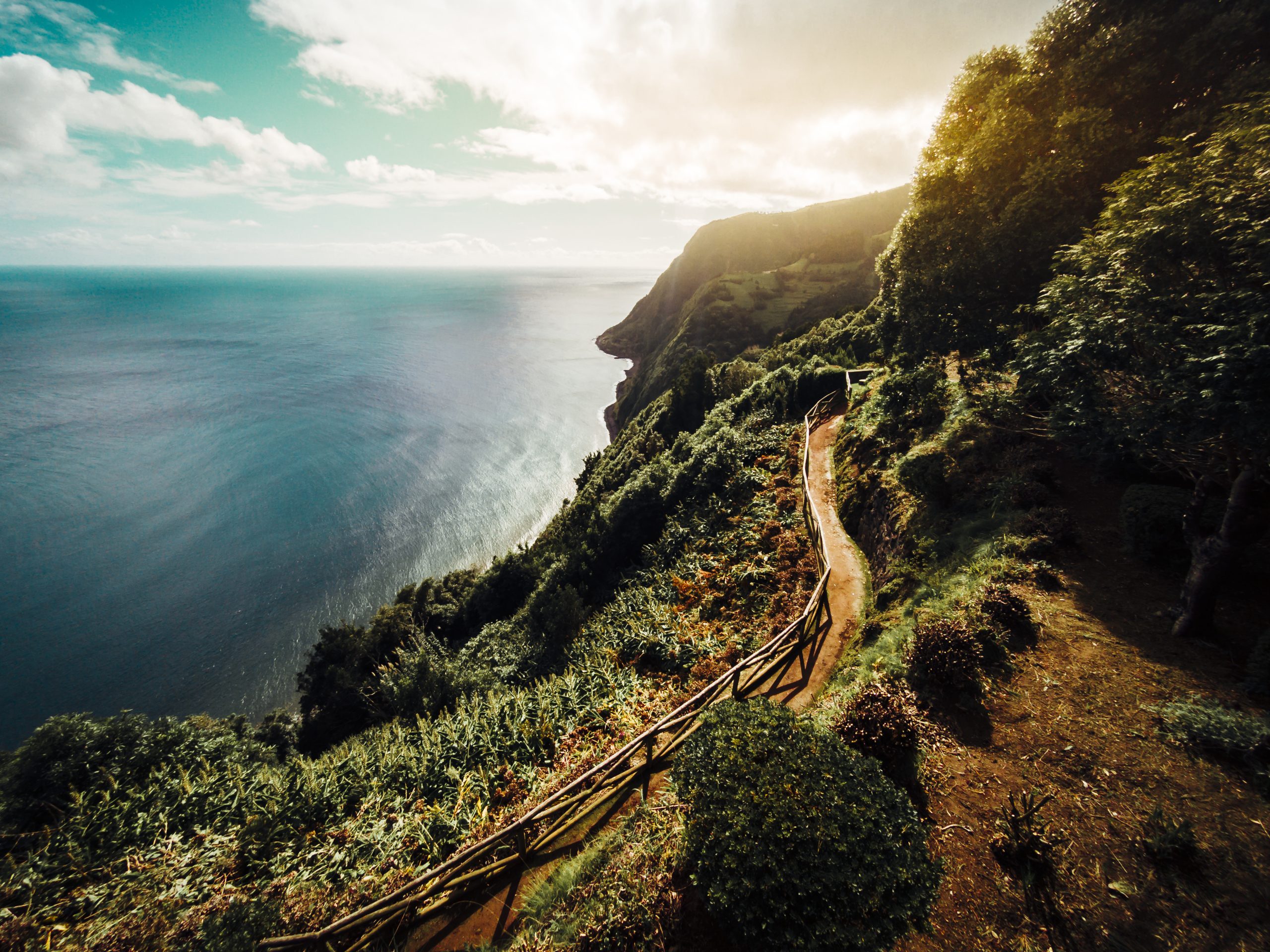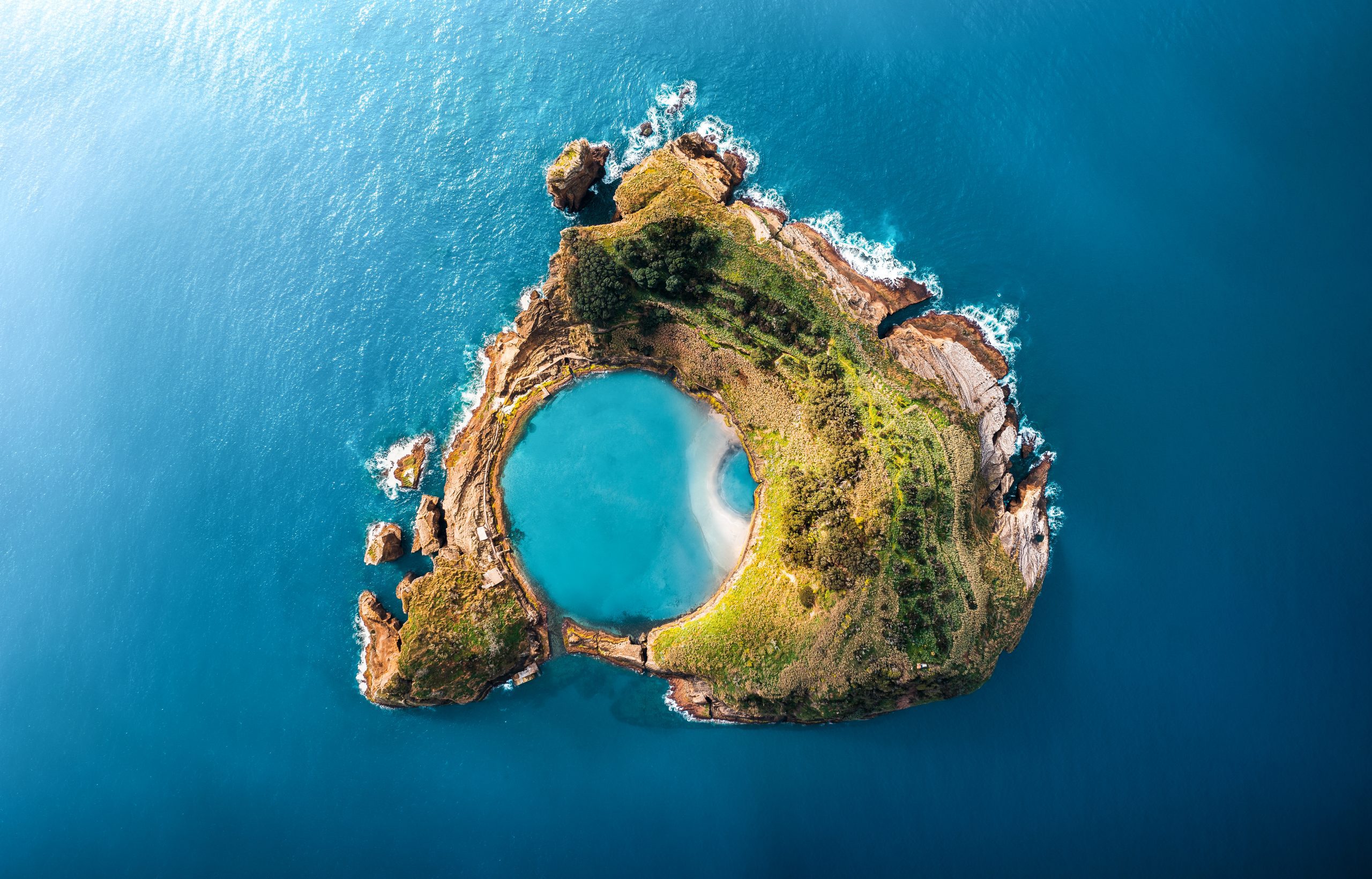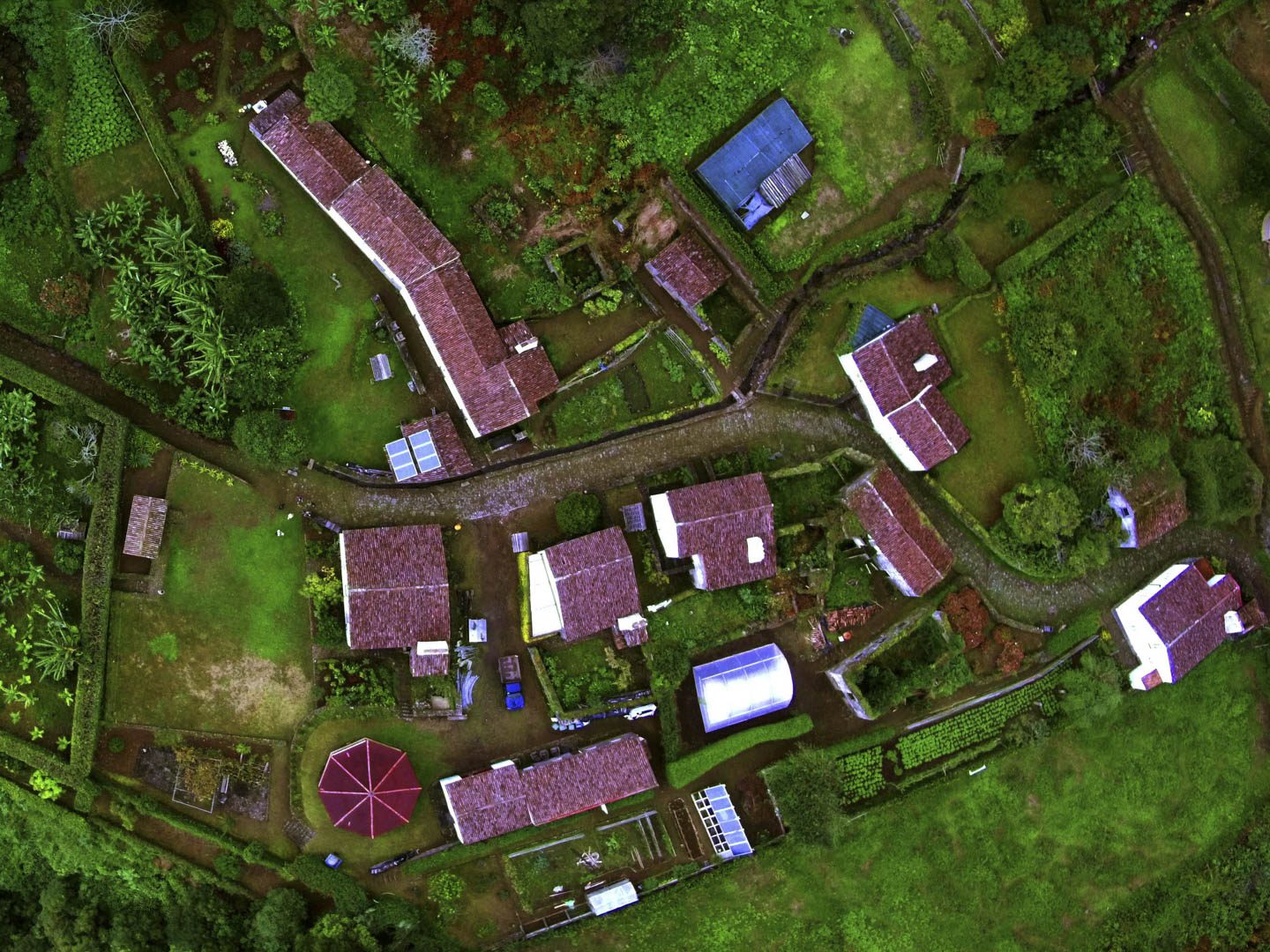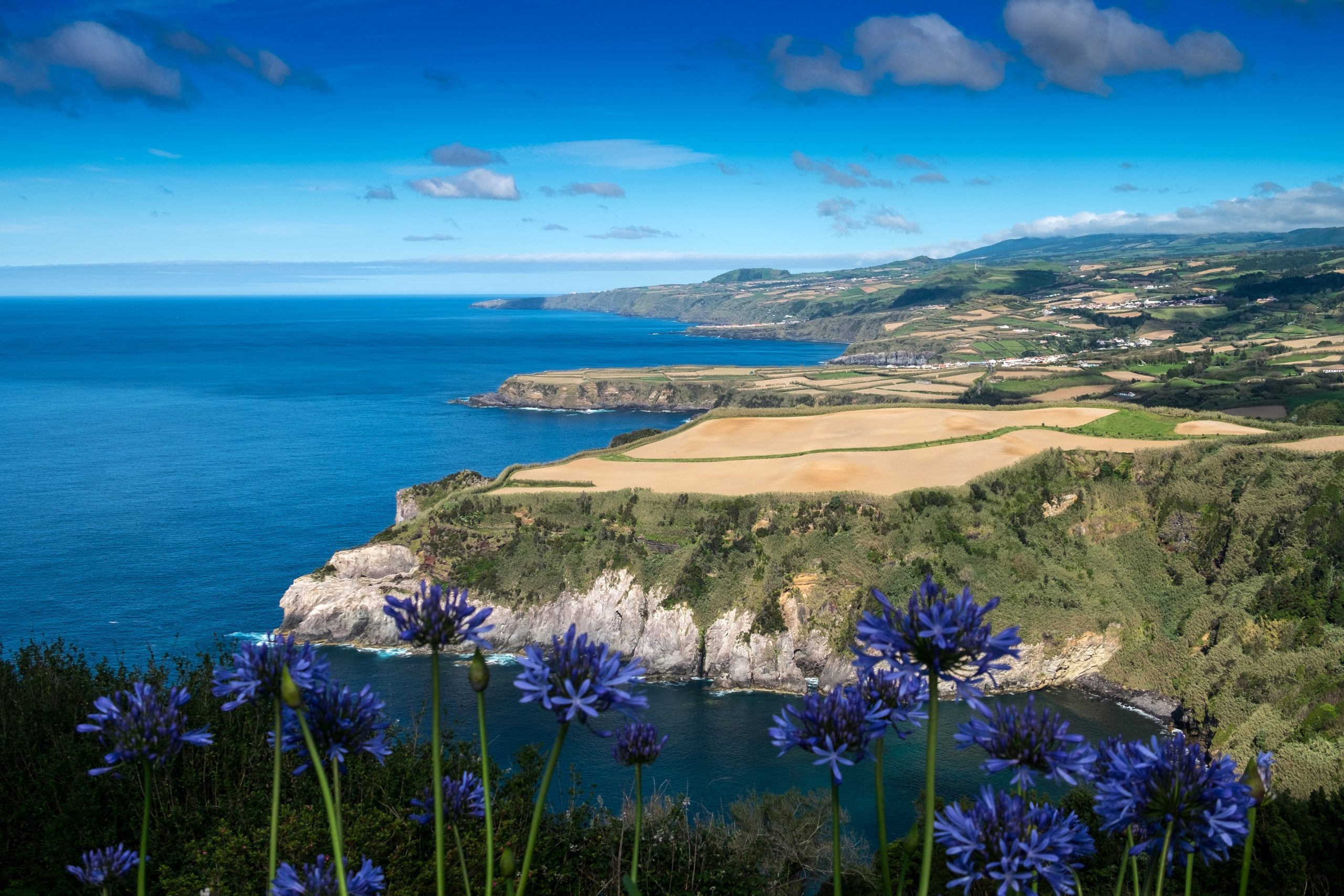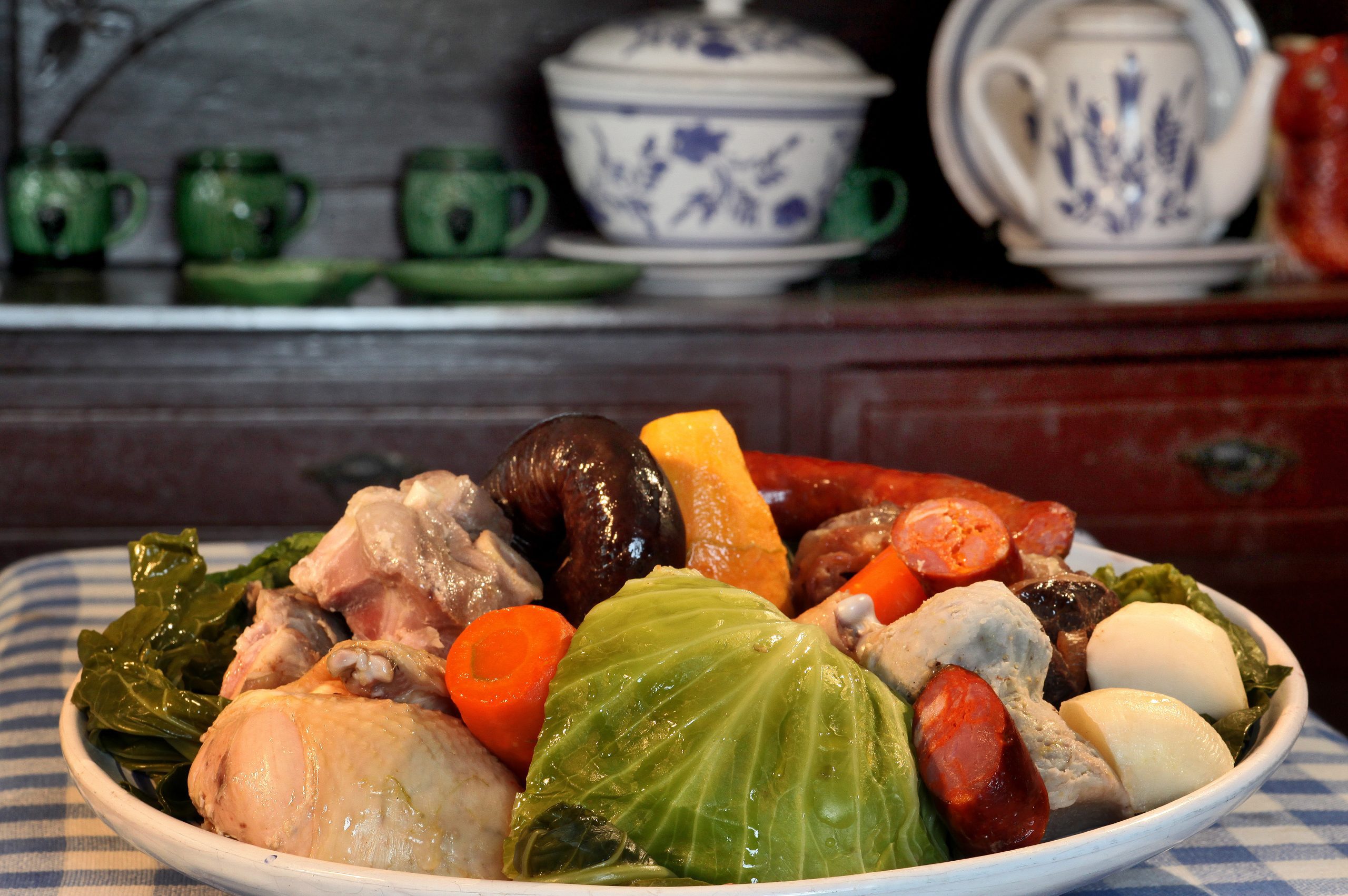Nordeste is one of São Miguel’s most enchanting regions. It offers a perfect blend of nature, tranquility, and scenic beauty. Located on the island’s northeast coast, this area is known for its dramatic cliffs and lush, flower-lined roads. Moreover, it features breathtaking viewpoints such as Ponta do Sossego and Ponta da Madrugada.
In addition, visitors can explore Parque Natural da Ribeira dos Caldeirões, where waterfalls and old watermills create a peaceful atmosphere. Nordeste is also home to Farol do Arnel, the island’s oldest lighthouse, and Pico da Vara, São Miguel’s highest peak. Together, these landmarks make Nordeste a must-visit destination for anyone seeking pure nature and unforgettable landscapes in the Azores.
What is Nordeste?

If paradise is a place on Earth, Nordeste is the closest to what it might look like. It is one of the most floriferous areas in Europe, filled with natural beauty and an abundance of exuberant flora.
The gorgeousness of São Miguel’s nature is packed inside this region on the eastern end. From a park full of waterfalls to a viewpoint made to watch sunrises, there are many things to discover in Nordeste.
History & Geography
Nordeste is a municipality and a county of nine townships located on the northeastern side of São Miguel. Some enriching activities in the area are fishing and agriculture. However, tourism is growing thanks to Nordeste’s natural beauty.
The lighthouse of Arnel in Nordeste was the first to be built in the Azores in 1876. Suppose you want to explore this wonderful region further. In that case, the municipal museum of Nordeste displays traditional objects from the daily lives of locals, highlighting a time when agriculture was the primary focus of this small town.
Fauna & Flora
Nordeste is the largest laurel forest area on the island. This region is also renowned for its vibrant, multicolored flowers that bloom in the spring and summer. The soils are fertile, and water stocks are full because of the year-round humidity.
Did you know that in Nordeste lives one of the rarest birds in Europe: the Priolo? It was seriously threatened, but thanks to the efforts of associations and projects to replant its natural habitat, it is no longer in great danger. Visit the Priolo Environmental Center to learn more about this cute little bird.
What to Do at Nordeste?
Centro de Interpretação do Priolo

For an enjoyable visit, consider visiting Centro Ambiental do Priolo. This little exposition explains the importance of saving the Azores Bullfinch, a small endangered bird that only lives in Nordeste.
Farol do Arnel

The lighthouse of Arnel, located in Ponta do Arnel, was also built at the end of the 19th century. It is still working today to guide boats along the coast.
→ Related articles: Farol do Arnel
Ponta da Madrugada & Ponta do Sossego Viewpoints

The viewpoints of Ponta do Sossego and Ponta da Madrugada are the two most famous spots to see the perfect sunrise in São Miguel. This is a great experience; you must try it if you’re staying near Nordeste.
Many people sleep near these viewpoints or drive early in the morning to witness the sun rising over the ocean. The two parks offer stunning landscapes of green cliffs that fall into the Atlantic, as well as various plants and flowers.
→ Related articles: Ponta do Sossego | Ponta da Madrugada
Salto da Farinha Viewpoint

Located in the middle of a lush forest, the 40-meter Salto da Farinha waterfall can be viewed from a viewpoint in Salga or via a trail. For an incredible sight worthy of a Jurassic Park movie, you should go there after rainy days to see the waterfall with more water. Right next to the waterfall is a picnic area, and there is also access to the ocean, where you can swim on a good weather day.
→ Related article: Miradouro do Salto da Farinha
Nordeste Village

Vila do Nordeste is a vibrant small town with a rich heritage in the Northeast of São Miguel Island. It is one of the most flowery villages in Europe, and if you visit during the spring or summer, you will see why.
When you arrive in Nordeste, you will see the Bridge of the 7 Arches, one of the most beautiful bridges in the Azores. It is an ancient structure, having been built between 1882 and 1883. It is a lovely place to stop by.
→ Related article: Nordeste
Moinho do Félix Hiking Trail

If you’re a hiking enthusiast looking for a great hiking experience, Moinho do Félix is a great spot. This 2-hour round-trip trail takes you through the forest and passes many waterfalls. It is located in the neighboring village of Lomba de São Pedro.
🥾 Recommended Tour: Hiking in Moinho do Félix
Pico da Vara

Pico da Vara is nothing less than the highest point of São Miguel Island. Reaching up to 1,108 meters above sea level, Pico da Vara can be found in the Basaltic Volcanic Complex of Nordeste, the natural habitat of the Azores Bullfinch.
The Pico da Vara nature reserve covers 1,980 hectares and is home to the Laurisilva forest. It displays a rich flora.
You can visit and hike up to the top of São Miguel Island with our guides! Join us for this beautiful experience! Please note that it is best to take this tour when there are few or no clouds for an exceptional view of the entire island.
Poço Azul

Poço Azul is a beautiful place to spend half a day exploring nature, exercising outdoors, and taking in the quiet surroundings. We will explore the various possibilities for visiting the famous Blue Lagoon in the Azores.
As several water channels, such as Ribeira, cross the area of Cachaço and Ribeira das Coelhas, it is possible to follow the water and stumble upon many small, charming waterfalls. They are not as popular as the Blue Lagoon, making them the perfect spot for pictures without too many people around.
→ Related article: Poço Azul
Praia do Lombo Gordo

If you want to relax on the warm sand, Lombo Gordo is a gorgeous black-sand beach where you can swim in the Atlantic. It is better to go in the morning and early afternoon because the sun hides quickly behind the high hills.
Ribeira dos Caldeirões

Ribeira dos Caldeirões Park is very popular among tourists who love chasing waterfalls and local families who want to spend a good afternoon surrounded by nature.
🧭 Recommended Tour: Canyoning Experience in Ribeira dos Caldeirões
Stroll along the river, visit the open-air museum, photograph the countless waterfalls, or taste the local ice cream at the shop. For those who want to experience more sensations, consider taking a canyoning tour that includes jumping, sliding, zip-lining, and rappelling down the waterfalls.
→ Related article: Ribeira dos Caldeirões
What to Do After Visiting Nordeste
Furnas

This is one of the biggest hydropolis in Europe. It combines a considerable diversity of thermal spring waters and boiling water spots. You’ll also be invited to drink these volcanic waters. It was an extraordinary experience!
The valley of Furnas is situated inside a vast volcanic crater, one of the most active on the island. Due to its unlimited beauty, Furnas’s primary sources of wealth are agriculture and tourism. This quiet place is well known by travelers and locals who choose to visit for the weekend or holidays.
Check all our articles about each one of the most relevant points of interest in Furnas: Caldeiras das Furnas | Furnas | Capela da Nossa Senhora das Vitórias | Castelo Branco Viewpoint | Lagoa das Furnas | Lagoa das Furnas Viewpoint | Mata-Jardim José do Canto | Parque Terra Nostra’s Thermal Pool | Pico do Ferro Viewpoint | Poça da Dona Beija | Ribeira Quente | Praia do Fogo | Salto do Cavalo Viewpoint | Salto do Rosal | Terra Nostra Garden
Povoação

The stunning county of Povoação boasts diverse natural wonders that will captivate any visitor. Located approximately one hour from Ponta Delgada by car, Povoação is well worth a visit, as it offers a multitude of unique landscapes that provide a sense of unity with the natural world.
Check all our articles about each one of the most relevant points of interest in Povoação: Povoação | Aldeia do Sanguinho | Faial da Terra | Salto do Cagarrão | Salto do Prego | Ribeira Quente Waterfall | Praia do Fogo | Miradouro do Pico dos Bodes | Miradouro Vigia da Baleia
Ilhéu de Vila Franca do Campo

The Vila Franca do Campo islet is a nature reserve for birds in the winter and one of the most epic beaches you can go to on São Miguel island in the summer.
🐳 Recommended Tour: Whale Watching and Explore the Vila Franca Islet
It is an old submarine volcano with crystal-clear waters in its crater, where you can swim and snorkel. This wonder of nature is open only from June to October for preservation purposes.
It is undoubtedly one of the top 10 best beaches in the Azores. From June to October, a traditional fishing boat takes you there in 10 minutes from the town’s harbor.
Check all our articles about each one of the most relevant points of interest in Vila Franca do Campo: Vila Franca do Campo | Ermida de Nossa Senhora da Paz | Ilhéu de Vila Franca | Praia da Amora | Praia da Vinha da Areia | Praia de Água D’Alto | Lagoa do Congro | Lagoa dos Nenúfares | Miradouro do Castelo Branco
Maia

Peacefulness and the smell of the ocean mix in the town of Maia. It is a quiet coastal village atop an old lava flow, featuring luxuriant nature and a rich culture and history. Maia is far away from tourist crowds and camera flashes. Discover a place locals know how to appreciate.
Check all our articles about each one of the most relevant points of interest in Maia: Maia | Gorreana Tea Plantation | Praia da Viola
Ribeira Grande

Ribeira Grande, the surf capital, is a beautiful coastal city on the North coast of São Miguel island. It is also the second-biggest city on the island after Ponta Delgada. The city’s treasures include several churches, beautiful squares where locals and tourists meet, a farmers’ market, a river, and a fascinating Azorean Emigration Museum.
Check all our articles about each one of the most relevant points of interest in Ribeira Grande: Caldeiras da Ribeira Grande | Ribeira Grande | Miradouro da Bela Vista | Lagoa de São Brás | Porto de Santa Iria | Poços de São Vicente | Praia dos Moinhos | Salto do Cabrito | Miradouro de Santa Iria | Rabo de Peixe | Pico da Barrosa | Areal de Santa Bárbara | Miradouro Vigia da Baleia | Jardim Municipal da Ribeira Grande
Complementary Information
Best Season to Visit the Azores
The Azores Archipelago boasts a unique climate that shapes its lush landscapes, making it a splendid year-round destination. With mild temperatures and minimal fluctuations, each season offers something unique. Spring averages 16 °C, summer reaches 21 °C, autumn cools to 18 °C, and winter remains mild at 14 °C.
→ For a detailed breakdown of the weather by month, check the following links 🌤️☔️: January | February | March | April | May | June | July | August | September | October | November | December
How to Get to the Azores
The Azorean Archipelago is easily accessible through numerous flight routes. Lisbon and Porto are the main entry points to the continent, with direct flights available to São Miguel (PDL), Terceira (TER), Faial (HOR), Pico (PIX), and Santa Maria (SMA). To find the best flight, use search engines like eDreams or Skyscanner. These platforms enable you to compare prices and schedules from various airlines in one convenient location.
For more details on how to get to the Azores, take a look at our complete guide. But what if you want to explore beyond your arrival island? We’ve got you covered!
- Azores airports 🛬
- Flights between islands ✈️
- Ferries between islands ⛴️
- Which island to choose? 🏝️
- What airlines fly to the Azores? 🛩️
→ Once you’ve found the perfect route, book your tickets and get ready to experience one of the world’s most stunning island groups!
Travel Essentials
Essential Information for your Azores trip: Azorean Language & Phrases 🗣️ | Currency & Banks 💵 | Credit Cards & Traveler’s Cheques 🏧 | Driving in the Azores 🚗 | Electricity 🔌 | Experiences & Tours 🗺️ | Health & Safety 🩺 | Internet & Wi-Fi Access 🛜 | Phones & Mobile Service 📞 | Post Offices & Buying Stamps ✉️ | Public Holidays 🏖️ | Shopping 🛒 | Time & Daylight 🕒 | Whale Watching Guide 🐳 | Best Island to Visit 🏞️
Useful Tools & Apps
The weather in the Azores can be variable, so it’s helpful to use some apps before visiting the islands. Spotazores provides live camera feeds from the main tourist attractions, allowing you to check the weather and plan your visit. For accurate weather predictions, use Windy or Windguru — they provide the most reliable predictions.
Video of Nordeste
Conclusion
With its breathtaking landscapes and diverse natural attractions, Nordeste stands as a testament to the raw beauty of São Miguel Island in the Azores. From the mist-shrouded peaks of Pico da Vara to the tranquil shores of Lombo Gordo beach, every corner of this region exudes a serene charm that captivates locals and travelers alike.
Whether exploring the lush laurel forests teeming with endemic flora and fauna or marveling at the cascading waters of Salto da Farinha, Nordeste offers an escape into a realm where nature thrives undisturbed. Each visit to Furnas allows you to experience its geological wonders and uncover a sanctuary that preserves the natural world in its most pristine form.
Authors’ Note
I am pleased to inform you that all the recommendations in this article are based on my personal experience and observations. As the author, I have personally visited each attraction mentioned, ensuring that every suggestion is grounded in first-hand knowledge and genuine enthusiasm.
FAQs
Nordeste is renowned for its stunning natural beauty, which includes lush green landscapes, waterfalls such as Salto do Prego, and panoramic coastal views.
Yes, Nordeste offers excellent hiking trails through its rugged terrain and forests, such as the Faial da Terra Trail and Moinhos do Félix Trail.
Nordeste boasts cultural sites like the charming Church of São Jorge, known for its unique azulejo tiles, reflecting the island’s Portuguese heritage.


